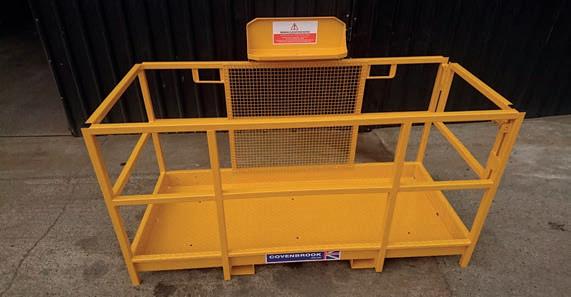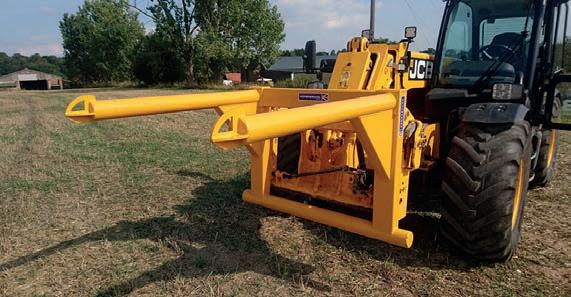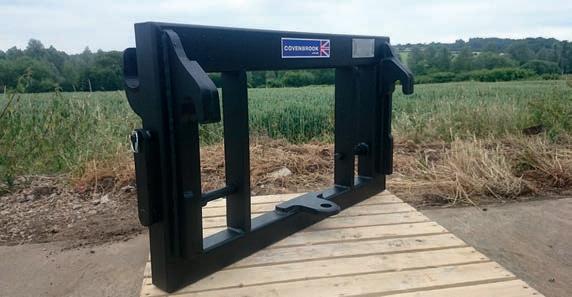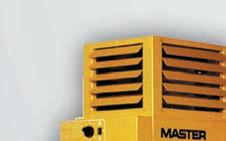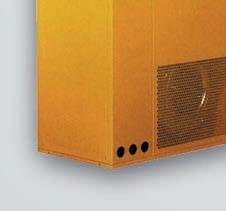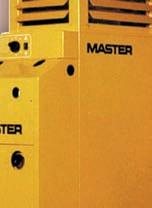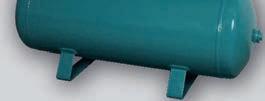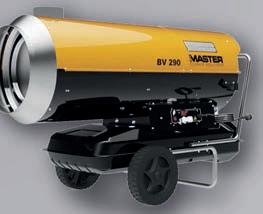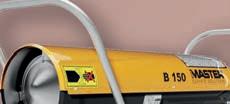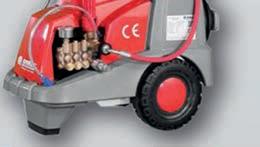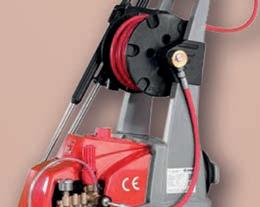




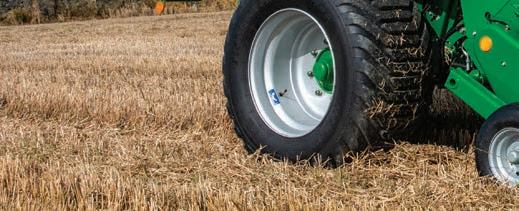



















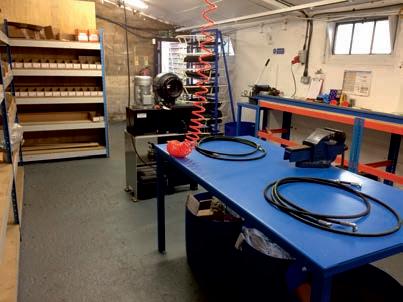
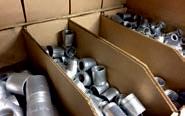




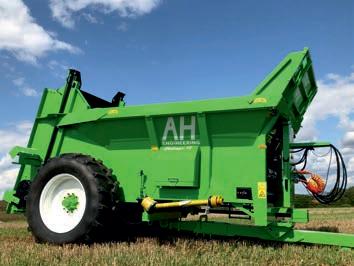
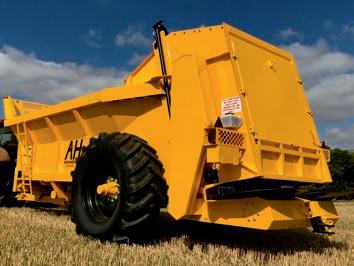












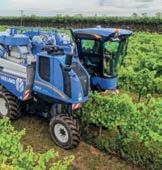








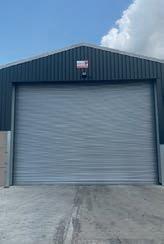
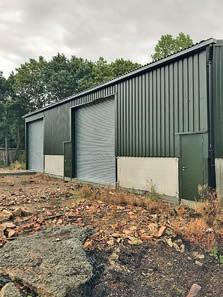






































































Farmers Guide sales executive Will Taylor travelled to the Business Innovation Show in Birmingham this month. The show aims to help farmers and landowners to make more money from their land, via diversi cation and innovation. Pictured on the Wigwam Holidays stand are (l-r): Site owner Wigwam Holidays Charnwood Forest, Steve Small; copywriter and content creator, Helen Burt; site owner Wigwam Holidays Charnwood Forest, Clare Small; marketing manager, Morgan Gulland; managing director, Charles Gulland; B2B sales and marketing executive, Rory Watt; and Will Taylor.
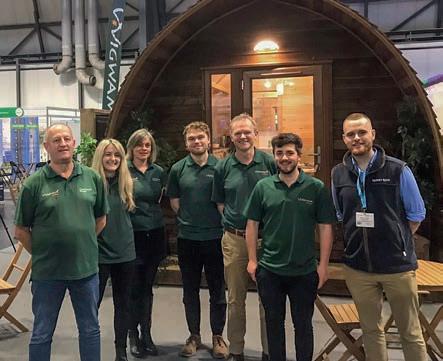

The latest New Holland T7.300 tractor was launched publicly at the French Sima Show in November, but David Williams got to see it perform in the eld beforehand. Find his write-up on page 51.




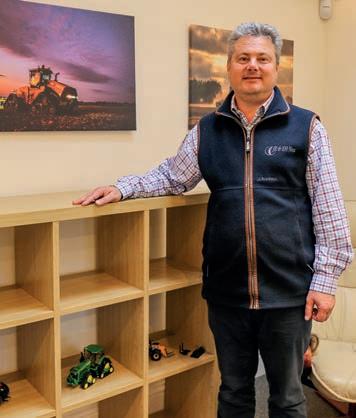



Pictured with
Northants-based dealer Attle eld Farm Machinery. See our January edition for a full report.
Rachel Hicks chatted with north Essex farmer James Nott to discuss how he’s making a grain maize break crop so pro table, despite the extreme weather this summer – read the article on page 26. David Williams also attended to report on the grain maize being harvested – you’ll nd his part of the story on page 58.
An elderly farmer received a letter from the Department for Work and Pensions, stating that they suspected he was not paying his employees the statutory minimum wage and that they were sending an inspector to investigate.
On the appointed day, the inspector turned up. “Tell me about your sta ,” he asked the farmer.
“Well, there’s the farm hand; I pay him £240 a week and he has a free cottage,” he replied. “Then there’s the housekeeper; she gets £190 per week along with free board and lodging.
“And then there’s the half-wit. He works a 16-hour day, does 90% of the work, earns about £25 a week and, as a special treat, occasionally gets to sleep with my wife.”
“That’s disgraceful!” said the inspector. “I need to interview him immediately!”
“That’ll be me then,” replied the farmer.
David Williams attended an exclusive press launch of new Deutz-Fahr 6.4-series models at the Deutz-Fahr factory at Lauingen, Germany in late October. He is pictured on the production line with SDF chief operating o cer Alessandro Sapio (centre) and SDF UK country manager Graham Barnwell. Farmers Guide’s sister publication, Fruit & Vine Magazine, was o cially launched at the National Fruit Show in Detling at the beginning of November. The team spent two successful days at the event, nding out the latest innovations and news in the fruit industry. Deputy editor Sarah Kidby is pictured on a tour of Su olkbased Braiseworth Orchards with owner Jeremy Linsell, who she interviewed this month for the second issue of Fruit & Vine magazine which lands in December. Spearhead director of sales and marketing Antony Prince, David Williams attended a working demonstration of new side-arm hedge cutters and heavy-duty stubble and grass mowers from Spearhead at David also reported on the opening of the new Ben Burgess Oakham depot. Pictured (l-r): Ben Burgess company director Ben Turner, David Williams, Ben Burgess Oakham branch manager Robert Burdock, John Deere division sales manager Joedy Ibbotson and Ben Burgess John Deere dealer principal Ben B Turner. Read the full report next month.Performance on a new scale. Packed full of technology, such as a newly developed engine with Fendt iD low-speed concept, the intelligent VarioDrive driveline with variable all-wheel drive, combined with high-performance hydraulics with a delivery rate of up to 220 l/min, make the Fendt 700 Vario Gen7 a pioneer in the 200-300 hp class. Learn more: fendt.com/nextgen700








Noventum Power Limited is one of the leading large-scale renewable energy companies in the UK









We will work with you, helping you towards developing your land into an income generating asset that can provide additional income streams for your business.
The benefits include:


• Diversifying revenue streams away from farming or other land uses






• Deploying solar power or wind turbines on your available land

• Maintaining agricultural use through sheep grazing when possible
We are looking for sites between 50 acres and 200 acres, ideally close to a nearby grid connection
Land should be relatively flat and Grade 3 or lower
Well screened by hedges and a good distance from residential property Not in a valued landscape or near historic buildings
We have a team of experienced, highly proficient renewable energy experts. They have an extensive record which encompasses the following:
Land Acquisition Investment Construction Energy Storage Planning and Permitting Grid Solutions Power Engineering & Grid Connections
Operation and Maintenance
If you would like to discuss how to potentially earn a secure and long-term predictable income stream from your land, please get in touch and contact us on:
As the world gets used to extreme market volatility, created by the ongoing logistical issues surrounding the war in Ukraine, I wonder how many of you are considering your next move – be that in selling your remaining 2022 crop or even your 2023 and 2024 options? So asks Open eld’s head of compliance, shipping and research, Cecilia Pryce (right).


However and whenever you decide to sell your grain is a very personal thing but, with the current daily price volatility are you really con dent you are getting the best price? Historically, market price movement was limited to a few pounds a week, with a forward price which was usually larger than the spot value; but this year we have seen a real mix of prices. How many of you realised that the November 2022 London wheat futures contract moved in a £17 trading range in just one day in early March? In fact, the average daily move since the invasion on 24th February, i.e. the average daily price move, from high to low, has been £6.80, but prior to that date it was just £1. It’s a sobering thought; not just for farmers selling grain, but for buyers who need grain to feed livestock or make bread. Getting the day and time wrong is no small issue when you have to then price the goods through to nal consumer, be that through feeding livestock and selling meat or buying grain for ethanol. Everyone is in the same boat.

In early November, the lifetime average price of the November 2022 London wheat futures contract was £211.65, with a high of £351.50 on 17th May. The uncertainty of supply of any commodity which is taken for granted, and has an element of inelastic demand, is always going to result in price escalation; but what happens next is the question everyone is asking.







The answer is, unfortunately, relatively impossible to predict and comes down to politics and Mother Nature. As the Southern Hemisphere crops approach maturity, the world will start looking south to see if the various Brazilian, Argentinian, and Australian crops reach expectation. Can they and will they ll any of the Northern Hemisphere’s shortfalls? More importantly, will they also have the logistics and political desire to export their crops and, if they don’t, what price impact will that have closer to home?
The questions keep coming but even on our own back doorstep we
must face our own domestic issues. The uncertainty over bird u, the state of the pig industry, the price of feed and the lack of silage – not to mention the ability of the UK consumer to pay for higher priced goods – is a constant worry for all in agriculture. The country will need to consume, but just how much can be pared back or will be forced back? If we believe the UK cereal crop numbers, then we should have enough to help feed others globally. That’s the beauty of relatively free trade, but what happens if we get to the spring and nd the cupboards are empty?





The need for timely and accurate UK statistics is vital. Over the years, Westminster gave up worrying as we always had enough. What surprises me more than anything is that if we have all digital tools in the world, are we ready to believe other countries’ crop numbers yet have very little con dence in our own? Furthermore, the UK can’t publish an o cial crop number until 15th December, halfway through the trading year. Is this really acceptable, and does it send out the right message to anyone or does it just add to the price volatility? Never has it been more important to have a farm marketing plan and make sure

you are speaking to and dealing with the right people.
Recent softening in PK pricing has created a buying opportunity at signi cantly reduced levels compared to late summer, comments Open eld’s fertiliser manager, Lucy Hassall. Due to the current costs of inputs, soil pH should be considered as a starting point to ensure crops are receiving optimal nutrition. pH is key to maximising the value of fertiliser applications with a target of 6.0 for grassland and 6.5 for arable. Lime applications should be used as the primary input where soils are below optimum levels. This will allow nutrient uptake where it could otherwise be ‘locked up’ in the soil when not at target and will help to ensure there is no nancial waste from applying the product.
When carrying out a basic soil test for phosphorous, potassium and magnesium, a pH value will also be included. PK holidays can be more costly in the long run when building back up to target levels, and can have an impact on the overall value returned with potential yield losses. FG





































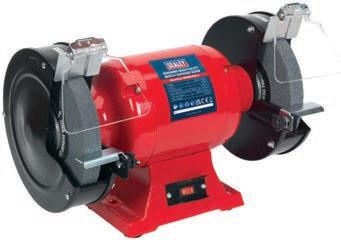






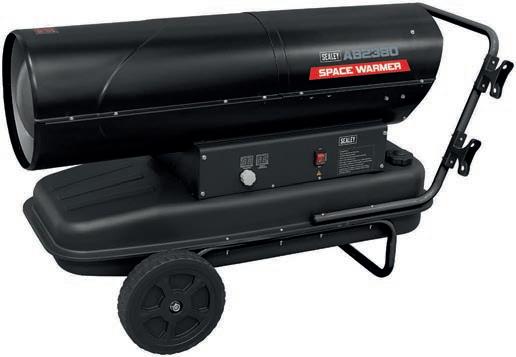




















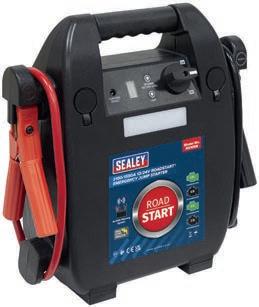




A new collaboration with Taylored-Agri has opened up a range of further development opportunities for Yara’s wellestablished precision agri-tool, the N-Sensor.
Taylored-Agri will now be the customer-facing party for all UK and Ireland N-Sensor users, and will look after sales, training and servicing.
In practical terms this is hugely positive for farmers, as the two companies have a strong shared vision for the ongoing – and


extensive – use of smart tools in agriculture. Around 1.25M hectares are currently scanned by the N-sensor each year, so it is hoped this development will provide a tangible boost to UK farming.
Alan Rix, sales manager at Yara, commented: “Satellite imagery is undoubtedly the entrée to precision farming. The N-sensor however takes this to another level allowing farmers to measure a crop’s nitrogen requirement in real-time and variably adjust
the fertiliser rate to suit the crop’s development. With partnerships like the one with Taylored-Agri, we are con dent that the data collected by the N-sensor will prove to be of even greater bene t to farm e ciency and productivity."


Five machinery dealers from across the UK have been honoured with this year’s Krone Dealer Awards. Taking the title of overall Dealer of the Year was Scottish business, George Marshall Tractors. Krone UK managing director, Marcus Oliver, explains that the award was judged on the dealer’s overall commitment to the brand, product representation across the range, aftersales care, parts stocking and business development.
Among the winners, Carr’s Billington was awarded for Sales Dealer of the Year.
On 14th October, the new production facility for Fendt loader wagons was o cially opened at the Wolfenbuttel site in Germany. The inauguration of the development and production site was attended by representatives from politics and business, employees of the site, as well as customers and sales partners. On Saturday, 15th October, an Open Day was held at the plant, where the citizens of Wolfenbuttel and interested people from the
region could visit the new production lines.
Roundbalers have been manufactured on the factory premises in Lower Saxony, Germany, since 1899. In 2017, Agco/Fendt acquired the traditional baler site in Wolfenbuttel (formerly Welger Werke). Since then, more than €20M has been invested to build a modern and sustainable development and production site.
Since September 2022, all models of Fendt loader
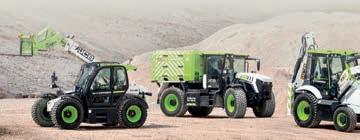
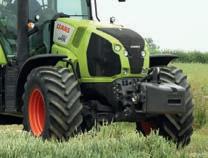
wagons have also been assembled in Wolfenbuttel in a 4,200m2 production hall. A further 10,000m2 of logistics space has been added for the loader wagon assembly.
The highlight of the opening was the handover of the rst Fendt Tigo manufactured in Wolfenbuttel to a Dutch farmer. During the subsequent factory tours, the invited guests were able to see the loader wagons and round baler assembly for themselves.
group after-sales manager, commented: “Myself and all of the team at B&B Tractors would like to congratulate Brad in his achievement of runner up in the LE-TEC Technician of the Year Award and we would also like to say well done to all the other candidates who entered.
“This award helps to con rm Brad’s passion and commitment to the job, and proves that the AGCO
apprenticeship programme along with hard work, dedication and the support of an employer is a great route to becoming a master technician.
“We would like to say a huge thank you to Brad for delivering rst-class customer support, with the assistance of our after-sales teams, and I’m sure there will be more awards to come for him.”
Krone also recognised Lincolnshire-based JPM Agricultural Ltd with the New Dealer of the Year Award, for its success in making it into the top 10 dealers for turnover in its rst full year of supplying Krone products. The award for Service Dealer of the Year was presented to Compass Tractors Ltd in the South West.
Finally, the Ambassador of the Year Award was presented in memory of Krone employees, Rodney Benson and Darren Metcalf, who both sadly lost their battles with cancer earlier this year.

“This year’s award was presented to Tim Adcock from Chelmsford’s Adcock Agri Ltd, who has displayed an infectious ‘can do’ attitude, which cascades and manifests itself throughout his team and truly works in partnership with Krone, in a exible but driven manner,” said Marcus.
JCB has unveiled a world rst for the industry – a mobile hydrogen refueller, providing a quick, easy way for customers to refuel machines on site. Around 97% of construction machines have fuel delivered to them while working on site. This means customers are already used to a transportable fuel, allowing refuelling to take place in minutes.
The rst hydrogen-powered machine to be unveiled was a JCB backhoe loader followed, a year ago, by a Loadall telescopic handler.
The technology went on to be shown in the Green Zone at COP26 in Glasgow as world leaders debated measures to drastically reduce greenhouse emissions.


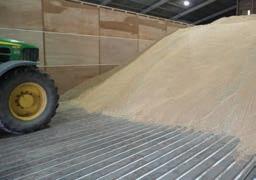


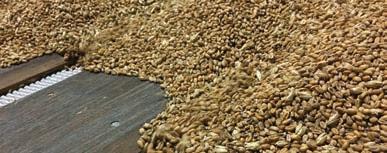
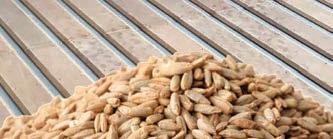


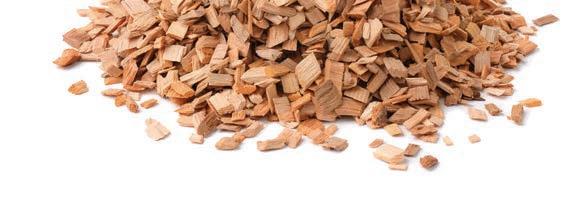



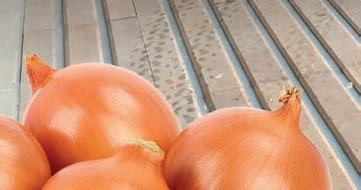
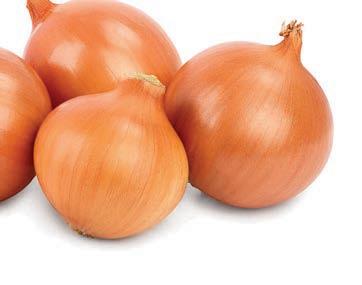


The choice of training for farmers and trainee pest controllers to become recognised competent users and authorised purchasers of professional grade rodenticides has been updated in conjunction with the Campaign for Responsible Rodenticide Use UK (CRRU).
For farmers and pest control trainees, there are now seven courses in total. In each case, passing the end of course exam yields a formal quali cation/certi cation accepted at point-of-sale for
professional use rodenticides under the UK Rodenticide Stewardship Regime, operated by CRRU.
The seven courses are:
• RSPH/BPCA Level 2 Award in Pest Management
• RSPH/BPCA Level 2 Certi cate in Pest Management

• City & Guilds NPTC Level
2 Award in the Safe Use of Pesticides for Vertebrate Pest Control for Rats and Mice
• Lantra Awards Level
2 Award in Rodent Management
• Killgerm Principles of Rodent Control (Exam through BASIS)
• RSPH Level 2 Award in the safe use of rodenticides
• BPCA Using Rodenticides Safely (Exam through BASIS).
The BASIS Rat Control For Gamekeepers course also remains available.
View the list online here www.thinkwildlife.org/ training-certi cation/
The number of agricultural tractors registered in the UK in October was up by more than a quarter, compared with the same month last year, at 926 machines. That is the fastest year-on-year rise since August 2021 and the monthly total is the largest for the time of year since 2016. October was the third month in a row when registrations were above the seasonal average over the previous ve years, with

10% more tractors registered this year than in a typical October. It remains to be seen whether the upturn is just a short-term one or if it indicates that supply chain disruptions are beginning to ease. These have meant 3% fewer tractors have been registered so far this year than in January to October 2021, despite demand remaining strong.
Month: 926 units +25.3% change (compared with October 2021).
Year to date: 10,223 units -3.5% change (compared with January-October 2021.
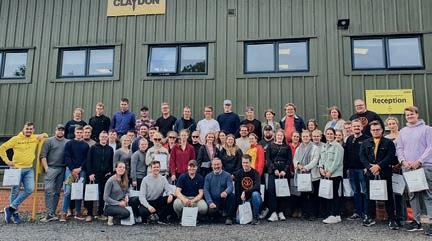
Agricultural machinery manufacturer Claydon recently welcomed 50 agricultural students from the University of Helsinki. The visitors came to learn how direct strip seeding could enable Finland’s farmers to operate more e ciently and better utilise the limited time available to establish autumn and spring-sown crops. The visit took place at the Claydon factory in Su olk in the East of England. After seeing the company’s Evolution mounted and Hybrid-T trailed drills, Straw Harrows, TerraBlade inter-row hoes and TerraStar light rotary cultivators being manufactured, the group toured the Claydon family’s 325ha arable farm which produces a range of combinable crops.
Hosted by company founder and chief executive Je Claydon, the students’ nine-day tour took them to six cities in England, Scotland, and Wales, including London and Edinburgh. They also visited numerous farms, an agricultural museum, the JCB factory, a distillery, Rothamsted Research in Hertfordshire, and Syngenta’s Jealott’s Hill International Research Centre in Berkshire.
The supply of winter bean seed in Britain has been secured following a successful derogation bid led by the Agricultural Industries Confederation (AIC).

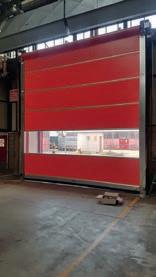



Biox-M manufacturer, Juno (Plant Protection) Ltd, says it is delighted to report that Xeda International SA has received approval for a minor but entirely sensible change to the label for Biox-M in the UK. Biox-M is 100% spearmint oil applied to stored potatoes as a hot fog.
The change con rms permission to use variable rates of Biox-M to suit the condition of the crop and of
the store.
The revised wording on the label will be:
Dose rate: 30–90ml/ tonne depending on sprout size and application interval. Repeat applications may be made at a minimum of 21-day intervals. A maximum total dose of 360ml/tonne of potatoes must not be exceeded.
There are some other minor changes to wording
on the label, which will be shared with users of Biox-M as soon as the new label has been approved.
This note is not intended to replace the Product Label or Safety Data Sheet supplied with the product and must be read in conjunction with both those documents to ensure the safe use of Biox-M at all times. Every store is di erent and should be managed accordingly.
The exceptionally hot and dry conditions throughout this summer have taken a toll on germination rates, risking a depleted quantity of winter bean seed available for the 2023 drilling campaign.
Working on behalf Britain’s certi ed seed sector, the AIC liaised with the industry, gathered evidence and applied to Defra and devolved partners for a temporary derogation covering England, Scotland and Wales.
The derogation, which was approved on 17th October, allows for a limited quantity of winter bean seed to be sold with a germination rate of no less than 70%.
“This is good news for the certi ed seed industry and gives some much-needed certainty for British growers,” says Rose Riby, AIC arable and seed sector head, who spearheaded the derogation request.

With lower yield variability and decreased input costs, not to mention being an important weed control tool for farms with a signi cant black-grass burden, spring cropping options o er some impressive bene ts – despite the reduction in overall yield versus their winter counterparts.
Given the extreme weather conditions seen over the last few years, along with signi cant increases in the cost of inputs, spring crops are increasing in popularity – particularly among farmers who rely on them for weed control, adding diversity to rotations and spreading the workload. What’s more, margins have also begun creeping up; going some way to reduce the pro tability gap between the spring and winter varieties.
New spring-sown portfolio bene ts all types of grower New high-yielding wheats for both milling and feed use combined with a malting barley featuring “outstanding” alcohol yields are underlining KWS’ commitment to developing strong spring-sown options with valuable marketing opportunities, says the company’s Dr Kirsty Richards.
She comments: “Modern spring varieties are robust, exible and pro table, with yields and physical grain qualities matching many of their late sown winter rivals and KWS is committed to investing in long-term breeding programmes to support this sector.
“Spring wheat, in particular, has seen a real resurgence in interest over recent years thanks to its rotational bene ts helping growers buy time to get soils back in shape,














tackle weeds more e ectively and simplify their overall crop management.”
One of the most important developments in spring wheat for some years is the inclusion of the Group 1 variety KWS Ladum to the current RL, Dr Richards says.
“KWS Ladum is a KWS Sywell x KWS Talland cross which combines high yield with an excellent disease package, including a 7 for septoria.
“It’s the rst of a new generation of spring wheat varieties for the UK market, capable of delivering top milling and baking quality for growers with exceptional productivity.
“With fantastic grain quality, including a protein level of 13.2%, a Hagberg of 324 and a speci c weight of 78.0kg/hl, it’s a variety that is fully approved by UK our millers, having the highest Group 1 quality.
“Its disease package is also strong, featuring an [8] for mildew, a 6 for yellow rust and 7s for brown rust and septoria. It’s a short and sti -strawed variety that is early to harvest, too.”
KWS Fixum is another new spring wheat option on the RL for the rst time this year, Dr Richards explains.
“KWS Fixum is the highest yielding spring wheat on the 2022/23 Recommended List, with a wellrounded disease package supported by good physical grain quality and agronomic characteristics.
“At 108% of controls when spring sown, it is 3% ahead of the next highest yielding variety on the RL and this is combined with super grain quality featuring a speci c weight of 77.8kg/hl.
“Furthermore, during testing over the last few very di erent spring seasons, KWS Fixum has delivered consistently high yields – no matter what the weather conditions under which it has been grown.”
For spring barley, candidate-listed KWS Curtis provides good potential for both the brewing and distilling sectors in a true farmer-friendly package that could help growers meet rising demands for increasingly sustainable production, she believes.
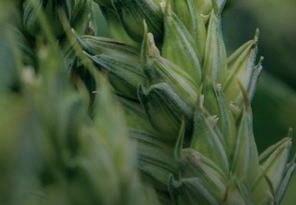
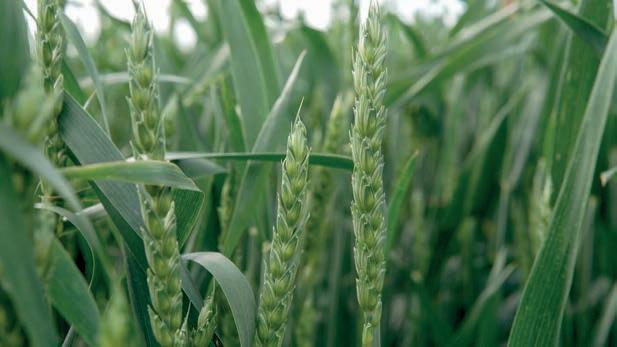
“KWS Curtis could well be a strong dual-purpose variety for the malting industry and is currently
under test by the MBC with potential for both the brewing and distilling markets thanks to its high levels of hot water extract, good spirit yield and top grain credentials.
“In the eld, KWS Curtis has good yields across the country. In the north it achieves 104% of controls, while in the east this rises to 108% –which coupled with its earliness and sti straw, will make it a rst-choice variety for many growers.
“KWS Curtis has strong sustainability credentials too. Its combination of high yields, good alcohol yields and strong straw make it a step ahead of current commercial varieties in terms of CO2 emissions, helping ensure more sustainable production for the entire supply chain.”
With increasing pressures on growers, we recognise that break crops play a fundamental part of crop rotation, providing welcome improvement to your cereal crop.
Elsoms’ expanded spring crop portfolio includes beans, peas and linseed, helping you to improve your soil’s nitrogen, control problem weeds and with healthy margins, they make a welcome contribution to your bottom line too.
Speak to your seed merchant today about availability or discover more at www.elsoms.com/spring-crops
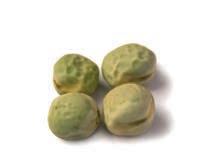






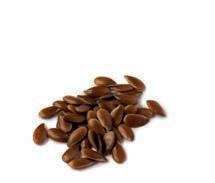

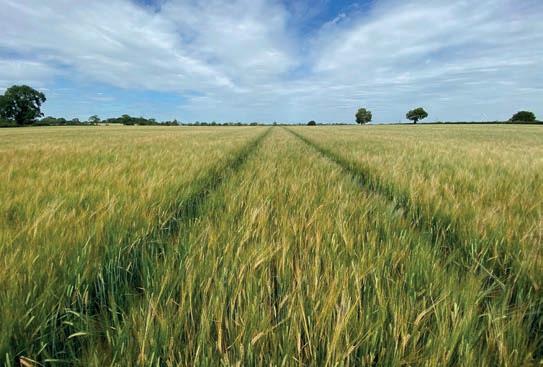
The third year of growing LG Diablo was certainly one to remember for Yorkshire farmer Paul Rogers (right), after the variety revealed its true yield potential on his 182ha farm near Ripon.
Some 25ha averaged 10t/ha sold weight at 15.5% moisture, with one eld hitting an impressive 10.6t/ha. Furthermore, all crops achieved the full malting speci cation required by grain buyer Saxon Agriculture, coming in at 1.51% nitrogen and an average speci c weight of 68kg/hl.
“I’ve never seen anything like it. The barley was rolling o the combine like a crop of rst wheat. It was phenomenal.”
Mr Rogers acknowledges the highest yields did come from the farm’s best “good bodied” land, that did not drought o in the dry season, but even so, he would have still only expected yields of nearer 7.5t/ha.
“I don’t know exactly where the big yield came from, because we didn’t do a lot di erent to the year before, apart from getting crops in earlier, around mid-March instead of early April. It was just an earlier spring; the soil conditions were correct for drilling.”
The LG Diablo established quickly, resulting in a dense plant stand that “looked like a carpet,” he notes. “The key was to keep it standing, which meant we did put on an extra growth regulator, in addition to Terpal (ethephon + mepiquat).”

Mr Rogers admits that while he may not be able to guarantee hitting such impressive yields every year, LG Diablo’s performance in 2022 at least demonstrates what the variety is capable of on his farm and soil types.
A key reason for growing spring
barley on the farm is for its role in controlling black-grass and ryegrass, Mr Rogers says. “Both are becoming more of a problem, but I’ve found that if I can get thick coverage of spring barley, it does a tremendous job of smothering the black-grass, which we did see last season.”
He adopts a very traditional approach to establishing spring barley. Preceding stubbles are left to green-up after harvest, before land is ploughed in November, allowing bare soil to weather and breakdown naturally over winter. He then goes in with a power-harrow/box drill combination, once ground is dry and warm enough in the spring, usually around early April.
“It normally doesn’t worry me drilling spring barley towards the middle of April, if that’s when conditions are right, so long as I can make sure it goes into moisture, and I can conserve that moisture in the seedbed.
“The important thing is to drill when conditions are right, not on a particular date.”
Ploughing in November allows time to achieve a good ush of weeds in the autumn, which means no pre-emergence spray is needed in spring. “I don’t want anything knocking the crop, and pre-ems can sometimes hold barley back a bit. I prefer to wait until weeds have emerged after drilling, and then tackle what’s there. The spring barley itself is our grassweed control, so we only really need broad leaf chemistry.”
“LG Diablo has performed well for us in all the three years we’ve grown it, so I’ve no plans to grow anything else next year,” he concludes.
A spring barley variety that combines
consistent yields across all UK regions on the 2022 AHDB Recommended List with high grain quality in terms of speci c weight, is being launched to growers of feed barley.
SY Splendor, from Syngenta, was originally bred for the malting market where it was evaluated for brewing use. But, despite having been withdrawn from malting tests, it continues to o er useful features that could appeal to feed barley growers, Syngenta seeds portfolio marketing manager, Kathryn Hamlen, points out.

Topmost among these are its consistent treated yields of 102% of control varieties across all regions on the 2022 AHDB spring barley Recommended List, says Mrs Hamlen, plus its high speci c weight of over of 68kg/hl. But SY Splendor also o ers other characteristics that could be useful if growing spring barley in certain grass weed situations, she adds.
“Spring cropping is a well-known method of reducing grass weed populations,” says Mrs Hamlen, “as it gives growers more time to remove an extra ush of weeds before planting. On top of this, spring barley is a competitive crop and therefore has more e ect in suppressing grass weeds. However, the other desirable traits of SY Splendor are its vigorous growth habit and sti straw with good brackling resistance.
“Early vigorous growth helps a variety to better compete against grass weeds from the beginning of the season – allowing good plant establishment before the grass weeds get a chance to compete. Sti straw helps later in the season if grass weed populations are higher – as it can help the crop to better withstand grass weeds pulling it down.
“Meanwhile, speci c weight is a stable characteristic, which means if you choose a variety that starts with a high speci c weight, it will help to mitigate against the competitive e ects that grass weeds have for
reducing crop grain- lling.
“It is precisely because SY Splendor was originally developed as a malting variety that it has such a good speci c weight,” Mrs Hamlen adds.
Currently, the feed sector accounts for about 20% of the UK spring barley market.
barley variety a “ rm farmer’s favourite”
RGT Planet spring barley has earned a reputation for exceptional consistency among growers and maltsters since it appeared on the Recommended List in 2015 and the variety is set for another successful season in 2023, the breeder reckons.
Farmers know how to grow the variety, which has become a favourite for many thanks to its dependable yields, strong agronomics and excellent grain quality, says RAGT’s arable crops manager Tom Dummett.

“RGT Planet is very vigorous, putting down strong roots and tillering profusely. It has good resistance to rhynchosporium and is excellent on ramularia.
“The variety produces an excellent sample, helped by its reluctance to deteriorate in the eld, protecting speci c weight and germination.”
As well as making a big impact in the brewing supply chain, RGT Planet has also taken a signi cant share of the feed barley market, adds Mr Dummett.
Cambridgeshire farmer Sam Morris grows combinable crops across 750ha of heavy clay from Top Farm, Croydon, and has sown RGT Planet for the past three springs.
“We went into barley purely to help keep black-grass in check, but it seems to perform really well on this farm. We use it as the rst crop in a double spring break, following it with beans.
“Planet itself is pretty competitive.

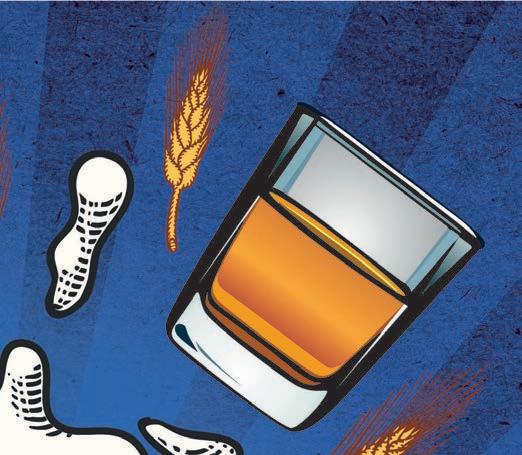





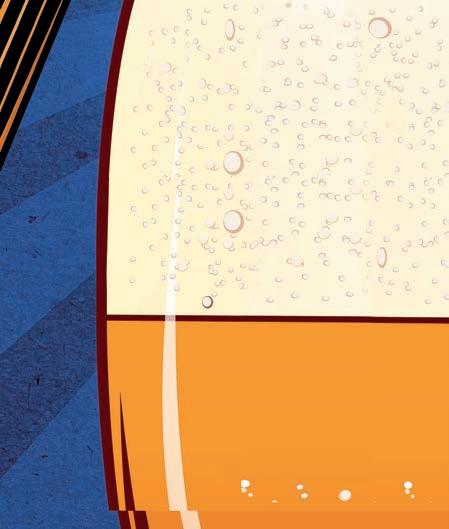











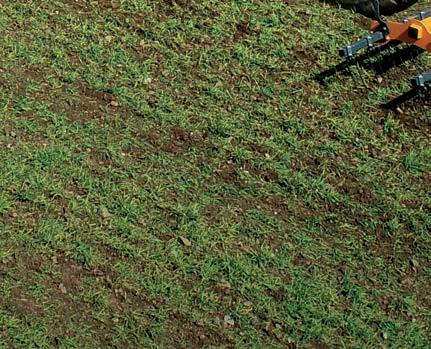
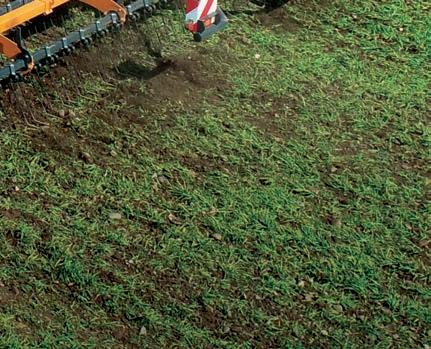
We drill early to get it up and away, and we combine it as early as we can, which helps spread the harvest.”

Mr Morris grew 55ha of the variety last season, and was impressed despite the dry season. “We drilled the crop in February and cut it on 25th July. It yielded over 9t/ ha – it’s now done that over three very di erent years, and it’s been fairly easy to get a brewing premium.”
Gavin Bowser, who looks after 1,000ha of mainly arable cropping at Croft Marsh, Skegness, Lincolnshire, grew around 120ha of RGT Planet last season on silty clay loams to help control black-grass.


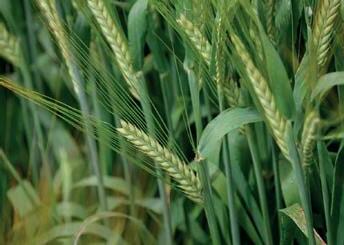

“The variety does the job well. We aim for a good thick crop to smother the black-grass and to get good yields.
“We’ve been growing Planet for six years and we were pleased with it again this year. A 44ha block which was ploughed and cultivated after maize and drilled on 23th March, looked exceptionally well.”



The crop averaged 8.5t/ha and met malting speci cation. “That was pretty good in a year like this, especially as it doesn’t require the chemicals and fertiliser that winter wheat does.”

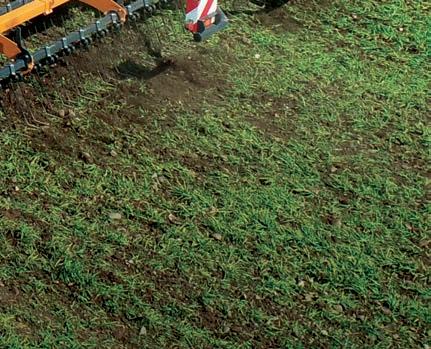
Ken Goodger’s 10ha crop of RGT Planet averaged 8.75t/ha at Pates Farm, Welney, Norfolk. “That was an excellent yield for a spring crop this season, although we did drill it in early March on very good silty land.”
Mr Goodger, like the other growers, will be sowing RGT Planet again next spring. “It suits our fertile soils; it doesn’t brackle over or go at, so it combines well,” he explains.



In a year of uncertainty and volatility in all areas of our lives, it is a good moment to take stock and look at how we can be more in control of our gross margins, comments Fairking Ltd.



Fairking Ltd has been growing niche market crops since the 1970s, and believes that by far the most consistent and successful of these has been borage; the seed oil of which is used in both pharmaceuticals and cosmetics.

Although it is a crop which requires special attention at harvest, Fairking says it has more than 100 growers throughout the country bene tting both in their arable rotation and also nancially when compared to other spring sown crops.
As both farmer and merchant, the company explains it can see the bene ts a later sown spring crop brings to its own farm’s black-grass control by both allowing a late application of glyphosate in April before sowing, and the ability to direct drill the following wheat into a low-residue, slug-free borage stubble. Financially, being able to grow a crop where the price is xed means growers know their costs and gross margin before starting the season, meaning they can make a decision rather than take a gamble.
One of the reasons for the crop’s huge success is that the English climate produces the best quality oil in the world, making it very di cult for other countries to compete.
Dutch trader De Wit Speciality Oils owns a speciality extraction plant
continued over…
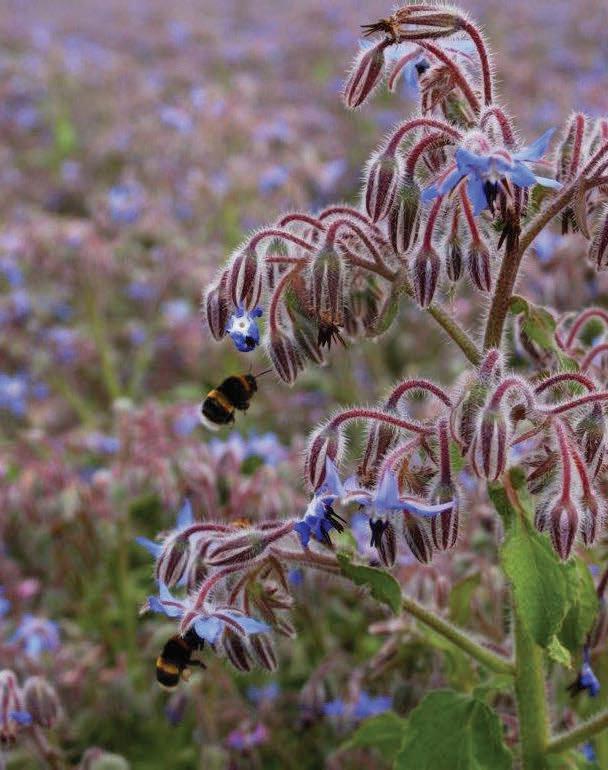

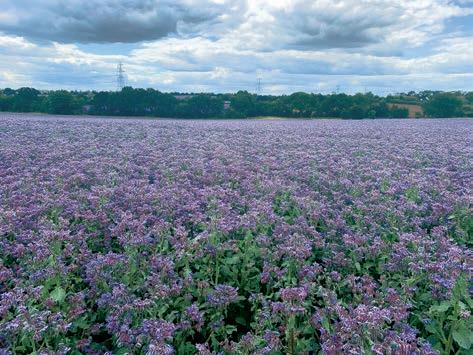



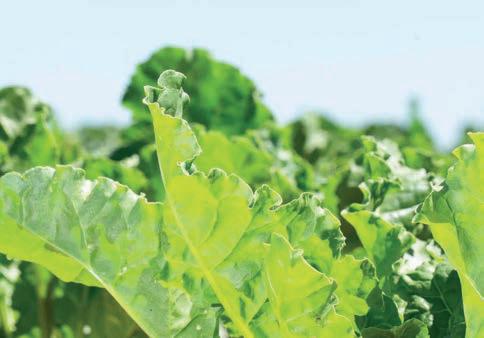















...from
on Humberside. It o ers safe backto-back grower contracts through Fairking as its sole agent, based in Essex.

With increasing demand, the future looks bright and prices for next year’s crop are now set at £3.85/kg with possible additional bonuses. Yields are normally around 400kg/ha but can be as high as 650kg/ha. Low fertiliser and chemical requirements mean that the main growing costs are for seed and swathing.
Borage is an attractive, environmentally- and bee-friendly crop which provides bee keepers with huge quantities of exceptional honey.








Harvesting does require a bit more attention than some of the other crop alternatives, but Fairking explains the rewards are worthwhile and says it is there to help with contracts and specialist advice.
Interested farmers wanting further details should contact Fairking directly.
Despite the UK’s driest summer since 1976, this season’s spring bean crop yields have generally held up well con rms Danny Richardson (pictured), combinable seed product specialist for Wynnstay Group PLC.
Based in Shrewsbury and
Based in Shrewsbury and serving growers across the western half of Britain, from Chester down to Cornwall, Mr Richardson believes a combination of higher rainfall in early spring, low disease pressure, and the opportunity to utilise earlier drilling windows following a mild winter helped many farmers during an agronomically challenging year dominated by extreme heat and summer drought conditions.
“Had this also been a highpressure year for disease, then that would have certainly compounded the issues already facing growers leading to much greater yield losses. That aside, it’s been a good year, particularly for those who drilled spring beans early. There’s a squeeze on soya right now which has helped increase demand for pulses, and the market for home grown protein is buoyant with good ex farm prices being paid.
“Of the newer varieties on the 2022 PGRO Descriptive List, Capri catches the eye as a high yielding, early maturing bean. With a solid rust score, respectable thousand seed weight (TSW) and excellent standing ability it ticks the right boxes for both domestic and export markets and is de nitely a variety that growers need to keep on-side,” he concludes.
drilling window of 23rd
raced away during April, less moisture than he’d
For Boston-based rst-time Capri grower Danny Anderson, of P & N Anderson and Son, an early drilling window of 23rd to 24th March proved to be the right strategy, as his 14ha crop of Capri raced away during April, despite a dry spring and less moisture than he’d have preferred.
“We direct drilled this time to get the seed a little deeper into the soil, allowing it to nd more moisture, then rolled immediately afterwards to lock in the moisture. The Capri established very evenly and there were no bare batches. By 10th May, when we sprayed a combination of Laser plus Toil to clear up some wild
page continued over…
lgseeds.co.uk/lg-diablo
There’s no hiding the fact that it’s a great yielder. David, Fife
oats and post-emergence weeds, the crop has successfully grown away from any smaller emerging weeds, so it was a cautionary spray if anything.
“Only one fungicide was applied post- owering, primarily for rust and downy mildew control and we added some foliar feed to give the Capri a boost during the prolonged dry spell. Overall, the crop coped very well with the high summer temperatures, reaching a height of six feet in places, with the taller canopy helping to give the soil around the base of the plants a decent level of shade.
“We grew Lynx in 2021, a shorter crop in height, and subsequently lost some beans in the harvest that the combine header couldn’t reach; but there were no problems this time. When we cut Capri on 29th August, the nal overall yield of 5t/ha was impressive, given the substantial dry spell. With more moisture I’ve no doubt we’d have been looking at an even higher yield.

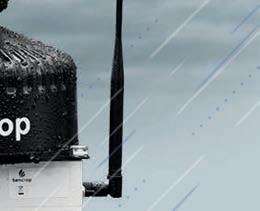












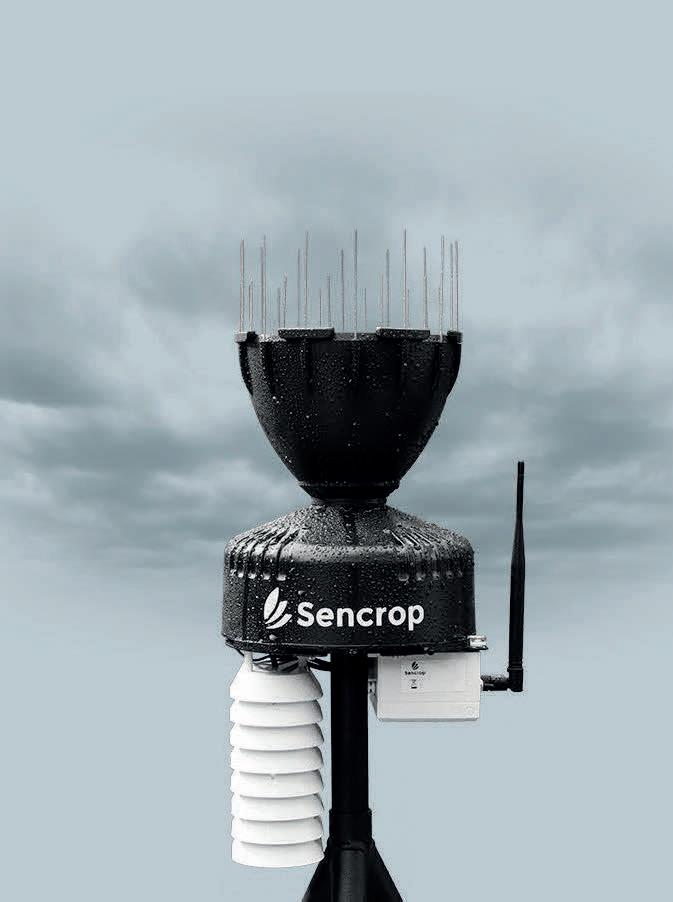








“We’ll de nitely grow Capri again. It’s a tall early-maturing variety, looks agronomically strong, coped



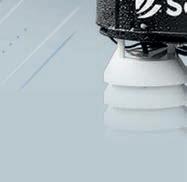

well with the hot dry weather and owered well producing a lot of pods. The potential is there for an even higher yield with slightly better weather,” con rms Mr Anderson.






LS Plant Breeding Ltd’s Carrington is the highest yielding green pea on the PGRO Descriptive List of combining peas, with a high downy mildew resistance and good standing power. It is also resistant to pea wilt.


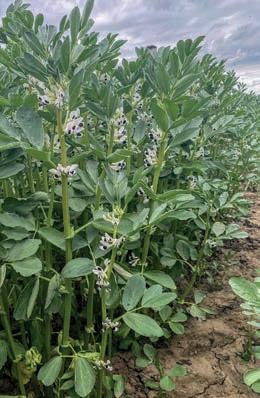
Michael Shuldham, pulses product manager for LSPB, details Carrington’s set of bene ts for growers: “The variety was added to the PGRO Descriptive List 2022 for combining peas (DL) as the highest yielding pea of all with a yield gure seven points clear of the next green pea variety on the list.


“Added to its yield bene t, Carrington has high resistance to downy mildew (8) – especially important in light of the challenge of downy mildew control with the loss of Wakil XL.
“The variety’s high standing ability at harvest (7) updates the old perception of peas being prone to going down in poor weather. Modern varieties like Carrington are early to mature and stand much better than those of a decade or so ago.
“Colour retention on sample quality is also important for marketability – and Carrington stands out for its colour retention with trials data showing the variety consistently retains its colour.
“In summary, Carrington is one of a newer generation of pea varieties with improved genetic capacity led by traits such as its impressive yield potential, disease resistance and standing power.” FG



Dairy farmers could mitigate the impact of rising feed and fertiliser prices by growing more maize in 2023.

While the last 12 months have seen some substantial milk price gains, these have been o set by rising commodity prices and global factors which continue to cause the cost of purchased feed, fertiliser and fuel to rise. The ongoing challenge for most dairy farmers is therefore to mitigate these price increases so their businesses can capitalise from milk price buoyancy.
“One of the ways farmers can o set rising feed costs is to maximise the amount of home-grown forage they produce,” comments Tim Richmond (pictured), LG maize product manager. “The rst step is to start planning early, with the clear goal being to improve forage productivity to ensure silage clamps are full of high-quality winter feed.
“For many, that could simply mean growing a larger area of maize, with the higher yield that maize produces compared to grass silage putting more feed in the clamp. It could also allow more grass to be used for grazing if the requirements for second and subsequent cuts are reduced.








“This strategy could also enable growers to optimise their use of nitrogen by prioritising valuable fertiliser reserves for use on early season grazing pastures and rst cut silage leys which will deliver the best response to nutrient applications.





“Increasing the proportion of forage maize being grown will also reduce the farm’s overall fertiliser


requirement as maize has a lower nitrogen requirement per hectare compared to a traditional mixed grass grazing and silage system and can make e cient use of readily available FYM and slurry.


“And, because maize harvesting is a one-pass operation, signi cant fuel savings can be made at the end of the growing season compared to taking three or more cuts of grass silage.”


The greatest cost savings will be realised where growers choose a maize variety which is suited to their speci c location and soil type, and which produces a crop with a high starch content and enhanced cell wall digestibility.

maize variety which is suited and soil type, and which produces a crop with feed value of forage maize

“With each new generation of varieties, the feed value of forage maize takes another small step forwards,” Mr Richmond continues, “with high yielding, early maturing varieties such as Saxon and Dignity enabling growers to o set purchased feed costs by lling their clamps with high quality maize forage.”
Saxon and Dignity have been added to the NIAB/BSPB Descriptive List for 2023, with both delivering early maturity (FAO 170 for Dignity and 180 for Saxon) which means they can be harvested early, easing harvest workloads and making the establishment of successor crops more feasible. They also combine exceptional yield (Saxon being the highest yielding variety on the new BSPB/NIAB list) with excellent ME content, high starch yields and superior cell wall digestibility. FG


At an online event hosted by Trinity Global Farm Pioneers, expert speakers discussed how agroforestry and biodiversity can help drive agricultural production and explored the barriers to uptake among farmers. Henrietta Szathmary writes.
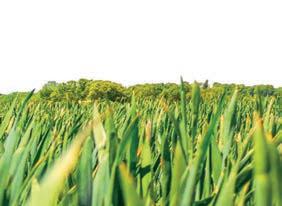

The webinar was free to attend, and took place on 11th October as part of Countryside COP 2022. At the end of the event, attendants had the opportunity to share their thoughts and ask questions through a dedicated Q&A session.
The webinar was opened by Emily Pope from Trinity Global Farm Pioneers (Trinity GFP).
Trinity GFP is a free-to-use virtual knowledge exchange platform that provides spaces for sharing ideas and advancing best practice. Through the platform, users can connect with like-minded people, attend and host online events, and expand their knowledge in areas of interest relating to agriculture.
The webinar’s rst speaker was Martin Lukac, professor of ecosystem science at the University of Reading. In his talk, he gave a broad overview of the bene ts and limitations of agroforestry and shared details of a study looking at farmers’ attitudes to adopting farm woodland.
To begin with, Prof Lukac introduced the concept of agroforestry, which he de ned as “the purposeful integration of woodland with an agricultural production system”. Its two main types, he explained, are silvoarable (trees + crops) and silvopasture (trees + grazing livestock) systems.
He then gave a rundown of the various bene ts agroforestry can bring to traditional farming and the wider environment. He emphasised that the greatest bene t comes in the form of
ecosystem services, such as increased pollination, natural pest control, and carbon sequestration.
According to Prof Lukac, the bene ts of agroforestry relate to:
• Diversi cation




• Biodiversity
• Carbon
• Soil protection
• Pest regulation
• Climate regulation
• Resilience
• Stability
• Landscape amenity.
As for its limitations, the three main factors outlined by the professor were establishment cost, management complications, and opportunity cost. Elaborating on the latter, he explained that trees can decrease crop productivity by overshadowing the plants and competing for nutrients, which represents a concern for farmers.
Prof Lukac also shared details of a recent study that surveyed 2,000 farmers in the South East and East of England about their views on adopting an agroforestry system.
The results showed farmers considered a positive contribution to farm income to be the most important factor when it came establishing woodland on elds, followed by the reduction in productivity of adjoining land and improvement to landscape amenity.
The results have also shown that farmers widely believe implementing agroforestry would reduce greenhouse gas emissions and improve landscape appearance. On the ipside, many also believe the system would reduce yields on nearby
land due to competition between the trees and the crops.
These ndings are summarised in Figure 1 below.




















Overall, Prof Lukac believes the small and large-scale bene ts of agroforestry outweigh the costs in terms of landscape productivity and ecosystem services. However, he warned that many farmers don’t know how to get started with agroforestry, and providing the necessary support will be critical to uptake.
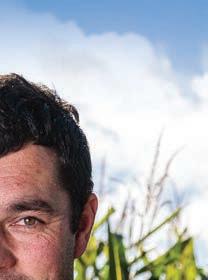





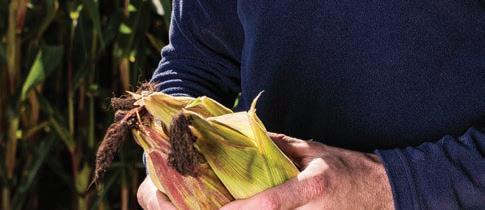





The next speaker of the event was Dr Alexa Varah, post-doctoral researcher at the National History Museum, who covered how agroforestry systems a ect environmental outcomes like biodiversity and pollination.
In her talk, Dr Varah presented an applied research project she carried out with colleagues to determine the environmental bene ts of agroforestry
systems. The project compared four silvopasture and two silvoarable sites with monoculture controls using six UK farms.
Although the study measured a range of environmental outcomes, Dr Varah highlighted biodiversity and pollination in her talk.
To measure the abundance and diversity of pollinators, the number of bees, butter ies, and other insects were recorded on all sites using pan traps, Dr Varah explained. Pollination was also directly measured by counting the number of seeds produced by potted plants on the elds.
The ndings have revealed that agroforestry systems attract a higher number of pollinators and insect species than monoculture systems. Fields with woodland had twice as many bumblebees, solitary bees and hover ies, with some sites giving home to over 10 times the number
Resolute ticks all the boxes. We are able to achieve the 30% starch we need along with good digestibility
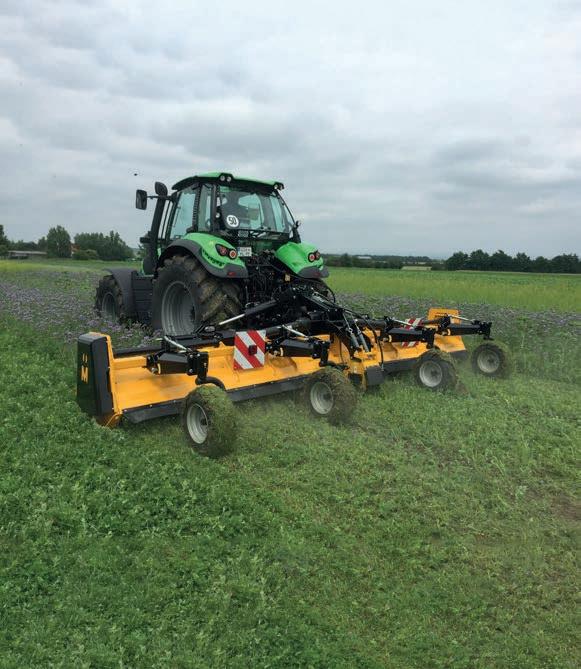










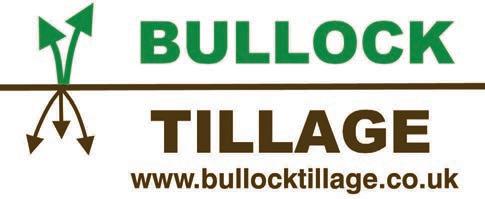


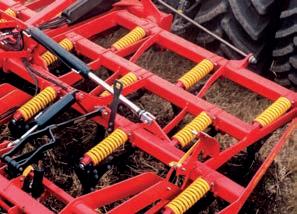


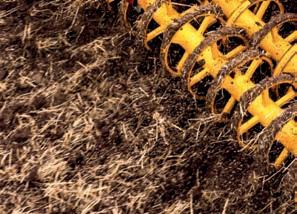






of solitary bee species compared to control elds.
Moreover, plant pots produced more seed in agroforestry systems, indicating higher pollination. This underlines how increased pollinator presence can directly bene t crop yield in silvoarable systems.
Dr Varah also pointed out that the choice of tree species will have an impact on how insects and other wildlife respond. In a silvoarable set-up, she suggested taking advantage of the understory and establishing owers or vegetation to support pollinators or biodiversity.

In her conclusions, Dr Varah echoed Prof Lukac highlighting that agroforestry systems are a more e cient way of using land due to more biomass being produced, which in turn increases the landscape’s carbon storage capacities.
The nal speaker, Dr Ben Woodcock, gave his talk on the sustainable intensi cation of farming systems to support biodiversity and crop yields. Dr Woodcock is an ecologist at the UK Centre for Ecology and Hydrology.
First up, he discussed how intensive agriculture is likely a major contributing factor to the rapid decline of pollinator species in the last few decades. While bringing biodiversity back into agriculture is key to retaining important insect species, farmers will show reluctance unless they see a bene t to yield, Dr Woodcock said.
To expand the existing evidence base that biodiversity can support agriculture, Dr Woodcock and his colleagues conducted an experiment implementing the approach at landscape scale.



The study was carried out at the 1,000-acre Hillsden farm, which previously used an intensive farming
system and was heavily reliant on agrochemical input. The farm was split into 15 farmlets of 50–60ha each, where three di erent treatments were applied:
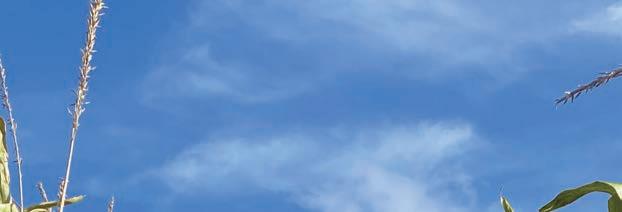


• Treatment 1: Business as usual
• Treatment 2: 3% land removed to wildlife habitats

• Treatment 3: 8% land removed to wildlife habitats.
Wildlife habitats could include eld margins or eld corners and were created to promote biodiversity not yield, Dr Woodcock stressed. Yield maps were then used to monitor changes to crop production over an extended period of time.

After ve years of running the study, the results were analysed and related to the regional average. While yield from control crops remained just below average, there was a gradual increase in yield from crops that received the second and third treatments.


The ndings are displayed in Figure 2 below.



As shown on the graph, there is a time lag before crops grown in systems integrating biodiversity start producing higher yields. Dr Woodcock said the lack of instant turnaround that can be easily achieved with agrochemicals is the main reason why farmers are reluctant to implement such systems.
To nd out whether the results of the study are generalisable, Dr Woodcock and his colleagues conducted another experiment across 18 farms that use various farming systems. Treatments similar to the previous study were applied over a period of four years, and preliminary results show crop yield responded best to more complex biodiversity treatments.
In summary, Dr Woodcock pointed at the growing scienti c evidence that biodiversity can support agricultural production, but said it will never become a sole solution to increasing yield. FG
lgseeds.co.uk/saxon

“Saxon’s improved vigour meant it was greener at harvest and it out-performed our other varieties.”
Nigel Harper, Cheshire






















Mr Nott farms a total of 4,000 acres, the majority of which is on contracted land. Soil type is predominantly clay, with some sandy clay loam pockets, and he generally follows a min-till approach – although this is exible. He reckons that due to climate change, growers should consider doing what the continent is doing, and comments that fortune favours the brave – while those who are risk averse might just
grow winter beans, he believes you need to experiment and try other options – as such, he’s now opting to grow grain maize as an alternative break crop within the rotation.
Mr Nott also grows OSR, but he can nd it to be hit and miss; he’s also grown peas in the past, but became fed up of chasing pigeons away; and following winter oats, he says the ground becomes poisoned by black-grass.
The farm has a black-grass burden, so weed control for the maize is based around mesotrione + nicosulfuron which Mr Nott says provides excellent control. He does dabble with pre-ems such as pendimethalin, but nds them underwhelming due to the spring season in the area being so dry historically, so prefers to use contact herbicides.
“We’re all looking for a break crop, and the economics with grain
maize, to me, look right,” explains Mr Nott. “I understand why people don’t like it, as many don’t want to combine in October/November; but I believe it’s nancially rewarding and not as di cult as people might think.”
Once the grain dries down, it won’t absorb further moisture due to its waxy coating. So, as long as the maize is t to go, the wet weather is far less of a problem than for a eld of wheat. In fact, he says that on a wet day, it would be far easier to combine a eld of maize than it would be to forage it.
Mr Nott explains that with forage, you’re creating bare land, trying to get 20t/acre o the eld with trailers impacting the ground, just as you would if you were lifting sugar beet.

When harvesting the grain only, however, you’re taking closer to 4t/ acre, while the combine is laying down a “magic carpet” of maize stover on the ground which the machinery can then travel on.
This year, he ran a Farmet Triton over the stover, mulching it in slightly, before drilling the following crop with a Vaderstad Rapid – establishing the commodity crop in two passes. He’s looking to experiment with a Claydon drill behind the maize next year.
Mr Nott does admit that with
profitable commodity, not justJames Nott farms in north Essex, and has been growing grain maize as a successful and, importantly, pro table break crop since 2021. Rachel Hicks reports.
maize you have to accept you will need to dry the crop, which has to be factored into the margins. Last year, the crop was dried for £20–£25/t, while energy prices this year meant the drying cost was £30–40/t. The rst year, he used a continuous ow drier, which he says takes 10% moisture out in one go; but this year he hired a Master batch drier from Master Farm Services (GB) Ltd, which he found to be very e ective, and intends to do the same again next year. He says that once you’ve got it down to 15% moisture, it stores very well – although it sells o -farm very quickly so isn’t in store for long.
Mr Nott doesn’t understand why so many growers favour beans as a break crop. “Sure, you don’t have to buy fertiliser, it’s great that they x nitrogen, you can combine them early and they give a good entrance to a rst wheat. But when you look at the raw economics, it just doesn’t work for me,” he comments. “Also, beans are a one in ve-year crop, whereas maize could be grown one in two, or could even be grown continuously if you really wanted to, given its pro tability.”
Mr Nott uses prothioconazole to mitigate any problems with fusarium when drilling a rst wheat after maize,
but suggests concerned growers could just not take this risk and opt for spring barley before wheat –particularly if getting a crop in the ground in October behind the maize is too di cult. He also points out that, even if you’re unable to harvest the maize until November, you can always just grow grain maize again.
This year, Mr Nott drilled DSV Likeit, KWS Anastasio and Pioneer P7034 on a eld-by- eld basis. His critical requirements when choosing grain varieties, compared to forage varieties, are:
• Needs to mature relatively early


• Needs massive standing power, with no susceptibility to lodging


• Fusarium resistance
• Eyespot resistance.
Next year he’ll also be growing a block of RGT Duxxbury as a bit of an experiment. Mr Nott says Duxxbury may or may not be a grain variety, but thinks it should mature two weeks earlier than his other varieties; so as long as he is able to harvest it in September, he’ll be home and dry.

It has the standing power he’s looking for, and although it might be weaker on fusarium resistance, it likely will be combined so early that he doesn’t think that will be a problem.
He drills the grain maize at a seed
rate of around 75% of the forage maize rate, planting 80,000 seeds/ha2 compared to 105,000 seeds/ha2 for forage. This is because a decreased seed rate gives better light penetration and increased cob size and structure of the crop.


In a drought year like 2022, this also means the plants aren’t competing so much for water, which was a massive bene t for Mr Nott this year.
He says marketing has not been an issue whatsoever, with so much maize being imported into the country and the ethanol plants in Lincolnshire
running on it.
It’s currently pricing at around £40/t above the price of wheat. But Mr Nott reckons that even once you factor in the £40/t of drying cost, you’re netting a better margin than for wheat due to the lower input costs with it yielding on average 9t/ha, which is comparable to winter wheat (see Mr Nott’s estimate of his expected gross margins below).
Although this year hasn’t been great for maize, he points out it can often yield 10–12t/ha in a good year.
Turn to page 59 to read Mr Nott’s grain maize harvest story. FG
During this time, the company says it has adapted to many market conditions and trends, and gained experience both in the UK and globally – as far a eld as New
Zealand, Australia, and the Congo.


The Master Driers team now have vast knowledge of, and a product adept at, drying all types of combinable crops as well as other


















products that have never been near a eld, such as recycled PVC material, the company says.
While not all of its 4,000 customers are likely aware, the initial concept of Master Driers’ type of batch drier – conceived in Italy in the late 1960s – was intended for drying maize and paddy rice. It was only in the early 1980s, when the rst Pedrotti machines landed on the shores of the UK, that the machines began to develop their capabilities for drying the UK’s more traditional combinable crops.

However, the modern Pedrotti Master Drier is seemingly going back to its roots and increasingly being used in varying areas of the country, from the Southwest to as far north as Aberdeenshire, to dry grain maize.
With capacities currently up to 100m3 (roughly 76t of wet grain maize), with larger capacity machines in the pipeline, there is a Master Drier for all farm scales, the company reckons. There are machines currently at work in many locations, helping farmers get their maize crops from the eld to the store in a cost-e ective and timely way, even when moisture levels are
pushing the 40% zone.


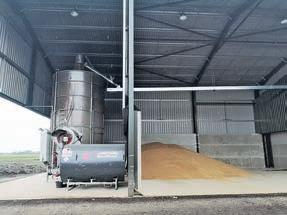
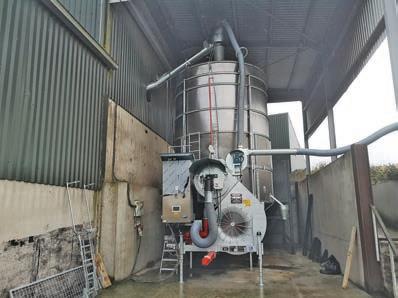
Some machines are taking the maize from eld to nished storage moistures, while others are doing the initial dry, from moistures where a continuous ‘tin box’ drier simply wouldn’t cope with grain maize above the 20% mark, Master Driers reckons. It can then either be fed into the wet tip of the continuous drier to nish the drying or dried down to nish moisture to utilise both machines.
Other machines are also doing their drying cycles, to then dump onto a drying oor where the crop can be cooled to make use of these expensive pieces of capital investment!
The beauty of a Master Batch Drier is that they can be used inside or out, and with a lot of the company’s machines now being fully galvanised, they should maintain even better residual values.
If you want to discuss purchasing or hiring machines for the future, feel free to contact any of the team at Master Farm Services who are always happy to help with all aspects of grain drying, power/ generators, conveyors, bins, and storage solutions. FG







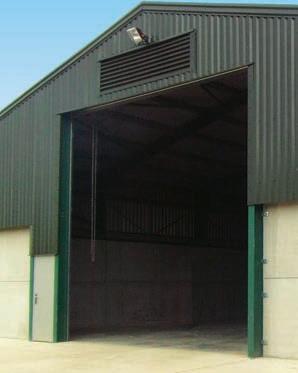




















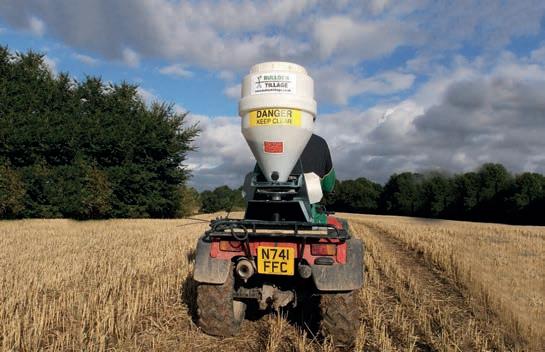





“Obviously, cover crops haven’t answered every question,” Mr CliftonHolt says. “They certainly have a good place, but there are limitations.
“Their main value to us is that they assist in developing a soil structure into which we can drill spring crops sensibly, and for the extra nutrients they can provide to the next crop.”
Parts of the farm, especially on Romney Marsh, are high pressure for black-grass. Back in the mid-2000s, Mr Clifton-Holt recalls that some elds became almost unfarmable, with blackgrass reducing wheat yields to only 5t/ha.
“We haven’t completely conquered this challenge yet, but we are getting on top of it, having taken some big decisions,” he explains. “These included reducing cultivation passes and depth, incorporating grass leys, sprayingoff badly infested crops and spring cropping.
“All the things that everyone now talks about to combat black-grass are definitely the way to tackle it. We’re glad we took those decisions early on.”







Spring cropping remains integral to current control tactics, with a double spring crop break within a six-year rotation that also includes two winter wheats, winter barley and oilseed rape.


Surprisingly perhaps, spring barley is not a favoured option. Spring oats and spring beans have become the mainstays and cover crops grown ahead of all the plantings.
“With spring crops, there are three over-wintering options,” Mr Clifton-Holt says. “Leave the ground as a stubble, cultivate it, or plant something that can be drilled into. We took the view that the latter option had to be the best way, and it’s working well for us.”

Any cultivations the ground requires are carried out immediately after harvesting each autumn, and the cover crop drilled as soon as possible after that. The aim is August, but it can be as late as late September, depending on weather and workloads, he admits.

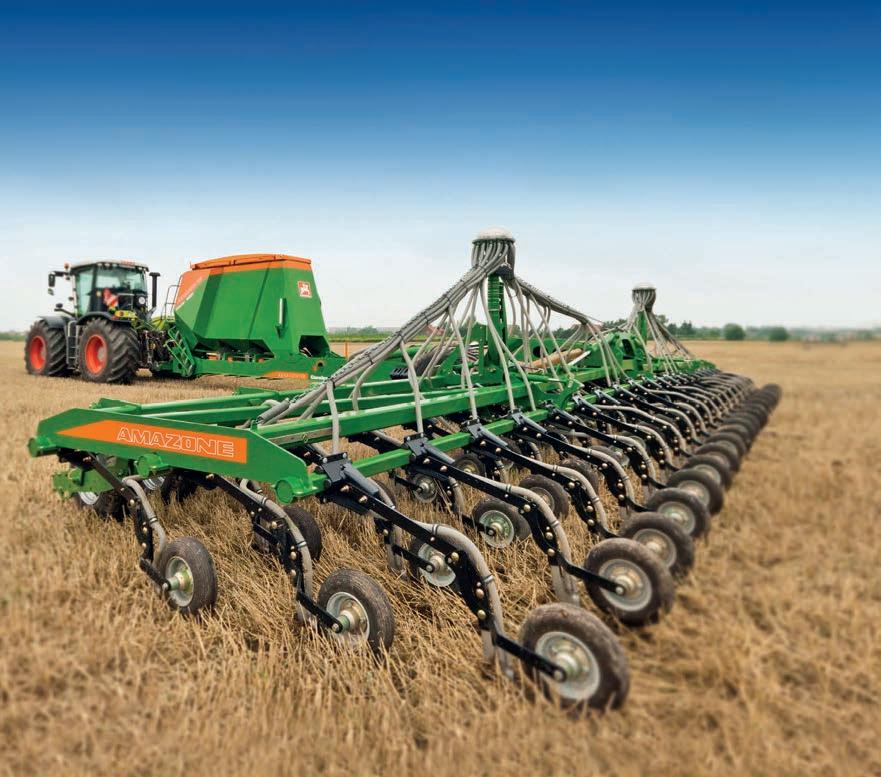
Fine-tuned mixes
In recent seasons, the species mix and agronomy of the covers has
been ne-tuned with the help of the latest research and on-farm trials overseen by Agrii agronomist, Neil Harper. Drilling large 0.3ha plots of individual species and mixes has been very helpful in providing the best insights here.
“Our best mix to date has been based on rye, phacelia and linseed,” reports Mr Clifton-Holt. “We prefer rye to oats because it’s more prostrate. Oats can be a bit oppy and hold more water, making the eld wetter when you come to drill it.
“Phacelia is a great plant –everyone should be growing it. While linseed does a really good job of soil


structuring and soil improvement if you handle it right.”
Following recent trialling with Agrii, the base mix has been tweaked to include a vetch. And buckwheat is also being explored to see whether its phosphate mining ability will help – especially at current prices.

“I was initially reluctant to include vetch, but Neil showed me good evidence there wasn’t any carryover from nematodes or pests that will a ect our pulse crops. One of the reasons we took him on four years ago was to access to this sort of wellresearched support. So, we’ve chosen to run with it.”







Overwinter management di ers depending on the following spring crop. Covers ahead of spring oats are grazed into January and February with a ying ock of sheep, before being sprayed o with glyphosate pre-drilling.






Mr Clifton-Holt is in two minds about the value of the sheep here. “The head is telling us it’s the right thing to do, but we’re not yet totally convinced,” he admits.
“We’re seeing some surface compaction following the sheep
grazing,” Mr Harper points out. “It’s not that they’re being left on the ground too long, but more a matter of soil type. A high silt content means the surface can cap badly if put under pressure when it’s wet. In which case we’ve found spring cereal yields su er where we direct drill rather than cultivating.
“People might argue that this is because of the cover crop. But we want the cover crop because it’s doing the right thing for our soils and holding nutrients. We are trying to be exible with what we do to make the system work.”
As a result, a light spring tine cultivation now routinely precedes spring oat drilling with a Vaderstad Rapid to remove any shallow compaction. This has improved spring oat performance noticeably.
Without sheep grazing, covers before the spring beans are typically sprayed-o with glyphosate around Christmas to reduce the vegetation. With a surprising amount of regrowth in the base and blackgrass, they are usually sprayed again a week before direct drilling with the farm’s Amazone Cayena.
Yields of the spring beans have
de nitely increased since using the cover crop. “They’re running up to around 5–5.5t/ha and they’re certainly more stable,” Mr Clifton-Holt reports. “We don’t have the variability we used to have. I wouldn’t grow beans without them now.
“As we’ve only ever grown spring oats after covers, we don’t know how much they actually contribute to the crop’s performance. Having said that, we’re happy with the 7–7.5t/ ha the oats deliver. And, as they’re on a contract at a decent price, the numbers add up.” FG
They say size isn’t everything, but the Condor direct tine seeder, in 12 and 15 metres, ticks both the size and the flexibility boxes. The 8,000 litre seed hopper, which is carried on the tractor link arms to ensure plenty of traction, is split into 3 - enabling up to three different seed varieties or a mixture of seed and fertiliser to be drilled simultaneously - and all from vari-rate maps.


With up to 200 kg of coulter pressure, the ConTeC pro chisel opener ensures a residue-free seed groove with the seed being embedded into the furrow by the following press wheel on each coulter. It couldn’t be simpler, it couldn’t be more effective and above all it helps you love your soil.

For the perfect seed placement - let’s get straight to the pointLinseed. Vetch.
In the last 30 years, D S King and Sons, farming in Bourne in Lincolnshire, has adapted its business to keep pace with an increasingly challenging industry, while helping to secure a sustainable farming future.














The business currently runs to 688ha of tenanted and contract farmed land and supports a rotation based on milling, feed and seed quality wheat, winter feed barley, OSR, winter beans, linseed and spring oats. Wheat






is grown on a two-year rotation and yields average 9.5t/ha.



“Liquid rather than granular fertiliser has been used on the farm for decades due to its improved accuracy, better environmental



pro le, convenience and better health and safety implications compared to a granular fertiliser alternative,” says Daniel King (pictured). “It has had a huge impact on our




business performance over the years.”


Omex liquid fertilisers are delivered from Bardney in Lincolnshire and pumped directly into the farm’s two strategicallypositioned 50t bunded tanks.
“A key advantage of liquid fertiliser is that there is no risk to our employees unloading heavy bags or lling the spreader,” he says. “We also don’t have to worry about storing bags under cover, which frees up valuable space for crops and machinery.
“Granular fertiliser can be applied up to 24m but there is always going to be over and under lapping, especially on the headlands,” he explains. “With all farmers now having to be more environmentally aware, liquid fertiliser ts the pro le perfectly and in my opinion is really the only option for farming’s future.”
He adds that with a liquid system being so much more accurate, it presents an excellent opportunity to reduce inputs without compromising yield and quality.
If you’re thinking of moving to a liquid fertiliser system, speak to liquid fertiliser expert Omex. FG


Soil health has been broken down into measurable parts to help farmers optimise productivity. Dr Amanda Bennett, AHDB senior environment manager, explains.

Soils are the foundation of agriculture, providing a range of ‘ecosystem services’, helping to regulate climate and water, sequester carbon, and cycle nutrients. It is important that soils are managed appropriately to deliver these functions. Yet, their inherent properties (soil type and geological history) and site-speci c management mean each eld’s soil has its own unique ngerprint.
Cultivations, drainage, inputs, rotation, and cropping sequence all impact a soil’s physical, chemical, and biological make-up, meaning that what works in one eld may fail to work the same way in another. However, to optimise soil health, you need to measure it rst.

The levy-funded Soil Biology and Soil Health Partnership developed and validated a set of practical indicators for the routine measurement and monitoring of soil health:
• Visual evaluation of soil structure (VESS)
• pH
• Extractable nutrients (P, K, Mg)
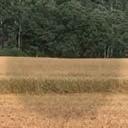
• Soil organic matter
• Earthworms
• Measures of microbial activity.
The researchers worked with farmers, industry and scientists, to develop a robust, simple, and
visual framework – the Soil Health Scorecard – to group these soil health indicators.
Although putting the indicators in one place was a great step, it is the inclusion of benchmark values that o ers a potential revelation for soil management. For each indicator, the partnership identi ed ‘typical’ benchmark values (expected ranges for UK soil types and climate regions). The scorecard exploits these values to grade the results of site-speci c soil analyses using a tra c light code:
Green (monitor): Typical or optimum result, with low risk of sub-optimal soil conditions (continue to monitor on a rotational basis)
Amber (review): Moderate risk of sub-optimal soil conditions (further examination, such as more frequent or detailed sampling, may be needed)
Red (investigate): Potential risk of sub-optimal soil conditions (more immediate management intervention may be required).
The Soil Health Scorecard is a simple way to generate soil health data. However, for it to be e ective, it is essential to follow sound soil sampling and analysis approaches.
The AHDB Cereals & Oilseeds YouTube account features a ‘how-to’ eld demonstration video, delivered by NIAB’s Elizabeth Stockdale. The
guidance document also details the benchmark values for the physical, chemical, and biological soil health indicators. Importantly, the guidance highlights management recommendations for the current tra c light soil condition – to help you maintain or improve your soils.
This structured way to evaluate soils is also useful if you want to assess changes to soil management. For example, if you plan to change your cultivation technique, simply complete the Soil Health Scorecard rst. Subsequent analyses will provide valuable insight into how soil condition has been a ected, allowing you to make more informed decisions to bene t your farm business. FG



Unlike other schemes, Agreena’s third-party veri ed and tradeable CO2 certi cate ownership sits directly with the farmer, who can choose to keep them, sell them to institutional or private organisations, bundle the certi cates with their crops, or work with Agreena to achieve the best price. The number of certi cates a farmer can earn is based on the adoption of regenerative farming practices, which reduce greenhouse gases (GHG) and remove CO2 from the atmosphere and store it in the soil. Farmers participating in the AgreenaCarbon programme receive up to three certi cates per hectare, depending on the practices adopted, such as sowing cover crops or no-till farming. Depending on current market conditions, the value of certi cates are selling for £20–40 each.

supporting cleaner water run-o . This bene t has resulted in water agencies focused on a clean and safe water supply, such as Severn Trent, partnering with Agreena.





On a practical level, participation in carbon schemes can support longterm climate resiliency for the eld – in addition to providing co-bene ts such as higher nutrient content of crops and increased biodiversity.



Overall, harvest 2022 was good, despite the heatwave which served to highlight the unpredictability that climate change delivers, with many farmers completing harvest in record time.
In addition to a dry harvest year, the geopolitical challenges of 2022 hit UK farmers in agricultural inputs. Defra’s annual price index reported a 33.1% in ation spike for inputs over the last harvest year, largely attributed to rising fertiliser and energy costs. And with Basic Payment Scheme (BPS) payments declining by 35% in 2023 compared to 2020, and energy prices set to rise this winter and in ation potentially rising to 13% by the end of year, these challenges look set to continue.



Soil carbon schemes, such as AgreenaCarbon, are ramping up to provide UK farmers support in retaining their pro tability in the face of these economic challenges with a second revenue potential.



“Carbon certi cation schemes can play a key role in helping farmers
overcome nancial uncertainty by impacting the bottom line through an additional revenue stream from the sale of carbon certi cates, at the same time as improving the environmental sustainability and resilience of their farming businesses,” said Simon Haldrup, CEO and co-founder of soil carbon certi cation company, Agreena.

Carbon farming initiatives for farmers are on the rise across Europe. Agreena has expanded its operations out of Denmark with more than 20 employees in the UK and is now serving 13 countries across Europe, with more than 500,000ha under management and plans to expand into seven new countries this year.


Haldrup says the key to the company’s success has been ensuring farmer control in decision making.
Not only does carbon farming provide an increasingly important additional revenue stream, the longterm bene ts from regenerative agriculture practices support the farm business by decreasing fuel and labour costs, potentially reducing farm machinery and fertiliser costs.
Soils are one of the greatest life-supporting resources on the planet – but currently are falling into a crisis globally, with one-third of our precious soils degraded. Regenerative and sustainable practices are being looked to by leaders and pioneering farmers across the world to support longterm soil health. A key bene t of regen ag is the ability to increase the water holding capacity of soils and
“Harvest 2023 may well be a di erent story. Much will depend on input costs and the weather,” says Thomas Gent, well-known regenerative farmer from South Lincolnshire and the market lead for the UK at Agreena. “What is certain is that farmers will be looking for ways to remain pro table and achieve return on investment from their crops. Carbon farming delivers that return both in terms of a revenue stream and long-term improvements in business resilience.”
AgreenaCarbon for the 2023 harvest year opened on 12th October 2022. Now, farmers are able to log into the platform for free to quickly determine their baseline and estimated calculation of the value available from carbon certi cates. The company has enhanced its programme o ering to include more cultivation techniques this time around: “And there is more exibility for each farmer’s business needs, supporting the pace of adoption of new practices,” concludes Mr Gent. FG
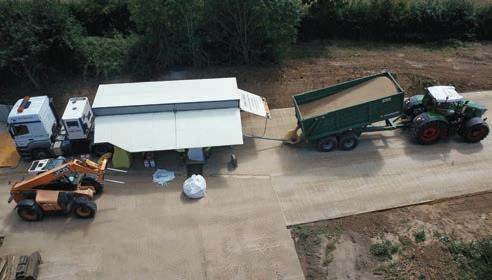
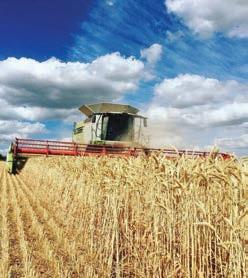



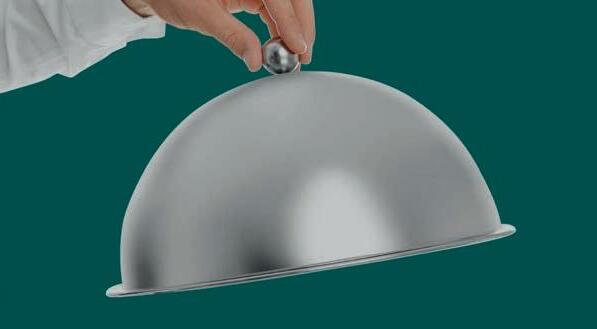
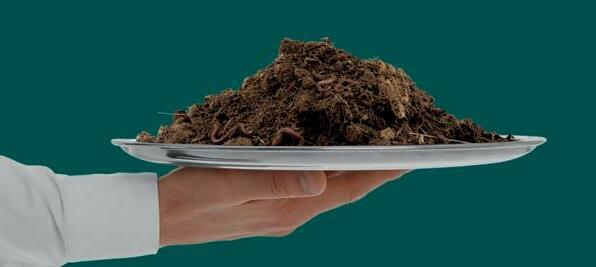


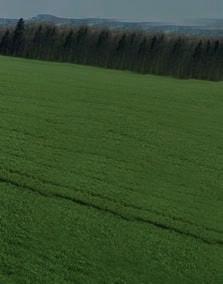









NAAC seed section chairmain, Richard Jones (pictured), comments: “It has been a good year for farmers to keep their own seed this autumn. Hot dry weather, no wet grain to dry, good quality crops and relatively high seed prices have all come together to create a perfect storm when it comes to home-saved seed.





“And who can blame growers for wanting to save some cash, with so much uncertainty in the market? Mobile seed processors across the country have seen a rise in tonnages processed on farm this year, and it





viable and professional mobile seed processing industry.
“I have been processing seed for over 40 years – both certi ed and home-saved – and I cannot imagine drilling the screenings and the cha along with all the weed seeds! It makes no sense. Independent research by the NAAC has shown that the best graded seed is more vigorous, and produces stronger plants with more tillers, which has shown that good quality seed is the foundation of a successful crop.

“Seed size and quality really do matter, and it is questionable whether drilling ungraded seed is economically viable. The skill, technology, investment, care, hard work, research and development in the seed cleaning industry through 200 years has ensured that farmers have goodquality, viable seed, whether it be home-saved or certi ed, to grow a crop to the best potential possible.

Seaweed extracts: Snake oil or sea magic?


Seaweed extracts have risen in popularity, driven by environmental pressures, the soaring cost of fertilisers, improved knowledge of their functions in plants and soil health, and their natural ability to support metabolism in plants through the provision of amino acids, hormones, sugars, nutrients, and phytohormones.



extracts should be included in any IPM programme; not simply as ‘ re ghters’ when plants are under stress, but also as a soil conditioner. Used either on their own, or in combination with other products, they will enhance the e ectiveness of any programme, the company explains.
SeaPhyte apply as soon as the crop has sufficient leaf cover to absorb the product, dramatically increasing root development and exudates into the soil


CropTek Bio Ltd says seaweed
Croptek Bio Ltd o ers a range of products made by specialist manufacturers to work in all types of crops. Most popular is SeaPhyte, which is applied immediately the crop has su cient leaf cover to absorb the product, “dramatically” increasing root development and exudates into the soil, CropTek Bio says. SeaPhyte is followed by further applications of SeaFol which maintains the plant and soil health by feeding soil microbes and boosting crop tolerance to abiotic and biotic stress. These treatments give the best returns when applied as part of a programme. FG
Follow with SeaFol which maintains the plant and soil health by feeding soil microbes and boosting crop tolerance to abiotic and biotic stress
emphasises the importance of having a These treatments give the best returns when applied as part of a programme

Sandy can boost business resilience with smart, independently accredited, easy-to-use software for measuring, managing and monetising farm carbon and natural capital.










To request a demo visit www.trinityagtech.com
Trusted by leading farms of all sizes, including:



“To have baseline data that you know has sufficient rigor gives you the confidence to explore options you otherwise couldn’t. Once you do, the continued revelation of amending management practice makes you realise just what’s possible.”
Craig Livingstone, Lockerley Estateacross the enterprise. He also wanted to test his theory that a slight reduction in total nitrogen is possible, and varied rates to match crop biomass based on varying crop biomass captured using FieldView satellite imagery (see Figure 2 below).





Feed wheats typically get 220kg N/ha and milling wheats a 20kg N/ha top-up. For the trial, the standard dose was reduced to 200kg/N/ha with a further variation of +/-20 based on low or high biomass.
Nutrient use e ciency (NUE) was the driver for these trials but they have proved useful in giving a steer on just how low nitrogen rates could go.

The farmers are using Bayer’s FieldView platform to scrutinise the results and last season’s data does pose a question over how much exibility growers have.
The results are a ‘mixed bag’. The headline result from the 2021/22 season is that the higher rates delivered the better results, even when targeted at lower biomass eld areas. But that wasn’t a universal nding.
Andrew Williamson, of Upper Overton, Shropshire, recorded signi cant di erences with his trial. He does stress it is one trial in one season but it does make him ponder how low rates can be trimmed.
He typically applies N in three splits; each with a generous dose of sulphur, as he feels this improves mobilisation.
Both treatments started with a solid application of 30kg N/ha with 40kg N/ha sulphur followed by two further liquid applications of 96kg N/ha and 28kg SO3/ha on the farm standard plots, compared to two further applications of 64kg N/ha and 18kg SO3/ha on the lower rate plots.
FieldView analysis showed a signi cant yield di erence between the two treatments with the higher rates of N delivering the higher yields (see Figure 1 below).
Robert Burden of Chilbridge Farm, Dorset, saw a similar result. In the past, he too has been adjusting
Figure 1
N rates to crop biomass and this has always paid dividends – but this season, the work has thrown up a di erent result.
He compared rates ranging from 20% below to 10% above his typical winter wheat treatment of 230kg N/ha. He applied four programmes with total volumes of 180, 200, 230 and 250kg N/ ha, the second application being the one where rate was varied.
Last season’s result surprised him, as the higher the loading of N, generally the better the result.
In the wheat trial – with three di erent elds and varieties – the higher N loading delivered the greater the yield in every case and with Robert shrewd enough to anticipate rising N prices and locking in fertiliser prices at £1/kg, the improved yield delivered the best return on investment.
But recalculate those gures on the current fertiliser price of £2/kg and that investment score shifts depending on eld and variety. In the ‘higher ground’ eld, the best return remained with the highest loading, but in others, 230kg N/ ha produced the best gross multiple of invested capital (MOIC), while in another eld the 250 and 200kg N/ha applications came out equal.
The WOSR result is probably best described as ‘neutral’ – the higher rates and resulting yield being cancelled out by increased input costs, although in the highest biomass areas the lower rates did deliver a small improvement in yield and MOIC.
Mr Burden is a little puzzled by both results, and his conclusion is that more work is needed. With the WOSR, Mr Burden suspects this is down to the drought. Research has shown that WOSR is more sensitive to drought than winter wheat. With the wheat trials, he feels a season of lower disease pressure may have had some in uence. Higher N rates usually fuel disease pressure, resulting in higher fungicide rates to preserve crop potential.
But he still made savings across some parts of the farm. In one WOSR eld satellite imagery coming in from FieldView highlighted areas of low crop biomass. Rob decided to drop the nal N application, and that paid as although yield was impaired the crop returned a respectable margin.
Richard Cross of Oxton Estate, Southwell, Notts, is looking to develop precision farming practices
Like Mr Williamson, he stresses it is one season, and more data is needed before any conclusions can be drawn, but through a combination of improved yield and reduced inputs the trial eld delivered a £105.86 improvement. Had he achieved a similar result across his wheat area that equates to an extra £35,887.
A similar approach was employed with two rape elds. Here the results were more variable, one eld delivering an improvement, the other a slight reverse. But still a modest gain over the two was recorded.
The data is a valuable insight for Mr Cross in re ning future agronomic practice, and he will build up his library with further trials this season. He has added variable rate seed to the 22/23 farm trials agenda with three rate bands based on historic eld performance.
Figure 2
Simon Gent of Stocksbridge, Hampshire, saw a mixed set of results. His WOSR trials also showed no real gain last season from varying fertiliser rates to re ect crop biomass.
Although the variable rate areas brought input savings it resulted in a 0.1t/ha yield loss; with rapeseed at £508/t Simon was worse o to the tune of £20/ha.
But caution is needed. For the purpose of the trial, the group decided to continually cut back on the higher areas of biomass and divert more nitrogen to the thinner areas.
This goes against the standard convention of loading nal N rates to higher biomass areas where the crop has the greater yield potential. Interestingly, at Stocksbridge where higher rates were used on the low biomass areas, there was a return of £91.51/ha compared to the farm standard at rate.
Some might see this as a wasted exercise, but Mr Burden doesn’t. It is another piece of data in the library that might be useful in the future. “Rarely are two seasons alike. I’m building up data over several seasons which I can use to re ne future decision making. It’s not just about improving NUE and MOIC but also our farm footprint,” he concludes. FG



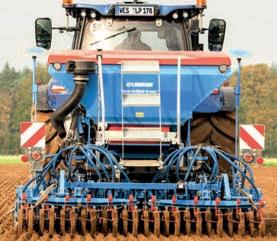

























“This is particularly the case for those growers who are thinking about increasing the areas of cover crops they will grow next summer, or for those thinking of coming back into or extending their oilseed rape acreage. The value of both crops is high so it’s best to avoid compromising their establishment if avoidable,” says technical manager Dick Neale (pictured).
“This puts more signi cance on how weed control is built up in the spring to avoid residual herbicide activity carrying over,” he says.



“It doesn’t mean holding o controlling the di cult weeds, but look at how ‘softer’ sulphonyl ureas (SUs) could work whilst still controlling the weeds without the long tail of residuality. It’s the ne details that


will matter.”
Mr Neale points out that grassweed contacts such as SU’s Hatra (mesosulfuron-methyl + 2g/ litre iodosulfuron-methyl-sodium) and Paci ca Plus (30g/kg mesosulfuron-methyl + 10g/ kg iodosulfuron-methyl-sodium + 50g/ kg amidosulfuron) can have long-lasting e ects in the soil, so consider this if planning to incorporate them in spring herbicide programmes where cover crops or oilseed rape is following.


He explains: “We used to apply these products in the autumn and issues rarely occurred, but as their e cacy on black-grass has declined, they are now increasingly used to tackle wild oats, bromes and ryegrass with a spring application.

“Wild oats can emerge anytime from February to April, and it is when herbicides are applied later to these crops that issues can be seen in following covers and oilseed rape.
“Also, broad leaved weed SU Ally Max (metsulfuron methyl + tribenuron methyl), covers a whole range of weeds and has an extended growth stage on its label so is a popular option –but it is also very persistent in the soil.”
He suggests an alternative to this would be to use tribenuron methyl and thifensulfuron as a mix with no metsulfuron. “Although there is a reduced weed spectrum – there is nowhere near the same levels of persistence.
“Other options would be products with actives containing orasulam and uroxpyr or orasulam and hauloxyfen-methyl.”
Mr Neale notes it is also important to avoid stacking herbicides with the same active as it is easy to reach damaging levels this way without realising it.
“You want to avoid levels of DFF building up as it is very residual and can form a pencil thin line in the top of the soil. When a new crop meets this, it can really knock the vigour out of it.
“It’s not di cult for this to happen without realising it,” continues Mr Neale. “For example, if a pre-emergence application of Liberator ( ufenacet + di ufenican) goes on at 0.6-litres/ha, this contains 60g of DFF.
“If using a split label rate then it is possible to go back on post-emergence six weeks later, which is perfectly legal and safe to do, with 0.3-litres/ha (30g DFF) making that a total of 90g DFF.
“However, if Crystal ( ufenacet + pendimethalin) is also being used in the programme, DFF is often added to this – so that adds in another 50g of DFF which, if then followed up with 0.6-litres/ha of Liberator, takes the amount of DFF up to 110g.
“As it’s been dry, it’s possible that one of the applications hasn’t worked, so black-grass might be starting to come through, which means another 0.3-litres/ha Liberator (30g DFF) is added to the mix, which would bring the total amount of DFF up to a total of 140g!
“This shows how important it is to scrutinise the partner contents of all products and actively utilise product sequences that reduce the overall loading of persistent actives. For example, ufenacet can be sourced with picolinafen or pendimethalin and, of course, as a straight active.” FG












At Groundswell 2022 earlier this year, NIAB’s John Cussans and Will Smith discussed some of the opportunities for mechanical weed control in-crop in a regenerative agriculture system.
Mr Cussans commented that weed control and weed management within a regen system is one of the key threats and risks when adopting and transitioning into a regenerative ag system, and should be taken seriously. From the weed biology point of view, the key principles include:
• ‘Restructuring’ the seedbank and changing the relationship between seedbank and weed seedling density
• The fate of weed seeds on the soil surface becomes more important to understand (‘irregular’ behaviour)
• The role of residues becomes more important
• Changing the overall balance of weed management in the system
• Lack of direct mechanical weeding also creates opportunities for species capable of perenniation.
He also brought up what he referred to as two elephants in the room; the sustainable use of glyphosate in regen ag systems, and also asked where growers see the role of inversion cultivation, if at all, in respect to sustainable weed management.
Restructuring the seedbank
Mr Cussans says the key feature from the weed biology point of view in a conservation ag system is that you completely restructure the physical nature of the seedbank.
He referred to trials NIAB has done, comparing a deep non-inversion establishment system with a direct drill (slot drill) approach (see Chart 1) over a two-year direct drill approach.
The primary di erence between the non-inversion and the direct drill systems is that in direct drill, weed seeds had been accumulated within the top 5cm surface zone, which is the live part of the seedbank where seedlings can be recruited into the crop from, while all the rest at greater depth are a long-term persistent seedbank.
But, he explained, when you look at the number of actual seedlings within the crop, because of the no-till drilling, you reduce the proportion of seeds in that live pool which you actually cause to germinate. The net e ect in this trial is therefore exactly the same, so it’s important to remember that by not disturbing the soil, not stimulating the weed seeds to germinate, you’re reducing the number of seeds which germinate; but you are also running a system with a larger seedbank available.
In summary, in a no-till system, the seeds are shallower in their distribution, the proportion of seeds ‘recruited’ is lower, but the absolute total size of the seedbank is much higher. He therefore concluded that you can’t rely on the no-till reduction of seedling recruitment alone, unless the seedbank population is also lower.
He commented that the other element of a true no-till system is that you need to think about weed seeds on the soil surface a lot more. Growers have got used to a regularised, predictable pattern around cultivated systems, with seed burial, big stimulation to germinate around drilling which causes predictability and regularity in germination behaviour, but when transitioning to
Pre-drilling total weed control Rotational sequence Seed burial Perennial phases
no-till you’re moving away from this pattern completely.
Increased weed seed on the soil surface is far less predictable/ regularised each year as they’re subject to more seasonal variability year-to-year.
According to Mr Cussans, you need to achieve weed control from a whole di erent set of rules, as you are completely changing the balance of where the weed control is coming from in this system (see Chart 2).
“We are amplifying the importance of pre-drilling total weed control by taking away the cultivation part of direct mechanical weeding which reduces seed burial; and we are hopefully increasing the role of rotational sequence and perennial phases, which should decrease reliance on pre-crop and in-crop weed control,” he explained.
Putting this “hyper-reliance” on pre-drilling total weed control to start crops with no established weeds puts a lot of pressure on glyphosate.
Referring to a long-term weed study in regen ag systems carried out in France, Mr Cussans quoted Bruno Chauvel, who headed up the French study, as saying: “If you embark on the transition with a single dominant problematic weed, you will have that weed as a problem in the end.” Mr Chauvel was also quoted as commenting that there is a “strong indication that the farmers who have best ‘mastered’ the [conservation agriculture] system are using a wider range of tools and are better optimising herbicides (with more emphasis on post-ems) alongside cultural and non-chemical weed control.”
Mr Cussans reiterated that a reduction in direct mechanical
In-crop weed control Crop competition Direct mechanical weeding
weeding and seed burial (as a result of non-inversion cultivation systems) means a greater reliance on predrilling total weed control, particularly for grassweeds.
He pointed out that it is absolutely critical that if we are going to successfully make this transition and see less weed pressure in the future, we need to look after glyphosate and maintain its e ectiveness. While we do not currently su er with glyphosate resistance in the UK, Mr Cussans believes we have never been closer to it.
He says if we’re not going to use this powerful ‘tool’ [mechanical weeding] for weed control, we need to nd something else which is as e ective – although he feels perhaps there should be a place for inversion tillage within regen ag systems if used appropriately.
One tool Will Smith of NIAB has been working with in his research into weed management in narrow row crop systems is inter-row mechanical weeding.
He has been testing it alongside herbicides as a management tool for grassweeds in 2020 and 2021, and found that in a conventional system with a very high background population of black-grass, inter-row cultivation alone is giving an average of 30–40% control of black-grass, while the herbicide programme of Liberator + Defy + Atlantis (postem) alone has quite a high level of variability due to growing conditions, so is not the absolute solution.
He explained that if you combine these techniques, using the herbicide programme along with two passes of inter-row cultivation, you’re able to increase the control as well as making it more robust. FG
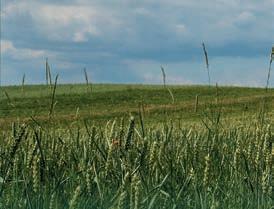
Where possible, this treatment should utilise an alternative mode of action to any previous herbicides and be timed appropriately to maximise weed control, explains UPL. Xerton, containing ethofumesate, provides an alternative active ingredient in the herbicide stack and the manufacturer says it has consistently shown an increase in black-grass control (average of 7% increase in e cacy from nearly 500 trials conducted over a 10-year period).
Where crops have yet to be drilled in high grassweed pressure elds, you need to ensure as many cultural control methods as possible have been undertaken prior to drilling and then follow up immediately postdrilling with a robust pre-emergence herbicide programme.
Xerton provides a useful alternative mode of action in the autumn post emergence residual herbicide stack on winter wheat.
UPL explains that Xerton should be applied at 0.6-litres/ha in combination with other residual herbicides such as Reliance (400g/litre ufenacet, 200g DFF) at 0.3–0.6-litres/ ha.
It should be applied post emergence of the crop BBCH 12-16, when the grassweeds are between one true leaf and early tillering (BBCH 11–21) with the optimum being



weed growth stage 11–13. Optimum conditions for application include:
• Seedbed: Fine, rm, free from clods with loose soil consolidated; do not roll or harrow within one week of application



• Soil type: Do not apply on sands or very light soils containing a high percentage of stones: on stony or gravelly soils, there is a risk of crop damage especially if heavy rain falls soon after application; do not use on soils containing above 10% organic matter and be aware that weed control may be reduced on soils with more than 6% organic matter

• Moisture: Su cient soil moisture is necessary for residual activity. Residual control may be reduced under prolonged dry conditions; do not use on water-logged soils or soils prone to waterlogging
• Weather: Above average rainfall, heavy rain falls shortly after application, or excessive dry periods will all reduce the e cacy of weed control; do not spray during prolonged periods of frosty weather, or when frost is imminent
• Do not apply to crops su ering from stress

• Do not overlap spray bouts as crop thinning may occur

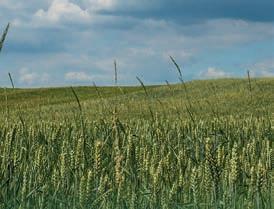

• Applications at peri-emergence of the crop may cause injury. FG

Early drilled winter wheat crops are now well emerged and, where black-grass is a problem, a post-emergence residual top-up herbicide will now need to be considered.
The Farm Sprayer Operator of the Year Award (FSOOTY) is now open for entry. The competition recognises the very best practice in sprayer operation, as well as providing a great opportunity for operators to share experiences and advance their learning.

FSOOTY is hugely rewarding for everyone to enter and it is great fun to be involved in the camaraderie between sprayer operators, according to Syngenta application specialist, Scott Cockburn (right).







“Everyone who enters has the same application challenges and frustrations, so there’s a huge amount to gain from sharing the solutions. One thing that’s repeated every year is that entrants nd they learn something new from other operators and can improve the way they work,” he highlighted.

“Previous FSOOTY nalists remain rm friends and continue to share experiences, long after the competition is over.”



FSOOTY gives sprayer operators clear


recognition for their highly important role, as well as enhancing their continuous professional development and industry position.
All the nalists win a trip for two to Cereals 2023 and are presented with their awards in the Sprays & Sprayers Arena. The overall winner claims a study tour to the awe-inspiring AgriTechnica European farm machinery showcase event in Hanover, Germany.


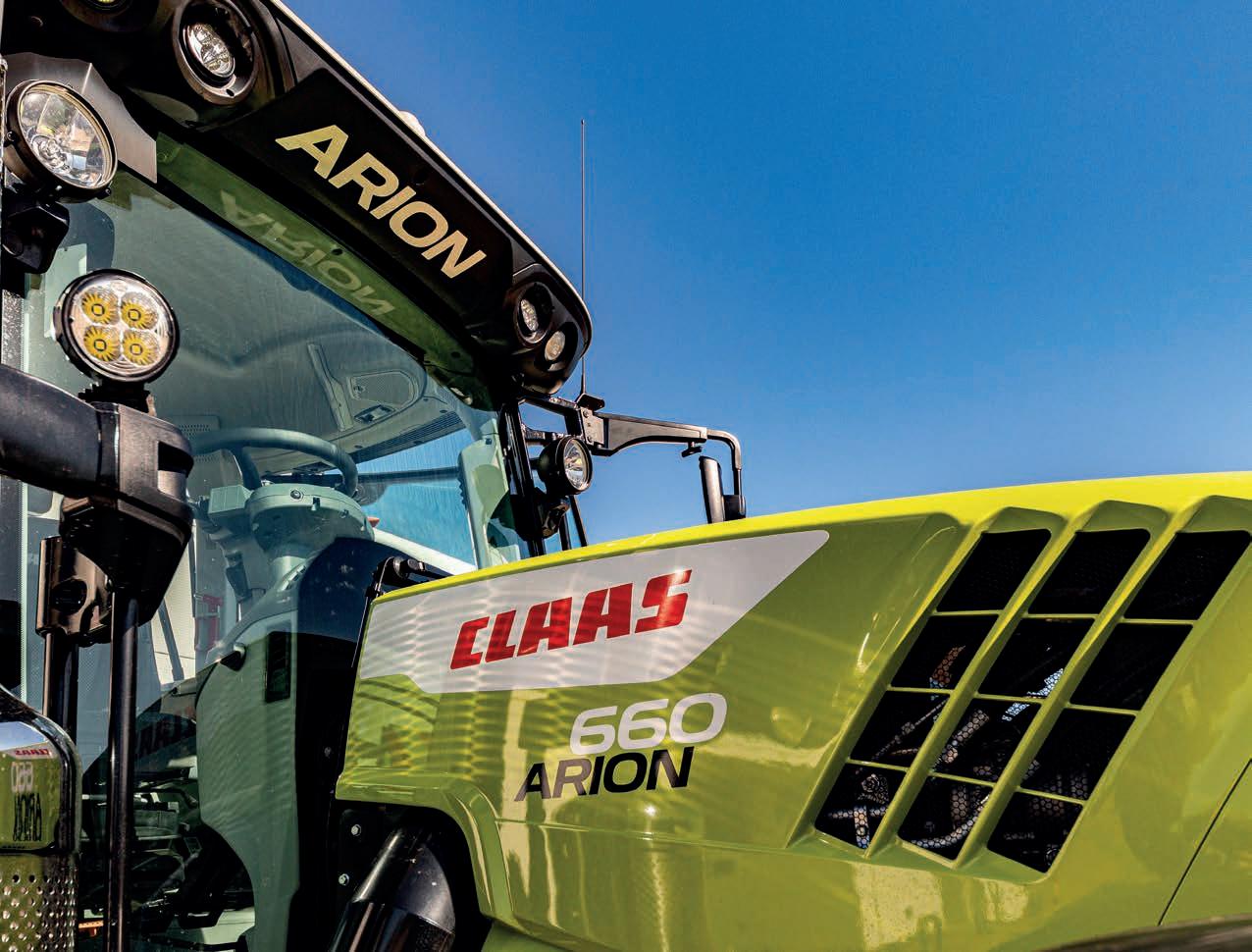
Commenting on the role of FSOOTY, NFU deputy president and Essex farmer, Tom Bradshaw, said: “We know there is ever greater scrutiny on the way we use plant protection products. It’s absolutely critical that we can demonstrate professionalism right through our industry.
“The competition is such a great opportunity for operators to demonstrate the ways that they maximise e cacy, the way they look after the environment and why they should be the Farm Sprayer Operator of the Year.”
“There’s a great feeling of pride that goes with winning,” according to FSOOTY 2022 award winner, Steve May. “Being recognised for working to a high standard of professionalism and competence was extremely rewarding for me.
“My initial goal was to test myself, to learn from others and to benchmark myself against other professional operators, as well as to keep moving forward and learning more. FSOOTY is a great way to learn from others, and to share your experiences.”
Steve is advocating for more sprayer operators to enter FSOOTY to improve their knowledge and use the opportunity to continue to move spraying systems forward. He suggests it’s a chance to meet new people and swap ideas, with previous winners including Stuart Woods and Matt Redman having been inspirational in the way that he now approaches spraying challenges.
Operators can enter FSOOTY 2023 direct on the Syngenta website: www.syngenta.co.uk/ fsooty Entering FSOOTY automatically gives NRoSO points. Farmers and agronomists can also nominate sprayer operators for entry on the Syngenta website.
Operators will also be able to enter the competition on the Syngenta stand at LAMMA in January. Entries close on 11th January 2023. FG






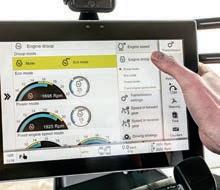
























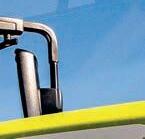
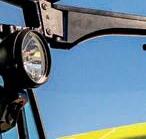
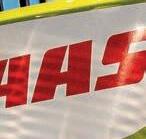




It’s such a relaxed drive and so simple to operate.




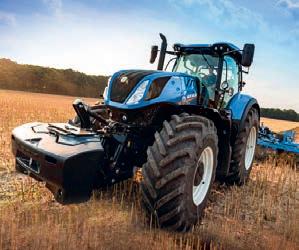
































factors could have been left out of the calculation, e.g. alternative accommodation, demolition, asbestos removal, contaminated waste removal, and professional fees for project management planning and the Construction Design & Management Regulations 2016 etc.


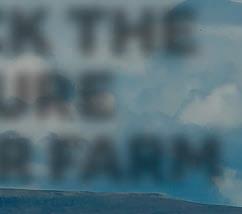



Whilst the replacement cost of modern farm buildings is relatively easy to calculate, traditional buildings, which may be listed, are trickier. This often results in underinsurance. In the last three years, construction in ation due to Covid, supply chain problems, and more recently the phasing out of red diesel for construction use, has seen prices rise by over 30%. This is compounded further by higher construction labour costs.





the reduced budget.









Often on large claims the insurer will appoint a loss adjuster to work on their behalf and they will insist on tendered procurement for replacement; this will often require the input of a professional.




surveyors Salter & McKenna provide advice on making sure you are not underinsured.




The farmhouse and farm buildings are very important assets to any farm and tend to have a high replacement cost. Not only are they used for accommodation and business operations, they may also be used


as collateral for lending. Quite often, they are underinsured – commonly the result of a guesstimate of the replacement cost.
The replacement cost may be covered, but many other



An example of underinsurance is as follows: A farm general purpose building has a current replacement value of £500,000, but it is only insured for £400,000. The building is lost in a re and, as the building is only insured for 80% of its value, the farmer is left to nd the extra money. To make matters worse, the wording of the policy may be that it is for a ‘like-for-like’ replacement, so the farmer must put up a similar-sized building to replace the one lost – and cannot put up a lesser building to t

To avoid underinsurance, it is important that a regular appraisal of values is undertaken. Each year the insurance company has an annual review of each farmer’s needs. The old gures are usually looked at and a discussion is had regarding whether to increase or leave the premium as it is. Although this is an important process, it would be more prudent for an appraisal of the buildings to be undertaken every three years by a professional with the knowledge to calculate the replacement costs for the whole farm – and to produce a schedule of buildings and their values. This document can be the starting point for discussions with the insurer.
The professional would use a wide range of information to produce a replacement value from current market knowledge, recent rebuild gures and BCIS (Building Cost Information Service RICS).
If you would like to know more, please contact Alice or Cameron from Salter & McKenna. FG
Triton
Triton
Triton




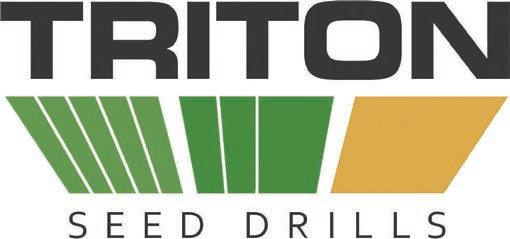
Insulation company TAG says it has been receiving numerous enquiries due to leaks and condensation, which become more apparent at this time of year.
TAG Insulations believes closed cell spray insulation is the best way to deal with this, giving roofs a new lease of life and increasing stabilisation and weatherproo ng of the building. “With a 25-year manufacturer’s guarantee and being far cheaper than a new roof, it is a perfect solution for ageing or damaged roofs,” the company reckons.
The bene t of this insulation versus other types is that it adheres to every surface, giving a complete protective layer of insulation against the issues mentioned above. “Other insulation methods can have a much tougher time as they simply don’t last, while being less e ective against these issues. In fact, most cannot do what TAG’S can provide,” TAG claims.
Once installed, the company promises that the insulation will be as good after many years as it was on day one. Another major factor is it can help extend the life of your roof, which can save you thousands of pounds compared to the cost of replacement.
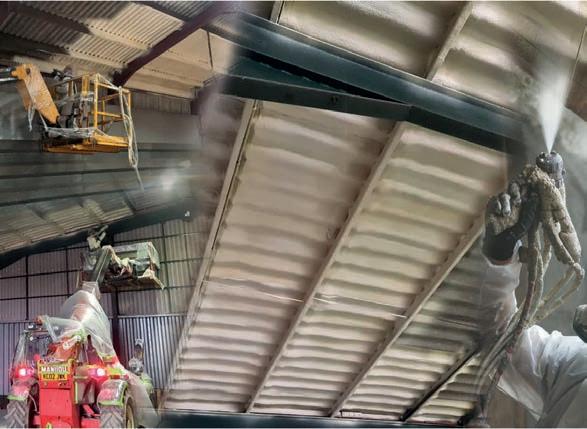






Some of the other bene ts of the TAG Insulation system are:

• A stable temperature all year round and condensation elimination
• Prevents leaks
• Stops the spread and reduces any growth of fungal spores, and helps prevents rot
• Helps sound deadening and stabilisation
• Class 1 re retardant and asbestos containment
• Energy savings
• Brightening of the sprayed area

• Prevents further deterioration of the roof, and seals holes, gaps and cracks
• No harmful chemicals
• Although there is a 25-year guarantee, the product itself can last much longer – in fact, TAG says it has seen it last longer than 30 years.
For advice, contact TAG directly.
TAG Insulation also provides a free inspection and quotation service. FG

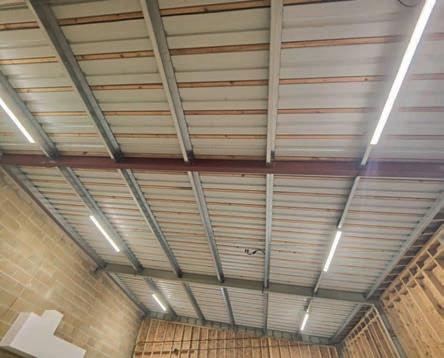



No matter how challenging your needs, V-FLEXA is your best ally for agricultural trailers, tankers and spreaders. This latest-generation product features VF technology, which enables the transport of heavy loads both in the fields and on the road at lower inflation pressure. V-FLEXA is a steel-belted tyre with a reinforced bead that provides durability, excellent self-cleaning properties and low rolling resistance even at high speeds.
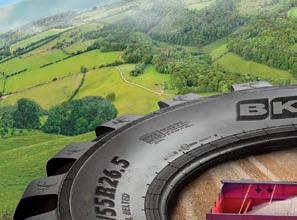











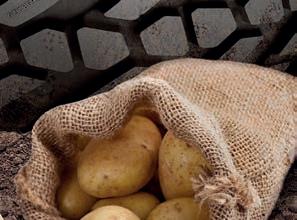
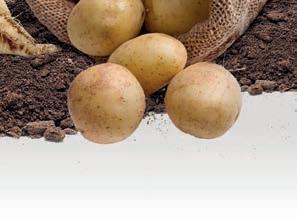


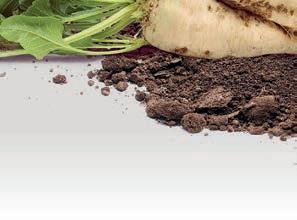

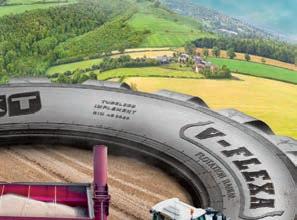
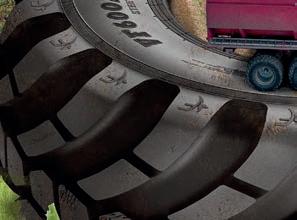

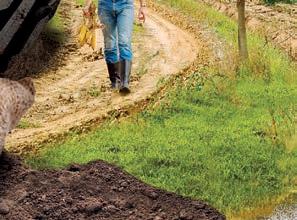




V-FLEXA is BKT’s response for field and road transport with very heavy loads avoiding soil compaction.
IMPORTER FOR THE UK
Tel: +44 0151 728 4171 bkt_enquiries@kirkbytyres.co.uk www.kirkbytyres.co.uk
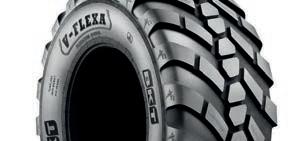
The cab has 11% more glass area. A new cab roof pro le provides space to stow the sun visor out of sight to avoid restricting the view through the screen. The front wiper is relocated from the top to the bottom of the screen with a wider 240-degree arc, and an extra sweep is made a few seconds after it is switched o , ensuring the screen is clear.






T7-series models are a rm favourite with larger mixed and arable farms as well as contractors. The current line-up includes long-wheelbase (LWB) models of 230, 245, 260 and 270 maximum horsepower, and the slightly larger T7 HD-series consists of three models of 275, 290 and 315hp. The new T7.300 model slots in at the top of the T7 LWB series and provides a cross-over with larger T7 HD models, with 280hp rated and 300hp maximum, giving a powerto-weight ratio of 28.3kg/hp. Maximum torque is impressive at 1,249Nm.
The pre-series demonstration tractor was on 710/70R42 rear tyres and 600/70R30 fronts. The current T7.270 can only take tyres up to 1.95m diameter, but the new model can be equipped with 2.05m Group 48 tyres which increase traction and improve ride comfort.



The engine is similar to existing T7 and T7 HD models, but it is the only model in the T7 line-up with an electronically controlled variable-geometry turbocharger.
The advanced turbo helps achieve an extended at torque curve, and as it is considerably bigger than the standard turbo the new T7.300 has a ‘power bulge’ on one side of the bonnet.
Stage 5 emissions standards are met using a larger SCR chamber, and extra cooling for the more powerful engine is provided by a new mesh design in the bonnet slats.
Engine service intervals are 750 hours.
The diesel tank capacity is 465 litres, and up to 54 litres of AdBlue can be carried.
The new model is only available with AutoCommand CVT transmission and the latest design features improvements over earlier versions including a revised gear cut angle and nish for reduced noise. The electronic parking brake is relocated to the rear axle, reducing noise during activation.
There is a larger front axle with heavy duty hubs, and the front axle suspension can be adjusted in three stages for a rm or softer ride. The new axle will eventually be tted to T7.260 and T7.270 LWB models too.

The adjustable front suspension o ers advantages when attaching and removing front ballast. Pressing and holding the external linkage control button lowers the front linkage to its base position, then releasing the button and pressing it again drops the front of the tractor even further – in e ect extending the travel of the front linkage so that weights or implements can be lowered completely to the ground. As soon as the tractor pulls away again, the front suspension automatically rises to its working position.
Rear linkage capacity is 10,464kg and optional hydraulic stabilisers can be adjusted from the cab. The front linkage has been upgraded to 6t capacity. Higher speci cation rear spools come with lever release. The front-end casting is new, with integrated hydraulic pipework and couplers which improves the appearance and reduces the risk of damage.
Hydraulic oil ow of 150 litres/min
is standard and an upgrade option increases it to 170 litres.
Electronic control of the PTO speed replaces the previous rotary mechanical selector.
Apart from the new T7.300 decals, the most obvious indication that the model is new is the cab. The Horizon Ultra cab was introduced for the updated T7 HD-series earlier this year, and it features many improvements over the previous T7 cab which was already highly rated.
“The oor area is larger with more room for tall operators, plus extra space for the passenger improving ride comfort,” explained New Holland tractor product specialist David Redman. “It’s been well received on T7 HD models, and one of the most frequent questions we have had this year from existing T7 users is when the new cab will be available for the T7 LWB-series too.”

The all-around view from the seat is improved. A steeper mudguard angle makes it easier to monitor the area immediately next to the rear wheels, and the modi ed mudguards
provided space for larger doors improving cab access.
There is also a better view of front- and rear-mounted hitches and implements, and a front grillemounted camera is standard. A new light package with up to 24 LEDs can be speci ed, with activation in groups to suit di erent applications. The rear work lights can be set to operate automatically when reverse is selected.
The cab is among the quietest in the industry with an interior noise level of only 66db. Heating and air conditioning air ow is increased, and zone selection allows the air to be directed where it is needed through vents all around the cab. Nine front console vents keep the windscreen mist-free in colder weather, while the operator’s feet are kept warm at the same time. The top of the range Auto Comfort seat features lateral suspension and climate control, and an even better ride is available through optional hydraulic cab suspension which allows the user to adjust the damping in three stages from the seat.
A media system with two speakers is standard but an upgrade to four speakers with a sub- oor-mounted woofer is an option.
The T7.300 can be equipped with larger 2.05m rear tyres for maximum traction. The front axle is new with improved suspension and heavy-duty drive hubs and the front casting houses and protects the hydraulic components.
As well as extra power, the T7.300 gains the latest Horizon Ultra cab.
The ignition switch is relocated below the right-hand-side window. An optional remote fob is available which unlocks the cab and provides key-less starting. If the fob is faulty, then the cab can be unlocked manually, and a PIN code entered to start the engine.
Another upgrade is extra storage. “Customers told us that they wanted more storage, and the new cab includes a 30-litre space behind the seat, a covered compartment behind the passenger seat with an integral USB charging point and a mains voltage socket, and there are also open storage trays on the right side of the cab, and a netted storage bin within the roof bezel,” stressed David.
“There is a 12-litre fridge below the passenger seat with a shelf and room for two 2.5-litre drink bottles, and the option of an extra oor-mounted fridge powered from a socket in the foot throttle housing.”
Most controls are logically grouped on the SideWinder Ultra armrest, and task set-up and monitoring are through the user-friendly IntelliView 12, 12in display. Eight armrest-mounted con gurable switches have LED colour coding, so that when functions are changed the colours also change to avoid errors or confusion. Options include programming joystickmounted buttons for headland management sequences so that the user doesn’t have to move his hand from the control. Advanced connectivity allows operators to connect mobile devices to the tractor display and operate them with buttons on the armrest.
A pad of 15 rubber-faced buttons located by the main joystick includes quick-keys to select menus for speci c areas on the screen. Other options for menu selection include
direct touch to the screen, or a handy scroll selector and button.

Top level Isobus Claas 3 with Tractor Implement Management can be added. Many T7.300 tractors will operate large square balers, and an exclusive feature introduced on the new tractor allows the tractor to ‘learn’ the plunger stroke and inject extra fuel an instant before the plunger strikes the bale. This provides much smoother operation, and trials have also demonstrated improved fuel economy with savings up to 12%. The front axle suspension reacts automatically too with each plunger stroke, reducing the rocking motion.
The optional CentreView steering wheel-mounted display was tted to the test tractor. It was introduced as a new option for the latest T7 HD models, and David Redman said that many operators who have speci ed it so far wouldn’t want to be without it now, but the bene ts aren’t obvious until it has been tried.
The main multi-function joystick has gained a new ‘kill-switch’, increasing safety. Pressing it disengages the PTO and deactivates the hydraulics. An additional upgrade is engine exhaust brake activation from the joystick, but this can also be programmed to activate automatically when the foot brake is depressed.
An additional ‘mouse’-joystick on the armrest is an option to operate the front and rear linkage.
A small joystick can also be added and is ideal for tasks such as buckraking on a silage clamp – allowing one-handed operation of forward and reverse shuttling plus hydraulic linkage and spools while the other hand steers.

Engine 6-cyl, 6,728cc, Stage 5
Power 260hp @ 2,100rpm (rated) 300hp (max)
Maximum torque 1,250Nm @ 1,500rpm
Max speed 56kph
Front suspension Terraglide
Rear axle Bar type
Tyres tted to demo tractorRear 710/70R42 Front 600/70R30
Rear linkage capacity10,464kg
Front linkage capacity5,925kg
Hydraulic ow 150 litres/min std. 170 litres/min opt
Controls
SideWinder Ultra armrest.
Intelliview 12 display with Next Generation PLM Intelligence. PLM Connect
Wheelbase 2,884mm

Shipping weight 8,900kg
Max gross vehicle weight15,000kg
Fuel tank capacity 465 litres
AdBlue capacity 54 litres
The test drive on an Essex mixed farm provided an opportunity to try the new T7.300 cultivating heavy land stubble with a set of 6m discs.
First impressions regarding the new cab are excellent. The Horizon Ultra cab was a big improvement when it was added to T7 HD models, and it is just as impressive on the T7 LWB. There is plenty of room, the view all around is superb, and the quality nish and control arrangement make it an attractive place to work.
New Holland’s quoted noise level of 66db will mean little to most potential users, but even using maximum power in the eld it remains really quiet. Whether idling or at full throttle it is easy to have a conversation with a passenger in the cab.


The CentreView steering wheel screen is clear and easy to use. It displays all the essential operating information including the ground speed, as well as the three memorised cruise control speeds. Engine revs, fuel and AdBlue levels are also shown, and the system can be set to show the rear camera image when reverse is selected.
There was limited space on the angled headland for turns, but the big tractor proved very manoeuvrable.
The disc harrows were lifted and lowered using the hydraulic spools, and the large thumb levers with their colour coded functionality became quickly familiar.
The T7.300 is a very user-friendly tractor, and it will be popular in a competitive market.
“For customers needing the extra pulling capability of the heavier T7 HD series, those models will remain the preferred option,” continued David Redman. “But there are many situations where a tractor the size and weight of the current T7 LWB models is ideal, but where additional power might allow use with a wider range of large implements for increased productivity, and that is where we expect the new T7.300 to prove especially popular.
“For heavy transport work, the extra power will be an advantage too. The latest cab is superb, and users of the current T7 series will notice a big di erence in terms of comfort and ease of operation.” FG
















JH Vaudrey & Son Ltd have been supporting farmers with their building requirements since 1993 and have a wealth of expertise when it comes to the requirements of today’s agri business. JH Vaudrey & Son Ltd can provide grain stores complete with the most up to date grain handling equipment, silos, dryers, and straw barns. We also provide a maintenance service to all properties and farm buildings.



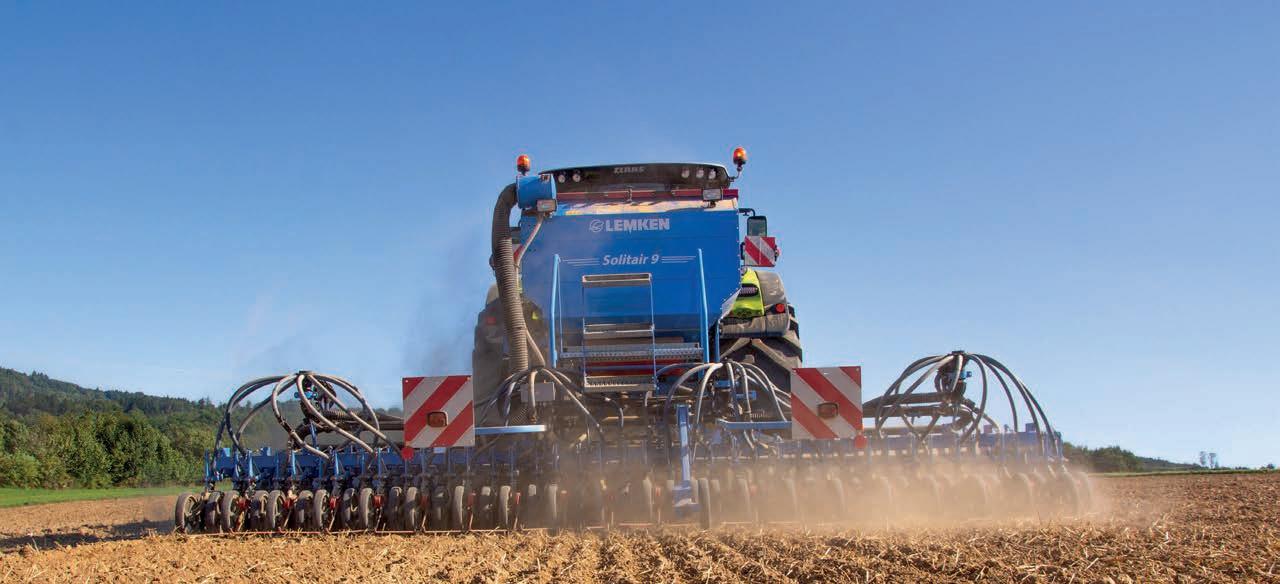

Recognising a gap in the market, Auger Torque launched the Cone Crusher Bucket to o er a simple, e cient and cost-e ective way to reprocess and recycle small volume construction rubble and debris into useable aggregate and hardcore.
The new product has saved customers money, time and hassle by re-using their onsite rubble – so much so that one customer says he is saving up to £1,000 per day on his farm, Auger Torque says. The





company is currently in the midst of a UK-wide demo roadshow.
The Cone Crusher Bucket is engineered to work with and has been tried and tested on; excavators (3–10 tonne), skid steers, backhoes,
mini loaders and telehandlers. It provides a simple, e cient, and cost-e ective way to reprocess and/or recycle small volume construction rubble and debris into useable aggregate. With an output of 5–10t per hour (depending on your material), it saves on transport costs of removing onsite waste and material costs of importing hardcore to site – with minimal site tra c, delays and hassle.
From general clay construction brick, light concrete walling blocks, hollow concrete ‘breeze blocks’, concrete pavers, asphalt and more, the Auger Torque Cone Crusher Bucket can crush to an output produced material size of up to 70mm. Ideal for use in applications including: track and yard surfacing, landscaping, roadways and farm roads, foundations or using as a base layer below poured concrete or lling a disposal skip most e ciently.
• Easy to use and compact for small working sites as a single person operation – compatible with excavator, backhoe skidsteer, telehandler and mini loader machines
• Bucket mouth for e ective
scooping and sorting
• Seven-sided rotating cone inside a cylindrical drum


• Grinding faces made in steel and tungsten carbide
• Output material from dust to 70mm
• Built around a series 3.5 sub gearbox
• Auger Torque’s industry-leading warranty.
Matt Hencher, global engineering manager, says: “The Cone Crusher Bucket is a great product to add to our portfolio, perfect for construction, agriculture, farming, estates and so on. It removes the hassle factor of arranging skips to take rubble away and waiting for hardcore to be delivered. With sales already in the UK and Europe, and 60,000 views of our video on TikTok, we’re really excited for the opportunities this product presents across all our locations.”
If you’re interested in the demo roadshow or require more information, contact Auger Torque directly, or watch the video on the company’s YouTube or TikTok channels:
• https://www.youtube.com/ watch?v=o7uajB9VUv0
• https://vm.tiktok.com/ ZMFdW8YCV/ FG


AVR’s


The new Clean & Go bunker provides additional cleaning by means of a cleaning roller mounted between the bunker oor and the elevator. Opting for a rod web as an elevator web also brings additional sieving capacity.


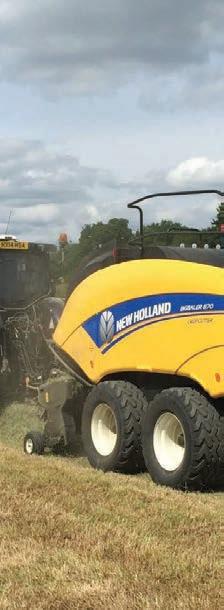
Non-stop harvesting o ers huge logistical advantages. With the Clean & Go bunker, AVR combines the best

of both worlds, AVR reckons. First of all, there is the 6.5-tonne bunker, which provides enough of a bu er to continue harvesting if the trailer is not yet present, and ensures smooth deployment in the eld. Secondly, there is the option to unload while driving, which saves a lot of time. There is no longer a need to stop,
raise the bunker and manoeuvre around the trailer to be able to unload.
As the elevator can rotate independently of the bunker oor, the bunker can be used at full capacity.
The new Clean & Go has a capacity control function for unloading the bunker. To be able to empty the bunker as e ciently as possible, the speed of the elevator is automatically adjusted based on the product ow in the elevator. This increases ease of use when unloading while harvesting.
Thanks to the three articulations in the elevator, it is possible to unload deep inside the trailer. If desired, an optional shock absorber can be installed to further break the fall or for lling crates while driving.
Technical speci cations:
• 6.5t bunker with elevator
• Hydraulically driven bunker oor
• Hydraulically driven elevator
• Hexagonal transition/cleaning roller (18mm spacing)
• Sieving web with pitch 35/star PVC panelling 16mm
• Elevator sieving surface = 1.65m x 4.55m = 7.5m2.
The Spirit 7200 with Clean & Go bunker was on display for the rst time at SIMA Paris from 6–10th November in Paris, followed by the Belgian Interpom trade show from 27–29th November at Kortrijk Xpo. Visit www.avr.be/en for more information about the Spirit 7200 and its unique haulm separation system using a haulm roller right before the in-line pintle belt. FG
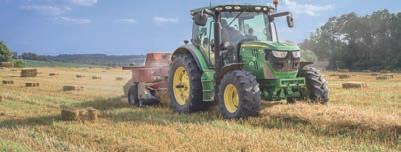
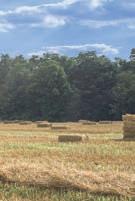




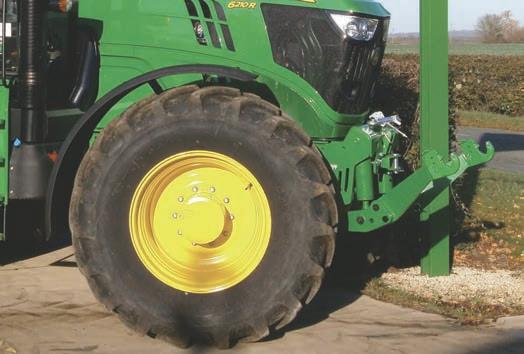




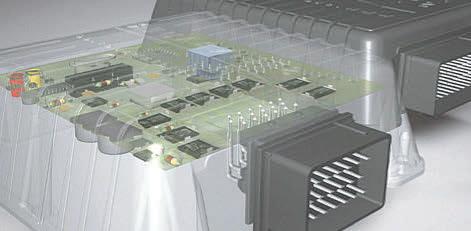



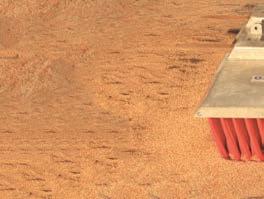
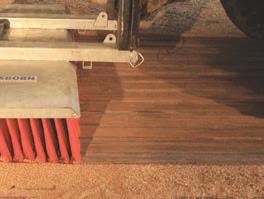



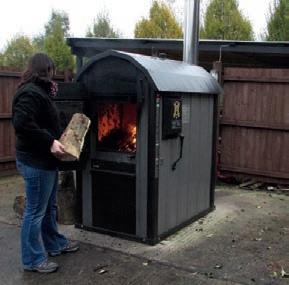
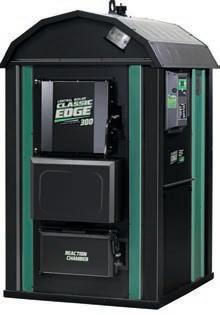




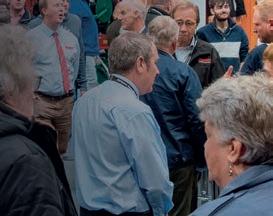

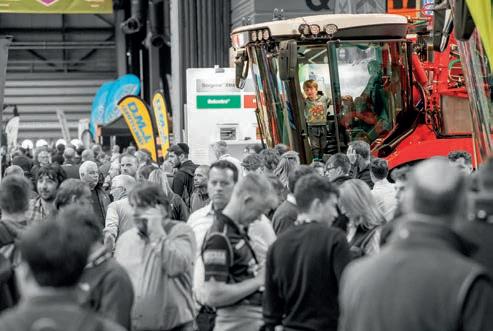



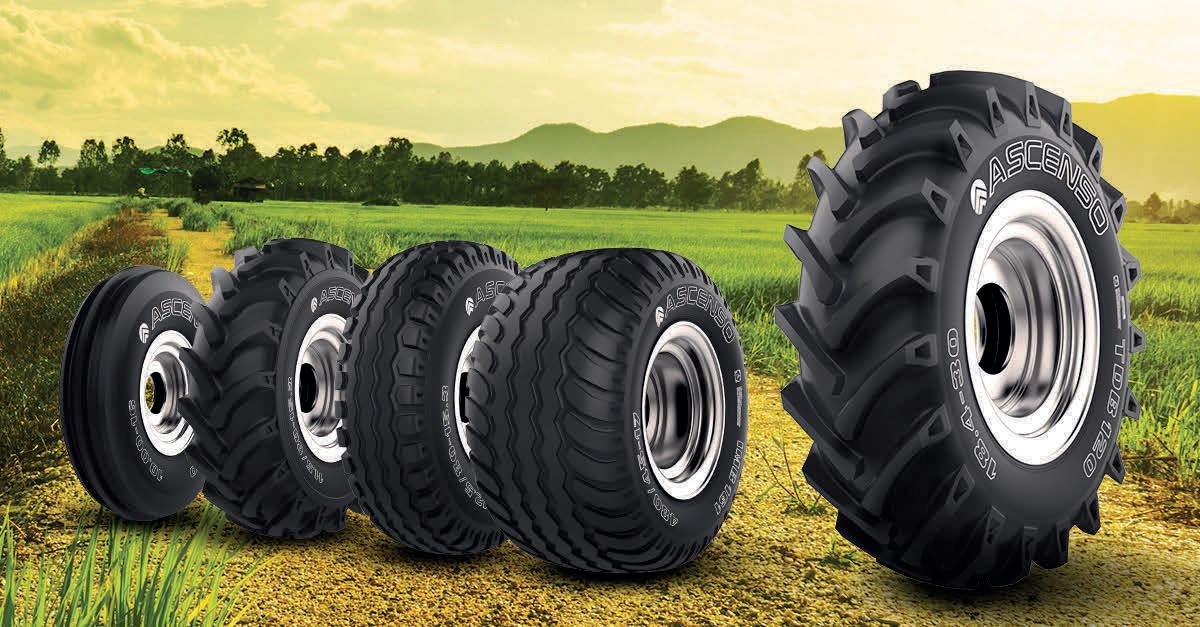


An Essex farmer who grew grain maize for the second time this year says the crop is so pro table and provides so many bene ts for his operation that he has invested in his own specialist machinery to harvest it. David Williams visited the farm.



James Nott grew a small area of grain maize as a trial in 2021, which was harvested on the 10th November. A contractor drilled the maize and a combine with a maize header was borrowed from a nearby farmer who has grown the crop for several years.


“One of the main issues a ecting the crop’s popularity in the UK is that many farmers don’t want to be combining in October,” explained James, who farms near Clare. “As a break crop which also allows growers to tackle black-grass, you couldn’t ask for more. It’s pro table and easy to harvest, and there is far less risk of damaging the ground harvesting in a wet autumn than there would be growing crops such as sugar beet.
“There is a small fusarium risk, but that is easily managed.”
“We use John Deere combines, and similar machines are used extensively in the USA for maize harvesting,” continued James. “We have a large X9-series and ordered a Ziegler 12-row maize header to suit it from Tuckwells, our local John Deere dealer. However, the header wasn’t available in time for the 2022 harvest so the Ziegler UK importer, Abrey Agricultural Ltd, lent a smaller 8-row header instead. We borrowed an S-series combine from Tuckwells to match it and, apart from the maize header, the only change from standard speci cation was tting a large-
wire concave for optimal performance, although the standard version would have been adequate for a smaller acreage.”
James said that an advantage of maize is that once the cobs have ripened and dried, the waxy seeds don’t re-absorb moisture. “When the crop is ripe, it’s harvested at 30–35% moisture. If it rains, then we wait a few hours for the leaves to shed the water, then harvesting continues.”
Only the cobs go through the combine. They are stripped from the rest of the plant, pulled into the header by paddles and small augers, and transferred to the intake elevator by the main auger. The plant stem and leaves pass below the header where they are chopped by rotating knives and form a thick mat of maize stover on the ground. “This is an advantage for autumn harvesting, as the combine wheels, and tractor and trailer wheels travel on the stover rather than on bare ground. The wheels are supported and remain clean, and there is far less tendency to create ruts than when harvesting root crops at the same time of year. It also means that we incorporate a large amount of organic matter which would be lost when growing maize for energy production.”
The maize must be dried to approximately
15% moisture which requires heat. James said that a batch dryer is his preferred option, although last year he successfully used his main continuous- ow dryer. Drying oors aren’t generally suitable.
Yields last year were between 8–12t per hectare. “We are looking for 10t/ha generally and the crop sells currently at approximately £315/t.
The seed rate is only 75% of what is needed for forage maize. We put on 140kg of nitrogen, and drying it cost £40 per tonne this year. This leaves a very good margin to grow, harvest and store it while still making a good pro t.”

“Demand for maize headers has increased considerably, as more growers are recognising bene ts of the crop,” explained Abrey Agricultural Ltd managing director Toby Abrey. “Ziegler headers have a superb reputation, although in the UK the brand is better known for its range of conventional combine header trailers. We import these and supply them through dealers for all the main combine brands, so when customers ask their dealers for maize headers, ours are the obvious choice.”
Toby said that a folding maize header displayed on his company’s stand at Lamma this year created a lot of interest. “With climate change as well as development of new maize varieties which are even better suited to UK conditions, and a ready market – they are likely to become a popular break crop.”
James considered several brands of header before ordering his 12-row Ziegler. “The combine and header we borrowed for the 2021 maize harvest did a good job, but we already have a Ziegler trailer for our 45ft conventional header and remain impressed by its build quality and performance. We have known Toby Abrey for many years and get on with him well, so buying the Ziegler header through Tuckwells which also supplies and looks after our combines was the obvious choice.”


As new maize varieties are developed, James believes more farmers will grow the crop. “Although it’s easy to harvest, even in a wet autumn, I think that most farmers would want to be sure of clearing the elds before the end of October,” he said. “We hosted new variety trials on our farm, working with Pioneer Seeds, which proved interesting. The main thing we
need is standing power, and most of our crop this year was Likeit with a standing power of nine and it stayed up well. New varieties also o er increased eyespot and fusarium resistance.”
James said that to guarantee a good crop, a proper seedbed and a decent drill with accurate depth control are needed. “Like most other areas of the UK we su ered with drought conditions throughout spring and summer, and I will admit to having been a little concerned about the maize – even though it’s a very hardy crop. The eld had an application of digestate and I think that helped, and we saw the crop ll out later in the summer when the rain arrived so that by the time it was harvested in early October the cobs were a decent size and we achieved the yields we had hoped for.”

Tuckwells Group harvesting product specialist Steve Buckett said that although several of his customers have grown small areas of grain maize for many years for use on-farm as feed,
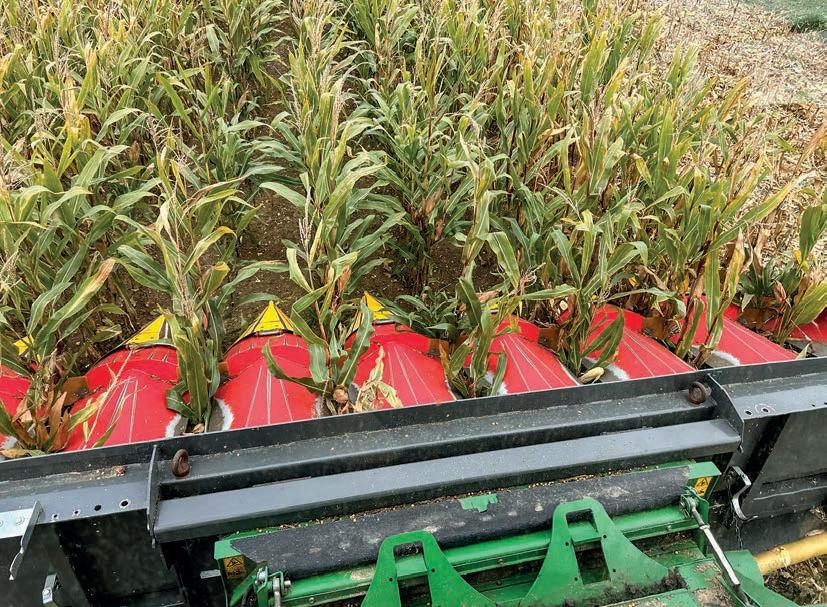
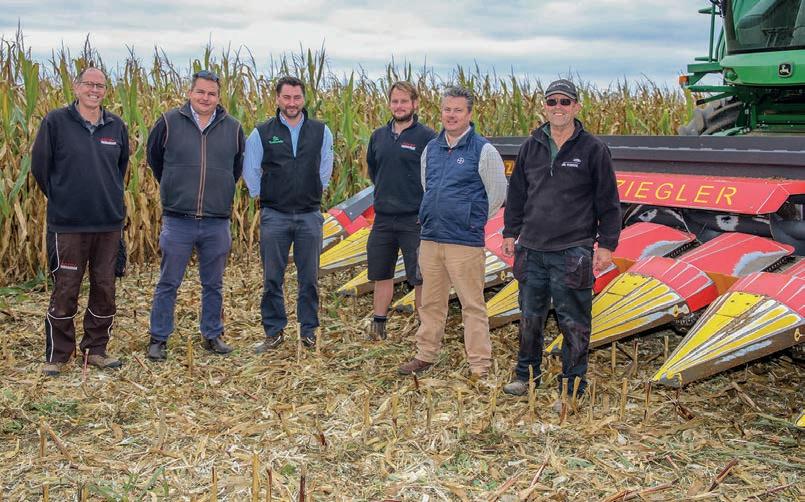
▲
he believes the market has the potential to grow rapidly now. “In our trading area there is a lot of interest, and I believe that this will be boosted by James’ involvement. We are well placed to support those growing the crop. What John Deere doesn’t know about harvesting maize isn’t worth knowing.”
Grain maize is a no-brainer Current high energy prices and potential fuel shortages mean that maize for AD plants is also likely to be in high demand. This provides an alternative sales option for maize in the eld. “If prices are high enough in future years, then we could sell standing crop for forage rather than harvesting it ourselves for the grain, but we would need a good premium due to the disadvantages of removing so much organic matter as well as the increased risk of compaction and rutting.
“We believe that growing maize for the grain has a lot of potential and compared to break crops such as beans it really is a no-brainer.” FG


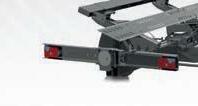



























































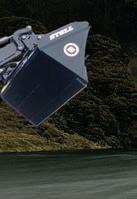












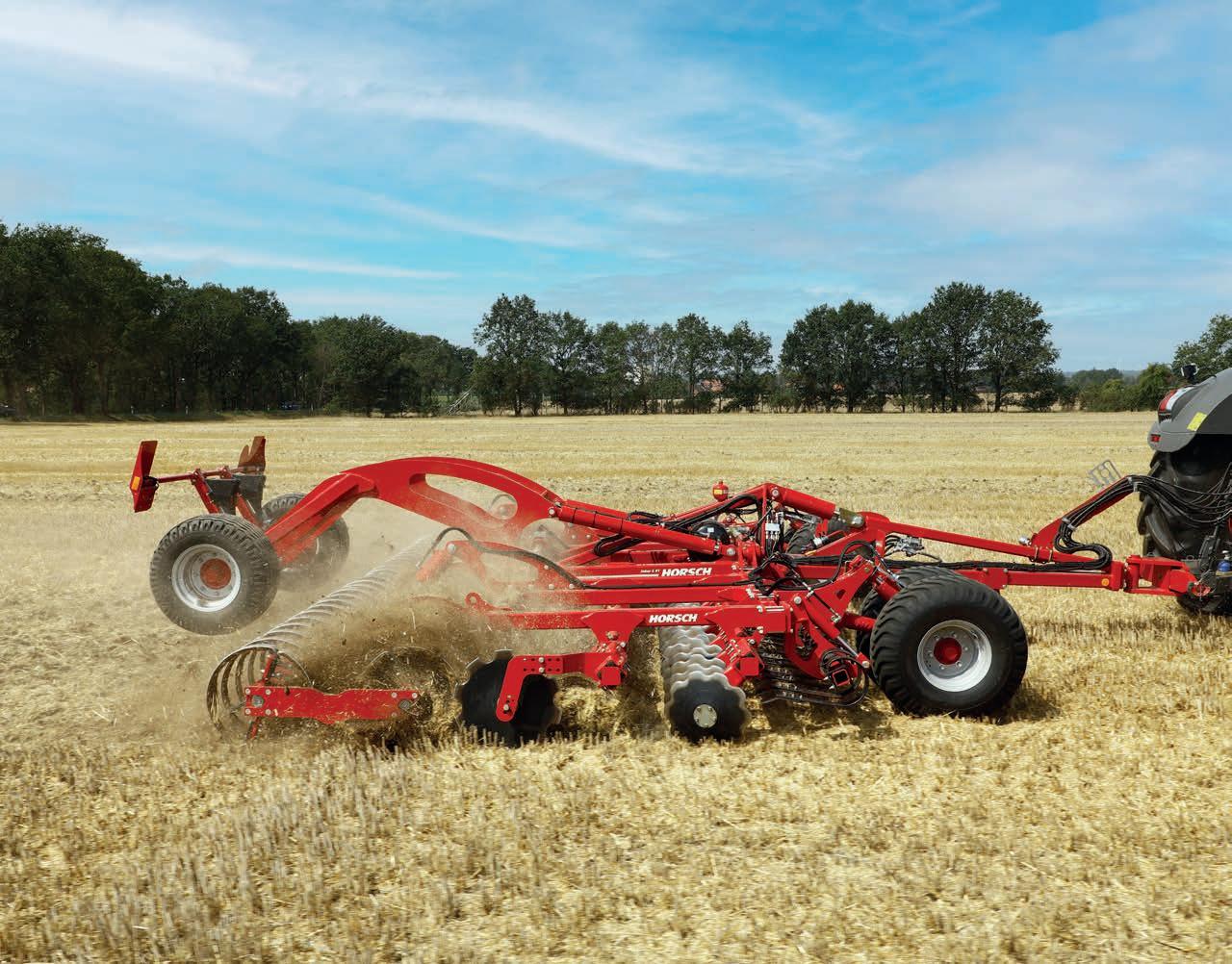


























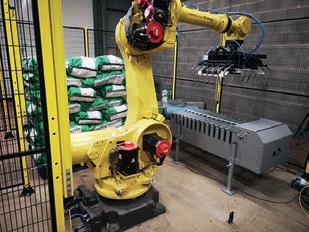



If you have a task which you wish to automate, Bradley Engineering will conduct a FOC automation consultation and discuss with you the requirements and the scope of the project. This will then move into the preliminary design stage where initial drawings are created to facilitate the most precise quotation possible. Once an estimate quotation has been accepted, the customer is then assigned a project manager who will take them through the rest of the process. This starts at secondary design, onto simulate and o ine testing before moving onto mechanical build.




wants further systems to be implemented on the machine.


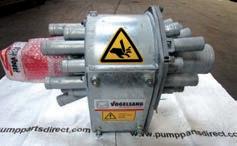
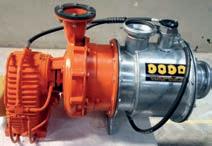

Bradley Engineering works closely with strategic partners to provide equipment which it does not build in-house, such as weighing and sorting equipment in order to provide a complete turnkey solution to the customer, by managing the project completely from start to nish. FG
A 24-hour service hotline and UK-wide o ering ensure that if a customer’s machine is broken, it is put back into commission quickly and e ectively, the company says. Bradley Engineering supports all makes and models of robot in a wide variety of sectors, including agriculture, manufacturing, and recycling.
Bradley Engineering also provides bespoke automation equipment
to suit the needs of the customer. From material handling, carton lling and machine tending, these processes can be adapted to any hand operation carried out. Couple this with automated conveying equipment and control systems and the end result is a more consistent product, carried out faster and with reduced labour costs, the company reckons.
At the mechanical build stage, your machine is built and tested solely in Bradley Engineering’s workshop near Wisbech, Cambridgeshire. At this point you can view it working and if any nal changes to the design are needed, they are made before delivery. Once delivered and installed, Bradley Engineering provides operator training to the level requested and can provide robotic programming training if required.
Part of the available aftersales support package, Bradley Engineering can provide system upgrades and extras if the customer






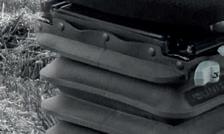










United Seats is introducing its new top-of-the-range Rancher Pro, which will be available in time for the LAMMA show in Birmingham in January 2023.


















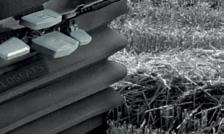
Numerous external mounting holes on the suspension are an important feature for installation.




Over the last 2–3 years, the standard Rancher 12V Air seat has proven successful, with farmers upgrading their seats on older high horsepower tractors, the company says. The Rancher Pro comes with a ve-position seat depth extension, giving up to 50mm extra leg support and a three-position seat tilt, which are particularly useful for taller drivers or when the machine is working on uneven ground.
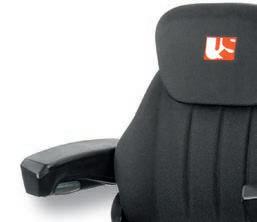
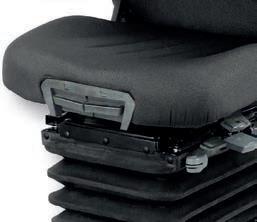
The Rancher Pro has a great potential for both OEM and aftermarket applications, United Seats concludes. FG
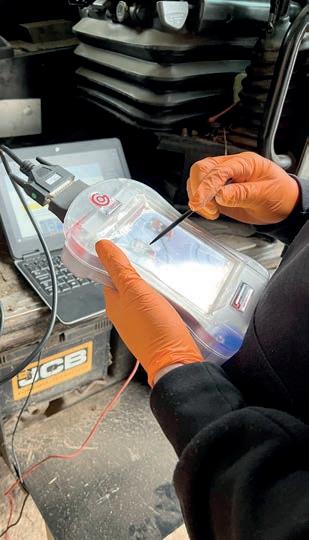
Clover Farm Services has expanded its portfolio of services, recently becoming an agent for Avon Tuning and its AT Agri and Plant Division.
This new development works well with Clover’s existing business and has allowed its service and repair section to o er customers re-mapping.
machine is working on
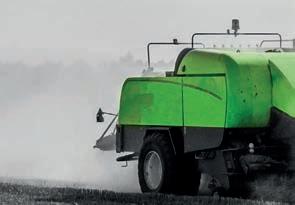

The proven Rancher 12V air suspension already provides an excellent bu er to both vertical and horizontal vibrations and can be ne-tuned through the variable damper, United Seats notes. The seat swivel can be rotated to the left and right and locked out at 10 degrees and 20 degrees, when drivers wish to turn to view implements.
Re-mapping a machine’s ECU allows many issues to be solved, including Ad-Blue faults, and increasing hp and torque. Many customers with long time fault code issues have already used this service to get machines working again correctly, Clover Farm Services says.
The service is o ered from the company’s base, or it can also visit the customer.
for vehicles. Eco-mapping can help to reduce fuel consumption.
notes. The seat swivel can be
The company can o er remaps and solutions to Ad-Blue, EGR and DPF problems on most agricultural and construction equipment. It also o ers re-maps
“With the world everchanging and fuel, energy and other inputs at such a high cost, if we can help people to save money this has to be a good thing,” the company says.
For more information and a competitive quote get in touch with the company directly. FG

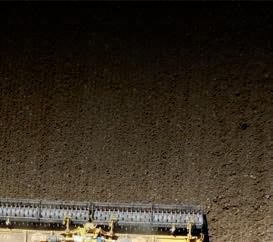



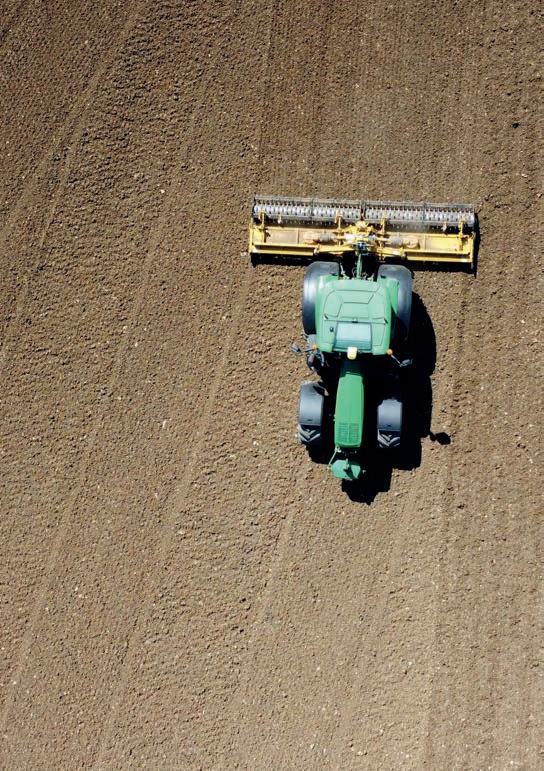
highly successful turbine-only setup, it o ers another option for potential customers already operating a rollerbed harvester in suitable soils and conditions. Vervaet’s unique rotating walking shares, which excel in the toughest of conditions, lift the beet onto the rollerbed which boasts seven full-width 100mm diameter rollers. For maximum cleaning the roots are taken outwards before being gathered back to the centre of the table. Roller speed is variable from the cab, with the seventh roller operated independently.




the market, J Riley reckons.
The highly manoeuvrable Q-616 remains the most-popular sugar beet harvester on the British market, outselling the sum of its competitors, the manufacturer adds. Its high capacity makes it attractive to contractors and farmers alike, and with an 18t tank it’s an ideal match for a 20t trailer.

Sugar beet harvester manufacturer Vervaet has introduced a rollerbed option for the popular Q-616. Following the launch of a rollerbed primary-cleaning option for the six-wheel Beet Eater 625 for last year’s beet campaign, its availability for the fourwheel Q-616 further widens the appeal.
The rst rollerbed-equipped Q-616 has already been sold by UK importer J Riley Beet Harvesters (UK) Ltd to Wroxham Home Farms in Norfolk, where it replaces a harvester from
another manufacturer for this campaign.
The new rollerbed replaces the Q-616’s two front turbines. Not intended as a replacement for the


Unlike other rollerbed-type harvesters on the market, which use an elevator trace to transport the crop between the front wheels, J Riley says the Vervaet design utilises a central cleaning turbine, eliminating a potential problem area and continuing the positive cleaning action. The full range of Vervaet harvesters boast an “industryleading” level of cleaning capacity, and when tted with a rollerbed the Q-616 still incorporates four well-utilised turbines. But where maximum cleaning isn’t required, the turbines can be slowed down and tted with rail gates for gentle beet handling, making a Vervaet the most versatile rollerbed machine on
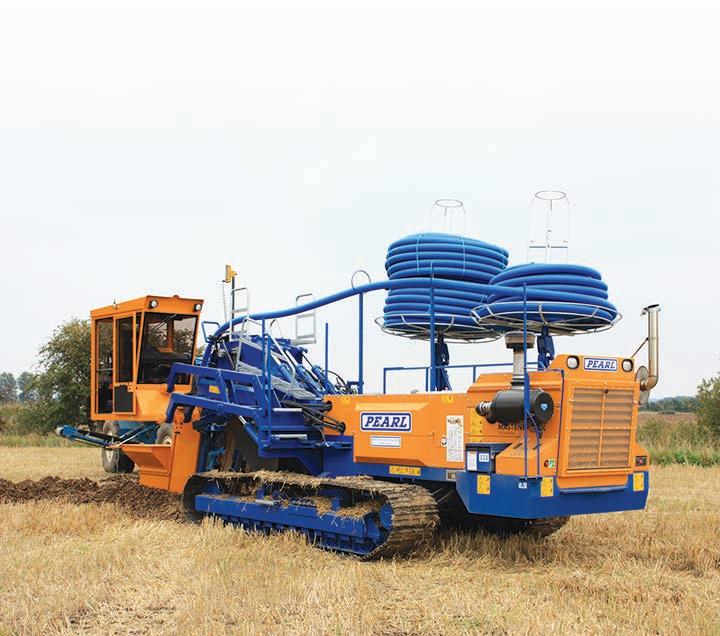
“The addition of the rollerbed option for the Q-616 means that we can now o er a size and type of machine for every scenario and soil type,” explains Matt Carse, sales manager at J Riley Beet Harvesters (UK) Ltd. “I’ve seen many rollerbed machines in the past, but the Vervaet is unique; because we use a turbine rather than a transfer web it’s removed what was typically a rollerbed’s Achilles heel. As a company, we are very proud that Rileys hold by far the bulk of the British self-propelled sugar beet harvester market, and with Vervaet’s recent developments, plus the option of refurbished machines we can o er the right machine to any UK farmer or contractor, giving us the perfect opportunity to grow our market share even further. We will have a Vervaet Q-616 with a rollerbed available for demonstrations later in this season.” FG

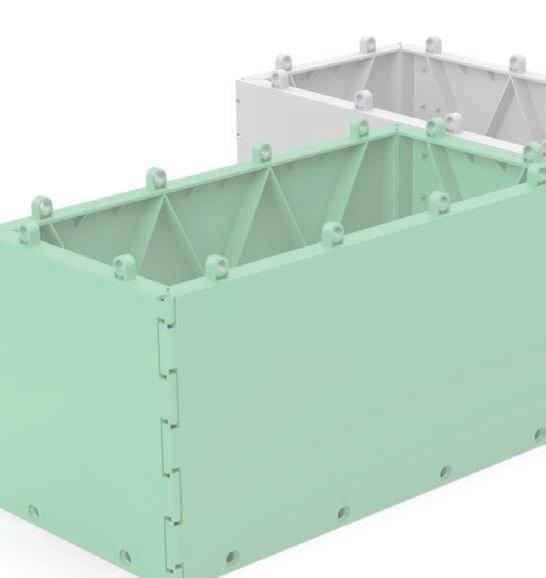
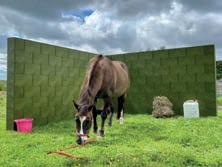
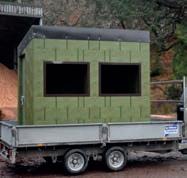



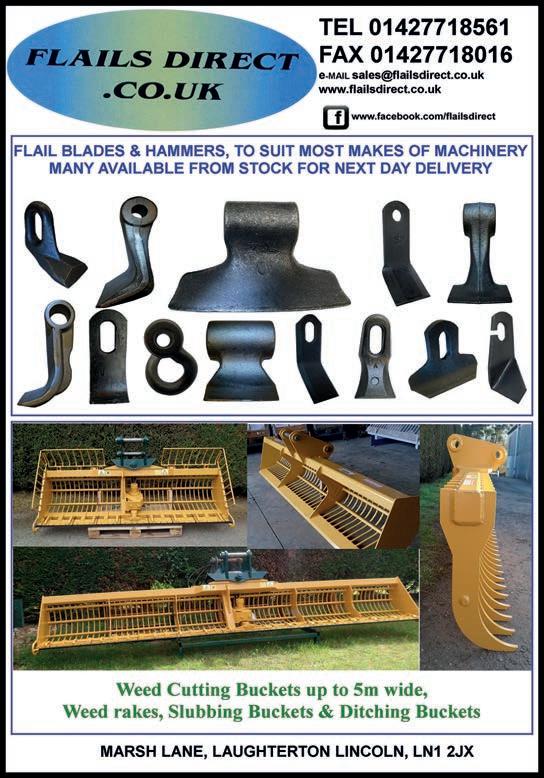


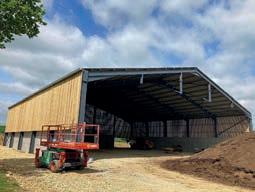


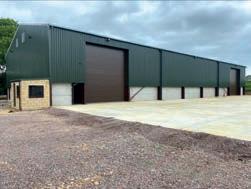



Quickblock has launched a completely new building product to the market. Made from 100% recycled plastic, its blocks o er a quick and easy way to build almost any structure. Delivered in atpack and simply assembled, building is as easy as using children’s building blocks, with an interlocking system. A 4 x 3m structure can be built in less than half an hour, the company says.
Quickblock has a number of solutions for agricultural customers, for temporary or semipermanent structures. Farmers across the UK are already building sheds, shelters, hides and all manner of interesting structures with the blocks.



Ideal for remote, hard-to-reach locations, the product has been tested in some of the toughest and most extreme weather conditions in the UK, including heavy rain and strong winds.




CEO Andrew Vincent (pictured)



comments: “It really is a good solution for the farming sector. With ever-changing seasonal requirements, our blocks can be used over and over again to build di erent structures. The blocks are hollow, meaning that they can be in lled – with aggregate or soil – for additional strength and stability, or simply anchored down if the structure is temporary. We also have an in-house design team to help customers with bespoke projects and advice on the best solutions for things like roo ng and windows.”


If you are interested in a Quickblock solution, contact the team by phone or via www. quickblock.uk FG
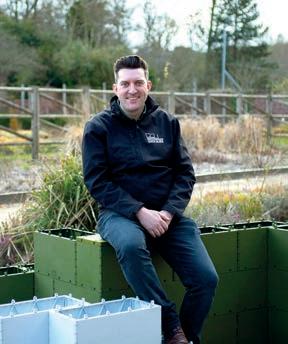

The Prince’s Countryside Fund (PCF) is o ering free business and environmental training. Coordinated locally by Rural Support NI in Northern Ireland, RSABI in Scotland, and Rural Advisors in Wales, farmers can participate in the sixth year of PCF’s Farm Resilience Programme.
Nearly three quarters of those who have taken part in the programme (73%) reported improved business skills; while 58% saw improvements in pro tability, with an average pro t increase of over £9,000.
This year, groups will be based in Dungiven and Seskinore in Northern
Ireland; Stranraer, Ullapool and Caithness in Scotland; and Bala, Brecon, and Tregaron in Wales.
In England, farmers can participate in Farm for the Future, which is taking place in 13 areas and being delivered by trusted local partners, as well as a virtual group for families based elsewhere in England. Groups will be based in Cheshire, Cornwall, Cumbria, Dartmoor, the Durham Dales, Exmoor, Herefordshire, the High Weald, Lancashire, Norfolk, Northumberland, the Peak District, and the Yorkshire Dales.

pro table and sustainable. There
The programme involves a series of workshops delivered by expert agri consultants and designed to help businesses become more pro table and sustainable. There is also one-to-one support and access to the PCF’s Farm Resilience Network, which provides free ongoing social and training opportunities. All family members can attend, and a meal is provided at each meeting.
access to the PCF’s Farm Resilience ongoing social and training can attend, and a meal is provided or to sign up, visit: www.
For more information or to sign up, visit: www. princescountrysidefund.org.uk/ farmresilience FG

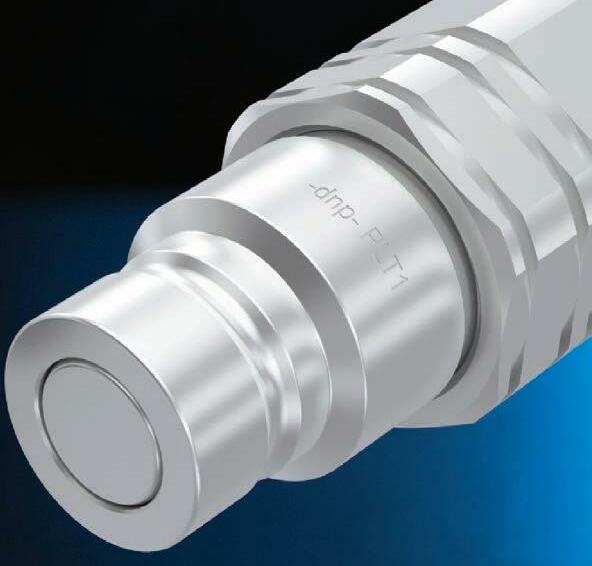










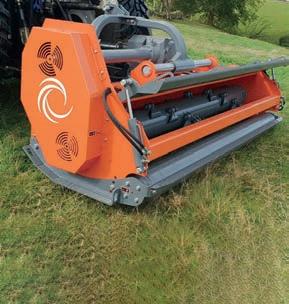




Three new models with 4-cylinder engines extend the options available from Deutz-Fahr, in the manufacturer’s popular 6-series. David Williams was at the German launch.
The exclusive European press launch at the Deutz-Fahr production plant near Stuttgart took place at the end of October, ahead of the new model’s public debut at the Eima Show in Italy. Before the new tractors were unveiled, there was a presentation from SDF board members including the company’s production and sales performance.

SDF’s total sales for this year are expected to be around €1.75Bn, which contrasts with last year’s total of €1.48Bn. Just over 41,900 tractors
are expected to be manufactured this year, against last year’s total of 37,366. Deutz also expects to manufacture almost 2,380 combines this year, and produce 30,300 engines. This is from a total workforce of 4,676 employees, and despite the electronic component shortages which have a ected most manufacturers.
There was also the opportunity to watch a demonstration of the Vitibot autonomous vineyard robot in action
– following SDF’s recent acquisition of a majority shareholding in the business earlier this autumn. Vitibot is a French start-up company based in Reims and is claimed to be a leader in the emerging market of vineyard care robotics with its Bakus electric straddle tractor.
The new Deutz 6.4-series 4-cylinder models feature a new powertrain including power from Farmotion power units. “The main features are the new transmission, new 4-cyl engine and a new front axle, and the cab features a new control centre with a completely new multifunction joystick which is di erent to current 6-cyl 6-series models,” explained SDF UK country manager Graham Barnwell at the event. “The new 6.4-series lls a gap in our line-up with power outputs from 130–150hp. It’s a lighter weight option, and slightly lower and shorter than the 6-cyl models, so it’s something we haven’t been able to o er before, and its availability will be well received by UK and Ireland dealers
as a popular range for our markets when full production begins in May.”
Graham said that although the new 6.4-series tractors will be popular for loader work, most users purchasing a loader tractor will still opt for the more compact 5-series which is available with up to 126hp. The current compact 6C-series is available with 115–143hp.
The three new models are the 6130.4, the 6140.4 and the 6150.4 with up to 136, 147 and 156hp. Two transmission options include the new RVshift which was introduced for the 6C-series earlier this year, based on the Deutz TTV CVT in nitely variable transmission with virtual steps representing the powershift gear ratios. The fully functioning TTV stepless transmission is the higher speci cation option.
The tractors’ Farmotion 45 engines are designed for reliable and e cient operation. Electronically controlled high pressure Common Rail fuel injection and a variable geometry turbocharger provide a at torque curve and optimise combustion to reduce fuel consumption, and there is a lag-free response to changes in load. An electronic-controlled visco-static
…from previous page cooling fan always provides the right amount of cooling and reduces the power requirement when the engine is under part-load.
The RVshift transmission has 20 forward and 16 reverse powershift steps, and the user can shift between the gears smoothy and without any loss in power delivery. Standard speci cation includes working speeds from 1.5–50.0kph at eco engine revs, but a super creeper option provides seamless speed control from just 20 metres/ hour to 5kph, with operation like a CVT. The powershift ratios can also be set to shift automatically with the APS function activated, which allows the engine and transmission management system to always select the most e cient ratio to suit the groundspeed and load.
The TTV in nitely variable transmission option allows the operator to set a target speed using the MaxCom joystick, and then press the accelerator pedal to achieve the required speed. The target speed can be adjusted at any time during operation with no loss of drive to the wheels by simply moving the joystick.

Both transmissions come with SenseClutch PowerShuttle electrohydraulic reverse shuttle with ve user-selectable response settings to suit the user preference and application, helping ensure safe operation even on steep gradients and when under load. Coupled with these features are the Stop&Go (RVshift models) and PowerZero (TTV variants) which improve operation and ease of use when working with a front loader. All models can achieve the maximum 50kph travel speed with reduced
engine revs in economy working mode.
The new front axle features electro-hydraulic 4wd engagement and a 100% lockable di erential, both of which can be controlled automatically through the ASM system. Axle suspension, EasySteer rapid steering, an electronic parking brake and hydraulic engine braking are also included.

The MaxiVision cab comes in three speci cation variants depending on transmission type and the hydraulic equipment – Basic, MaxiVision Plus and MaxiVision Pro. All feature the same six-pillar layout with a large glass area for excellent all-around vision, and a high standard of nish.
Basic is available only with RVshift transmission and comes with three or four mechanical spool valves.
MaxiVision Plus contains a new mixed con guration of two mechanical and two electronic rear spools.
The top MaxiVision Pro speci cation, available only with the TTV transmission, provides a full set of electronic control valves and an optional 12in iMonitor on the MaxCom armrest enables additional functions including Isobus and GPS guidance.
All cab variants are available with new XLarge 65% larger rearview mirrors, air sprung suspension, an opening front window, multiple smartphone and tablet holders, a removable cooling box and a DAB+ radio plus a 4.1 premium sound system.
The rear linkage has electronic control and lifts 5,870kg, although an upgrade option will lift 9,170kg. Additional features include automatic PTO switching and an

integrated damping system which reduces implement oscillation during transport. An optional front linkage lifts 3,000kg and a front PTO can also be speci ed. The rear PTO has electronic engagement with load sensing, and speeds include 540/540eco and 1,000rpm. A grounddrive speed with an independent output shaft is an option.
The Vitibot robot demonstration was at the factory site rather than in a vineyard, but even so it was clear to see how the autonomous vehicle works. Pre-production versions started work in 2019, and now more than 50 Bakus robots are operating in vineyards worldwide, and with a growing number of dealers, the company intends to accelerate its commercial development.
The primary role for the Bakus is inter-vine weeding, and the machine was demonstrated with an electronic hoe blade which swings in to avoid the vine plants each time a physical sensor is activated. Trimmer and spraying attachments
are in development and will be available soon. The Bakus travels along the rows straddling the vines. Two versions are available – one for short vines and the other for taller plants. Four-wheel steering allows use in vineyards with limited space for turning, and up to 10 hours of continuous operation is available on one battery charge. Recharging takes just two hours. The maximum working speed is 6kph.
Vitibot founder and general manager, Cedric Bache explained that GPS coordinates are used to map the operating area. Initial set-up requires the user to identify the ends of each vine row to create an A-B line, then the Bakus uses the information to nd and then start and nish each row. Tool modules can be swapped in just a few minutes.
Asked whether the Bakus will be o ered through SDF UK in the near future, Graham Barnwell said that primary markets identi ed currently include Italy and France, and that it will be promoted to a wider market in future. FG
















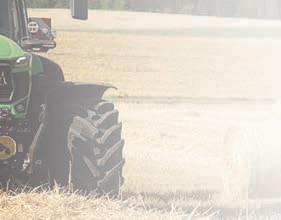















A eet of four Can-Am ATVs is key to the e cient operation of one of Su olk’s longest-established soil sampling and lime supply companies. David Williams reports.





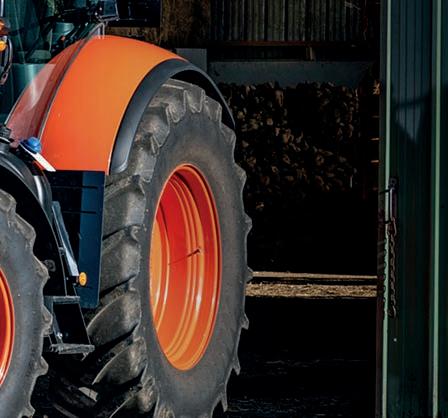



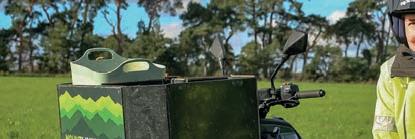
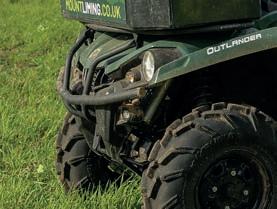
Now trading as Keith Mount Liming Ltd, the Mount family has been supplying lime to growers in the east of England for more than 150 years, and managing director Andrew Mount is the sixth generation of his family to o er the sampling and spreading service.
Growing awareness of the bene ts of ensuring soil nutrient indices are correct has resulted in increased demand for the company’s services in recent years, and as well as supplying and spreading lime, P- and K-based fertilisers are also o ered. “Most products we supply are the result of requirements identi ed through our soil testing service,” explained Andrew. “As well as sourcing and supplying the products we can also arrange applications either using our own machines or through a wide network
of contractors who we are happy to recommend. Approximately 95% of our business is repeat, which is a result of the straightforward and e cient service we o er.”
The company’s team of soil samplers looks after 600–700 customers across 10 counties and relies on a eet of four Can-Am Outlander 570 ATVs to travel across elds of stubble and growing crops in all types of weather to sample approximately 40,000ha each year. Most sampling is between July and late September after elds have been harvested, but the work continues throughout the year.
“ATVs allow our team to be very productive, as we can sample a large area in a day,” continued Andrew. “We looked at using UTVs instead, but they are too big and clumsy,

and moving them between sites on trailers towed by our pick-ups would be more di cult.


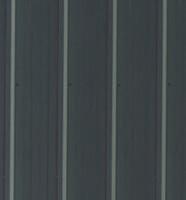




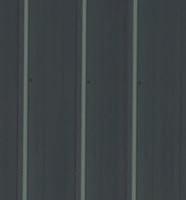

“Our priorities when selecting an ATV are reliability, ease of use and operator comfort, and getting on and o has to be easy as samples are taken by each operator 200–300 times each day.

“We changed from another brand to Can-Am in 2014 when we bought the rst two machines. They proved so successful that we ordered a third machine a year later and have now owned nine in total including our current eet of four.


“We tried a less powerful Outlander 450, but all the users preferred the smoother twin-cylinder 570 model. The performance is good, and although we don’t rush around at high speed, the power and torque from the 570cc engine is a real help in wet, muddy conditions.”


Part-time soil sampler Lewis Hunter said the CVT transmission performs well. As well as working for Keith Mount Liming, he also uses the ATV on his family’s farm. “The belt-drive transmission is very responsive, and if there is a patch of particularly soft ground then a light press on
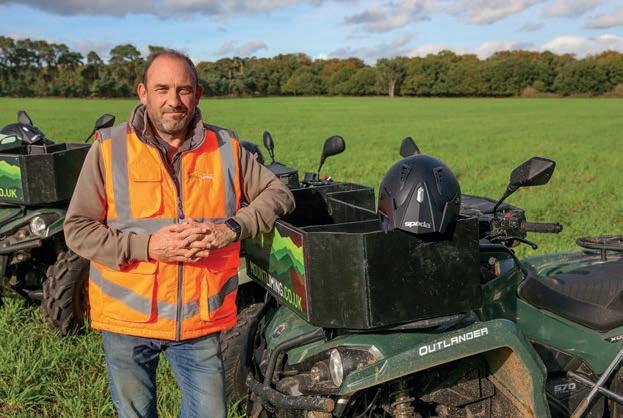

the throttle means extra power is immediately available at the wheels and the ATV travels through it easily. We very rarely need 4wd in the eld, unless we are on soft sand or black silt, but we use it every time we reverse up the ramps onto the transport trailers.”
Although the team uses the more powerful 570cc Outlanders rather than the smaller 450cc version, Andrew said the fuel consumption is very reasonable.
Each sampling job is preplanned, and samples are taken according to eld maps issued to the operators and viewed on smartphones or IPads. Fields are divided into grids, and one sample is taken every 100m. To take the sample the operator gets o the ATV, pushes a soil auger into the ground and soil collected is carried in containers on the front and rear racks. The Outlander racks will carry loads up to 54kg on the front, and 109kg on the rear. “The racks of our previous ATVs weren’t strong enough which is one of the reasons we looked at other brands,” explained Andrew. “We have had no problems with the Can-Am racks which are strong and durable, and the maximum recommended load
capacity is considerably more than we carry even when the sample containers are full. We run out of space long before the racks become overloaded.”

As well as manual sampling, a trailed soil sampling unit is also used, with a land-wheel mechanical drive. “It allows us to cover twice the area compared to sampling by hand, and the Outlander pulls it easily,” explained its main operator, Fliss
Cleverley. “I select low range when pulling it at typical working speeds of 10–12kph as it helps maintain a constant speed and it is smoother. I think it’s also better for the drive belt as there is less risk of it slipping.”
Fliss also has electric heated handlebar grips and a heated throttle lever, and she said that these signi cantly improve rider comfort in cold and wet weather.
The ATVs all came with electric power steering as standard, with three adjustable rates of assistance. Jack Johnson works full time for the company, and he said that power steering is a signi cant advantage during the peak sampling season. “It reduces fatigue, and makes a real di erence to rider comfort, especially when riding on uneven ground. We also notice the di erence it makes when turning tightly on paved services where there is increased resistance from the wheels.”
Each ATV works between 400–500 hours per year, and they are looked after by the local main dealer, RW Crawford Ltd. “We receive great service from the Crawfords team and, because they are an agricultural dealer, they are always happy to receive the machines in ex- eld condition, whereas other dealers are more used to clean road vehicles,” said Andrew.
The team has few complaints regarding the Outlander 570s, but a recent change to the control layout when models were updated has caused confusion. “For some reason the horn button and starter button
positions were exchanged between the previous and current models, so each time I tried to start the machine I operated the horn instead,” said Fliss. “The 2/4wd selector positions were swapped too, which meant that when I thought 2wd was selected I was actually in 4wd. It wasn’t really a problem, but it took a while to get used to it especially with machines of mixed ages and control layouts in the eet.”
The ATVs are usually updated after four years' work, and resale values are high. “Because they are seen by so many of our farmer customers,
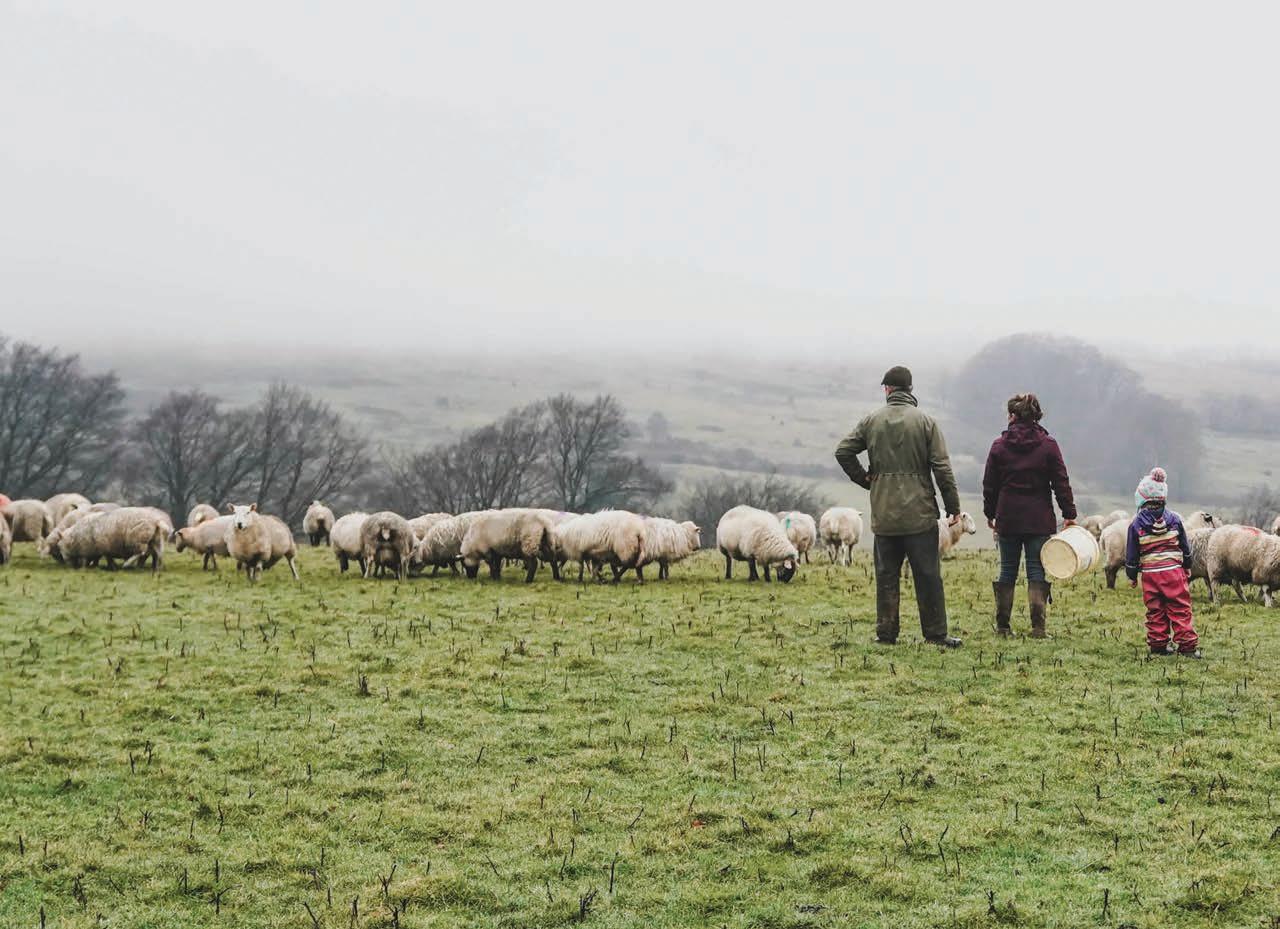






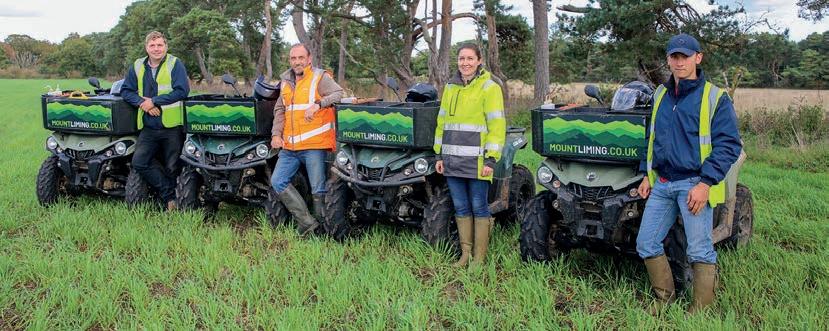
there is always strong demand when machines are due for replacement. We look after them well, and they remain in good condition, so they always fetch a good price,” continued Andrew.

Green body panels are chosen rather than brighter colours. “It’s important that they look agricultural so that those seeing us riding on elds realise that we are working and not riding for pleasure,” he added. “We also have two battery-powered two-wheel motorcycles which we use when crops are higher to ride along tramlines, and we receive far more complaints riding those as people believe we are joy riding.”
Andrew said that when the current eet of ATVs is due for updating, it’s likely the replacements will be of the same make and model.
“They represent great value for money and since changing to Can-Am there has been no need to consider other brands. The comfort is good, the rack capacity is good, and they are very reliable. There was concern regarding the belt drives when we bought the rst machines, but wear hasn’t been an issue and the belts are usually replaced after three to four years, even though the sampling work means the machines are accelerating and then decelerating constantly. We really like them.” FG

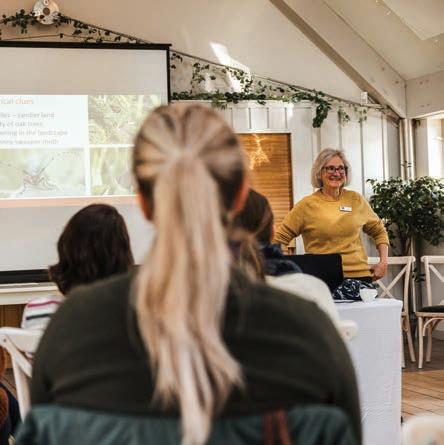


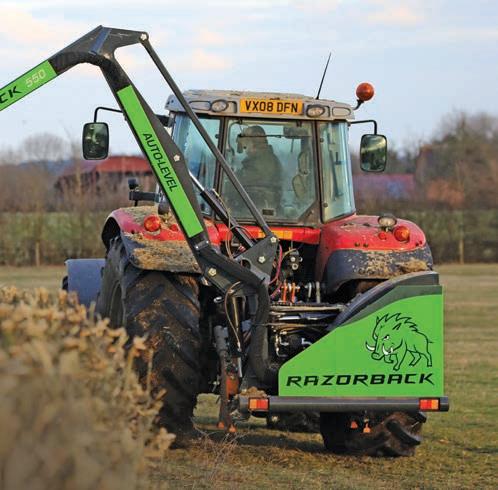








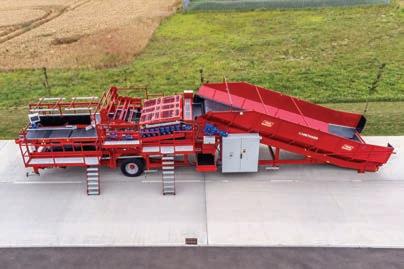
New Holland’s Braud grape harvesters have gained an excellent reputation with professional users in mainland Europe since Braud started making them in 1975. There are three series with a range of speci cations and work rates, powered by FPT engines from 141–175hp. The 9090X is the top speci cation, ruggedly built and with the highest potential output, and this model was chosen by the Essex-based vineyard with the objective of optimising the quality of grapes delivered to its winery which already produces multi award-winning wines.
The self-propelled New Holland Braud 9090X harvests the grapes using 24 horizontal exible bars –12 on each side, which shake the vines vigorously at a frequency of 470–480 movements per minute.


New Holland’s Shaking Dynamic Control allows the shaking action to be nely tuned to suit the crop and conditions. Falling grapes are caught by the New Holland’s exclusive Noria basket system – a chain of close-linked polyurethane buckets below the shaker bars on each side, travelling at a rate matching the ground speed. The exible buckets seal around the plant stems close to ground along the full 2.5m length of the shaker bars. Grapes and juice fall into the buckets and are carried to the de-stemming and cleaning system.
The harvesting module or header which houses the shaker bars and
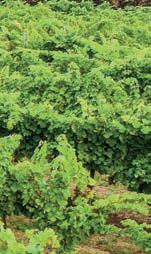
buckets moves independently of the main chassis, and follows the vine angle rather than the ground, even on side-slopes up to 30%.
Grape stems are removed by a mesh conveyor and spider wheels without damaging the grapes. The stems are discharged at the rear, then the grapes travel through air ow from four adjustable fans which gently clean the crop and remove remaining loose stems and leaves.
Clean grapes are delivered into stainless steel hoppers on each side with a combined 4,000-litre capacity, and leaves and other light materials are blown through two exhaust chutes and discharged at the rear.
The hoppers tip to the rear for unloading and are controlled from inside the cab or from outside by a Bluetooth-linked remote control.
The main functions are controlled by an armrest-mounted joystick and the New Holland IntelliView 4 touchscreen terminal. Settings can be saved as pro les for di erent plantations and varieties, and conveniently selected again in future years. A network of cameras allows the operator to monitor the crop’s progress through the machine as well as the quality of grapes in the hoppers.
The 9090X has an FPT engine developing 175hp, and hydrostatic transmission provides in nitely variable speed control. Drive is
automatically distributed to the wheels with most traction to reduce wheel slip, and to compensate for sideslip on cross slopes. For transport only the front wheels drive, and maximum speed is 30kph. All four wheels steer allowing tight headland turns.
The grape harvester was purchased by New Hall Wine Estate, which is owned by the Greenwood Partnership and located in Purleigh, in the Crouch Valley. Wine making started there in 1969, and there are currently 31 plantations and 50ha of land under vines, and further expansion is planned. There are 18 grape varieties, including Bacchus grown on some of the rst Bacchus vines established in the UK more than 40 years ago.
The fruit is pressed, crushed, fermented and bottled on site, and the range of wines includes winners of signi cant awards.
“Our primary objective is to grow the very best fruit and harvest it in optimum condition for our winemakers to produce excellent wines,” explained vineyard manager Andy Hare. “The self-propelled harvester has given us extra exibility. We can ll the grape bins quickly and deliver them to the winery for processing in the shortest possible time – minimising loss of quality through oxidation. Knowing we have the capacity to harvest the
crop at the optimum time also means we can leave grapes on the vines for longer while the sugars develop –making the fruit more versatile as our winemakers can do more with it.”
The New Holland Braud grape harvester was the preferred brand for its reputation in Europe, as well as its gentle crop handling and build quality. “We already had an excellent relationship with the Ernest Doe Ulting depot team, and operate New Holland tractors,” continued Andy. “A new grape harvester is a signi cant investment, so we had to be sure that back-up will be available if problems occur.

“We were very pleased by the reaction of the dealer as well as the team at New Holland UK, so we ordered New Holland’s 9090X agship model which arrived in early September.”

New Holland’s grape harvester specialist, Philippe Boisseau travelled to the UK specially to provide operator training. “I experimented with it before he arrived but struggled to achieve the results I wanted. There is a lot of technique
The harvesting unit or header moves independently of the main chassis to accurately follow the vine rows. The 24 horizontal bars shake the vines. New Holland’s Shaking
Dynamic Control allows the intensity to be adjusted for the variety and conditions. The exclusive Noria collection system consists of a chain of polyurethane buckets which e ectively clamp the vine stems and create a seal so that grapes and juice end up in the buckets rather than on the ground. The bucket movement matches the ground speed. As they reach the rear of the machine they travel upwards, carrying the crop to the destemming conveyor, cleaning system and stainless-steel hoppers.








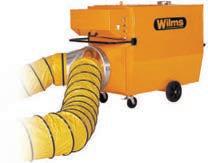

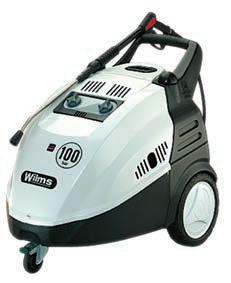

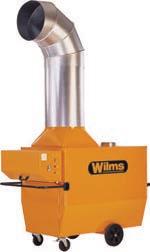

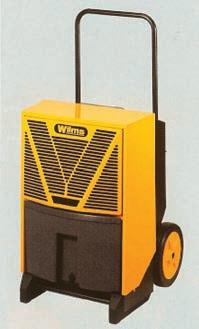






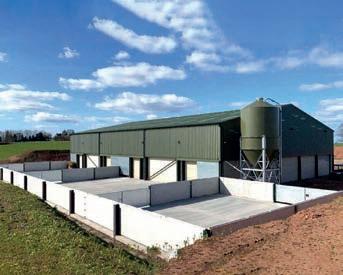
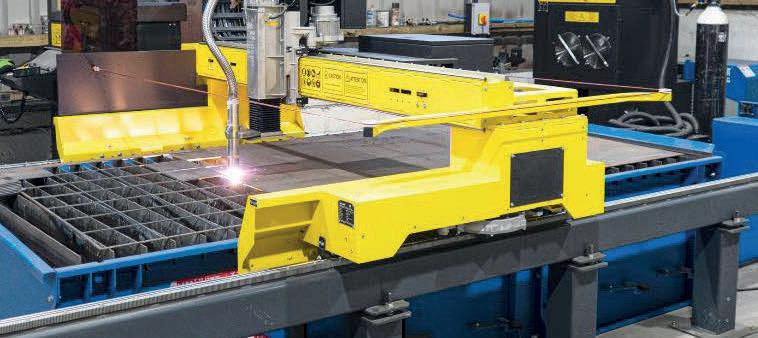




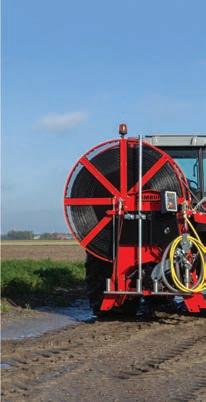

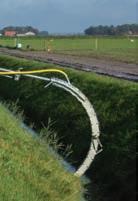








…from previous page
involved, and as soon as he demonstrated the correct procedure for setting up the machine, operating it became much easier. Very small changes to the settings make a big di erence,” emphasised Andy.

“We have been amazed by the quality of the harvested fruit, and particularly the clean sample and lack of damage. Experienced pickers
each achieve 400–450kg per day, but the New Holland picks more than 7,000kg in 3.5 hours, and achieves this operating at a modest 2.0–2.5kph although the recommended speed is 3.0–4.5kph, and it will work at up to 7.0kph in ideal conditions. The impressive work rate allowed us to pick the amount of fruit required by the winery team, then wash the machine down and do something else until more grapes were needed. In hot weather we harvested early in the mornings and in the late afternoons – avoiding the mid-day period when temperatures were higher and the quality of harvested fruit declines most quickly.”
Andy said that although some members of the vineyard team were concerned when mechanical harvesting was rst suggested, it didn’t take long for everyone to become convinced of the bene ts once the machine started work. “Most importantly, our winemakers are very impressed by the sample we deliver to the winery,” he stressed. “The harvester simply improves the quality of what we already have here, and it allows us to pick at the point which is best
for the fruit – not just when we have labour available. We made the investment to maximise our grape and wine quality, but an additional bene t is that we can operate with a smaller team of just 10–12 manual pickers, so management has been easier too.”
“Demand for small tractors and specialised machines for vineyard use has increased considerably in recent years,” explained Ernest Doe area sales manager Derek Peck. “We were pleased to supply New
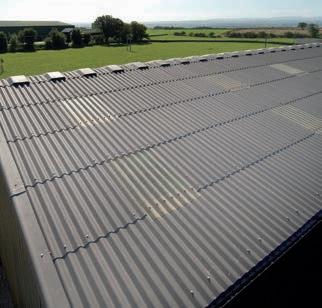


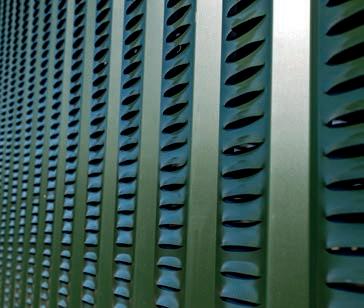
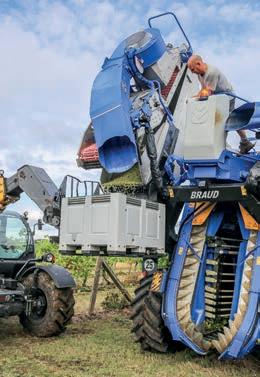
Hall Wine Estate with the rst New Holland Braud grape harvester sold new in the UK and believe it will provide considerable bene ts for this long-established business.
“We are working closely with New Holland to ensure that we can provide back-up for the grape harvester when it is needed and have already invested in product training for several of our engineers so that they understand its design and operation. For our engineers, it’s an opportunity to work on something a bit di erent – and they have been very keen to be involved.” FG
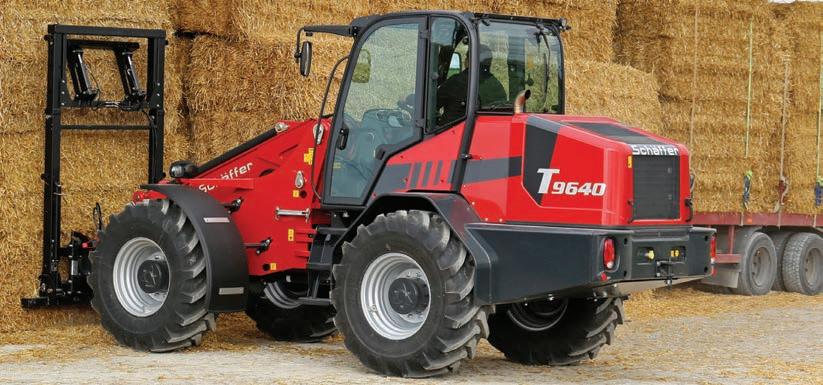

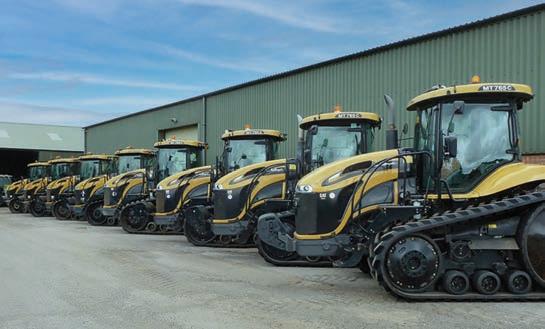



The Weaving Vineyard Mini GD Drill is best described as the standard full-size Mounted GD Drill cut in half, with a Magnum seed hopper and metering system mounted centrally above. The new drill retains the full-size drill’s double disc coulter seeding system so it isn’t light, but the compact layout keeps the weight in close to the rear of the tractor making it easier to lift
and allowing use with smaller models. There are two versions – 1.5m and 2.0m working widths, both with 166mm row spacing and adjustable coulter pressure up to 200kg to ensure e ective penetration even into dry, hard ground.






As its name suggests, the new drill
provides a solution for vineyards and fruit orchards, but it is just as suitable for municipal areas as well as sports grounds and amenity sites, and anywhere else that working space is limited. It is also an ideal solution for farmers and contractors establishing grass and cover crops in areas under Environmental Stewardship Schemes, due to the minimal ground disturbance.
Farmers Guide saw the new drill establishing a complex 27-variety cover crop mix in the rows between the vines in a newly planted vineyard. Contractor Sam Barnes trades as SJ Barnes Ltd, and he specialises in vineyard establishment and maintenance for owners across the UK. “Much of our maintenance work is establishing and repairing grass and cover crop strips between the vine rows, and we built our own combination power harrow drill with a mounted air seeder several years ago especially for the task. It worked well, but increased use of complex seed mixes in recent years highlighted limitations of its air seed delivery system,” he explained. “We considered replacing the metering system with a new Weaving Magnum seeding unit, but sales director Simon Weaving suggested that he could build us a bespoke drill utilising the successful GD Drill coulter design instead. We agreed that this would be a more versatile solution, so we placed an order.”
The bespoke drill was used in autumn last year and it proved immediately successful. Demand
for similar drills for a wide range of applications is increasing, so Weaving put the drill into production and it is now available to order.
The coulter design and working action are identical to the Mounted GD Drill. Each set of coulters has a large diameter angled outer leading disc which cuts an opening, then a slightly smaller inner disc lifts a ap of soil and holds it while the seeds are dropped below. As the machine moves forward the ap is released onto the seed, and a following press wheel closes the ap and seals the slot – retaining moisture and ensuring e ective seed to soil contact. The versatile design allows direct drilling into existing grass and cover crops, or it will perform just as well working on pre-cultivated ground. Each set of discs is mounted around a central vertical pin, allowing the coulters to pivot to avoid obstructions and follow the direction of travel.
“Since investing in the new drill, there have been many situations where we have drilled direct into existing vegetation, avoiding the need for pre-cultivation. This is an advantage
for patching in grass seed to repair damaged areas. Even in very short and thin grass, it’s been almost impossible to see where the drill has been until the new grass emerged," Sam explained. "We still have the power harrow drill too as there are situations where its soil levelling capability is an advantage. Vineyards are naturally a controlled tra c environment in which wheelings remain in the same place year after year. In time ruts develop, and the power harrow redistributes the soil to create a level surface, then we plant the grass or cover crops into the loose soil using the new Weaving drill.”
Sam said that for inter-row seeding the Weaving drill easily achieves 8–10ha per day. “Work rates are much higher than the power harrow drill, and our fuel consumption is signi cantly lower.

The Weaving is well made and heavy which ensures e ective penetration, but it’s still very easy to pull.”
Additional advantages of the Weaving drill over the power harrowbased seeder include lower wear rates.

“Many vineyards are on inty soils and the Weaving drill’s disc coulters su er less wear and can pivot to avoid obstructions which reduces the risk of breakages,” added Sam.
Simple and reliable
Will
drill’s main operator, and
likes the simple, reliable design and excellent build quality. “If anything, it’s over made and we like that as it means it will last well and put up with intensive use. It’s easy to set up and look after, and the rear steps provide convenient hopper access.
“We’ve used it in a variety of conditions including hard and soft soils, and we’ve never had a coulter blockage. The coulters themselves are no trouble and because they are all independently mounted their contour following capability and depth control is superb. Additional weights can be added, but we haven’t needed them.”
“To give crops the best start and achieve optimal establishment; seeds have to be at the ideal depth, and need e ective seed to soil contact,” stressed Sam.
“Our new Weaving drill achieves this in a wide variety of working conditions. We have gained signi cant time and cost savings, but these aren’t only due to the higher working speed. Previously relying on the power harrow drill meant carrying out additional operations including spraying o existing vegetation, then cultivating, drilling and rolling, whereas the Weaving drill usually achieves successful plant establishment in a single pass.” FG
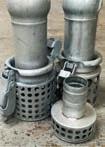














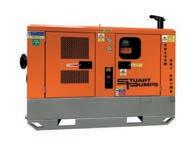












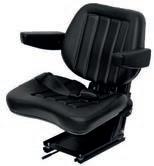

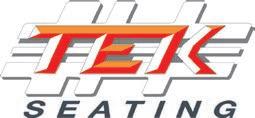

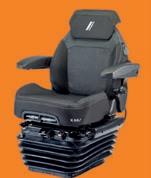



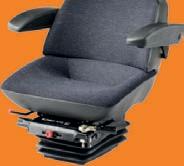




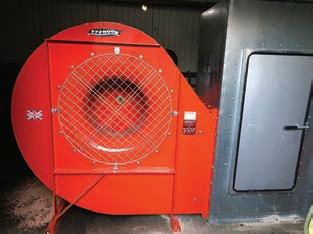

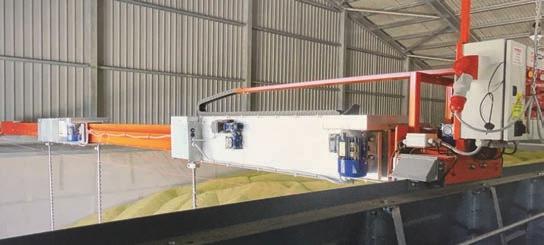













Up to 800 new and existing customers enjoyed an opportunity to meet the Ripon Farm Services team and nd out about the products and services on o er at the rst open day held at the new Malton depot.





The first open day at the new Malton depot of Ripon Farm Services Ltd took place in late October. David Williams reports.
The new depot was needed following the acquisition of neighbouring John Deere dealer RBM Agricultural Ltd in March 2019. Business growth as well as the need to accommodate much larger machinery meant that an existing premises in Malton had been outgrown, so a new site was purchased on the Eden Business Park for the purpose-built depot.
Including Malton, Ripon Farm Services has 11 depots from which it looks after customers across all of Yorkshire and much of Lincolnshire. The most northerly depot is in Stockton-on-Tees, the furthest west is Keighley and Louth in Lincolnshire serves the southern trading area.
Construction work on the Malton depot started 18 months ago, and the Ripon Farm Services team moved
in this August.
“From the Malton depot we look after a very diverse range of customers, from large farming estates to smaller family dairy and livestock farms,” explained regional manager Tony Ralph.
“We have a huge opportunity to grow our sales in the area, and where we were quite limited by our ability to accommodate enough sales and service sta as well as the biggest machinery at the previous Malton site – there is plenty of room at the new depot now, and for further expansion in future.
“It’s a state-of-the-art premises with a large workshop, and we have started with six technicians and two apprentices and aim to increase the workshop team to eight within the next year. When our company founder, Geo Brown started
trading – customer service was his absolute priority. He remains actively involved as our managing director, and supporting customers is still the backbone of everything we do. With the new premises, we can provide an even better customer experience than before.”
The open day was the rst opportunity for new and existing customers to inspect the new depot and view the latest John Deere products. “We expected 300–400 to attend, but there were almost 800,” continued Tony. “There were many we hadn’t seen for a while, so it was great to spend time with them and to introduce the Malton team.

“We had the John Deere X9 combine with a 45ft header displayed – which has been ordered by a large estate nearby, and we had the latest John Deere 6250R tractor which appeals to larger farms and contractors, as well as a 5M-series tractor with a loader which is the most popular model supplied to livestock and smaller mixed farms.”
Kramer handlers were on show, as well as products from Kuhn, Bailey Trailers, Spearhead and Ifor Williams.
“Kramer handlers have become a big part of our business as customers like being able to buy the full package of tractors, handlers and combines from one reliable dealer,” continued Tony. “The range of Kuhn products included a power-harrow drill combination and one of the latest spreaders and a wide range of Ifor Williams trailers was on show too.
“The open day attendance far exceeded our expectations, and our sales, service and parts teams were busy meeting and looking after customers from mid-morning until late in the evening. We very much appreciate the fantastic support from everyone who attended, as well as from our suppliers who helped make the day such a success.” FG










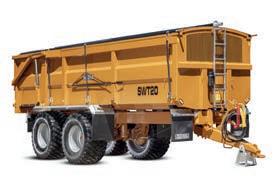
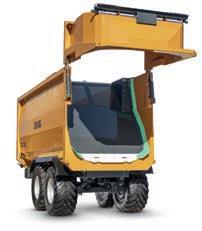

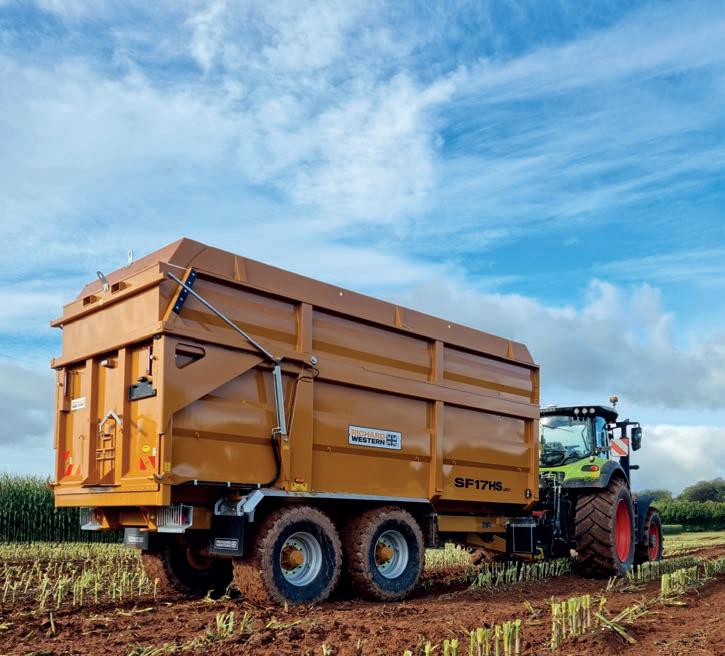
The Discovery Sport joined the Land Rover line-up in 2014 when it replaced the Freelander. It remains extremely popular and that is probably because although it is smaller, easier to drive around town and park, and boasts more stylish lines than the full-size Discovery or the latest Defender, it still has the character and feel of a proper Land Rover. David Williams tried the latest version.
The model provided for the Farmers Guide weeklong test was the Discovery Sport R-Dynamic SE with a D200 power unit.

The model line-up features the Discovery Sport as the base version. This comes with a 165hp diesel engine and 2wd, or with the same engine and permanent 4wd in mild hybrid form. The mild hybrid MHEV system stores energy during deceleration and when travelling downhill, then uses the electrical power to assist the diesel engine during acceleration to save fuel and reduce emissions.
The Discovery Sport R-Dynamic comes in

permanent 4wd form only, and in SE or better equipped HSE variants. The SE includes a choice of four engines including the D165 – a 165hp diesel with MHEV, as well as the D200 204hp diesel with MHEV, a P250 249hp petrol with MHEV and the most powerful P300e petrol/plug-in hybrid with 309hp.
There are also two ‘Edition’ models – the Discovery Sport Urban and Discovery Sport Black. The Sport Urban has a choice of the D165, D200 or P300e power units and the Sport Black is available only with a P290 290hp petrol engine.

The Discovery Sport R-Dynamic SE we tested
comes with a generous standard speci cation, and the option of ve or seven seats.
The seats are comfortable, with adequate legroom for a tall driver and front seat passenger. The driver’s seat has 12-way adjustment which makes it easy to achieve a comfortable driving position and once it is set the seat position can be stored within a driver pro le for recall at the touch of a button. The Discovery Sport is more compact than the full-size Discovery and with the front seats right back, there is limited leg room in the second-row seats. Moving the front seats forward only slightly makes a big di erence to the leg space in the rear, and four adults can undertake long journeys in comfort.

The test vehicle had optional third row seats. When these aren’t needed they fold under the rear load area leaving an almost at oor, but for use they fold out in seconds complete with full three-point retractable seat belts. Getting into the third row involves tilting the second-row seats forward and entering through either of the two rear doors. The rear-most seats are very shallow and close to the oor making them best suited to use by children. However, making best use of available space in a vehicle is always a compromise, and if the ability to transport seven people safely is needed, then the Discovery Sport provides a practical solution.
The 10in touchscreen display is easy to use. The driver can select a full-screen display for navigation or divide the screen into sections so that a reduced size map, telephone and media are all displayed
simultaneously. The sat-nav system is good and menus are logical and intuitive, so it takes little time to get used to them.
The view through the windscreen and large side windows is good, and the external mirrors are well positioned to negotiate narrow gaps and tight gateways. A 360-degree camera displays an outline image of the car on the centre display along with any objects nearby and, when reverse is selected, there is a clear image from the rear camera on the screen.
The R-Design SE comes with a xed full-length panoramic glass roof. An internal blind operates electrically, and when it is retracted the interior is a lot brighter and the car feels more spacious.
With the third-row seats folded away there is a reasonable load area, and this can be further extended by folding the second-row seats forward. The load space is almost at making it suitable for large, heavy items and there are strong tie-down points to secure loads. The one-piece rear door is hinged at the top. This makes it easy to reach deep inside the boot to place or remove heavy items, but it is more di cult to open the door where space is limited.
There is plenty of storage, including large pockets in the front and rear doors. The glovebox is shallow, but there is a storage box with a lid in the centre console, a large open storage compartment in front of the gear selector and two large drinks holders also in the centre.

Second and third row seat occupants also have drinks holders.
The test vehicle didn’t have a tow bar but judging by the performance on hilly terrain the D200 power unit will easily handle trailers up to the 2,200kg maximum. Trailer stability assist is standard.
Other practical features include puddle lights that assist while entering and exiting the car in the dark, power folding external mirrors with automatic dimming on the driver’s side and Blind Spot Assist which displays a subtle but clear warning in the mirrors if a car or other object is in the blind spot beside the vehicle.
The D200 engine is smooth and quiet. On the road, the Discovery Sport cruises easily at 70mph, and there is plenty of acceleration to pull away briskly from junctions in heavy tra c. Most of the time, the nine-speed automatic gearbox changes so smoothly that the gear shifts are not noticeable except under rapid acceleration, but in some situations when changing speeds frequently in heavy tra c, a new gear is selected and the drive re-engages with a jolt.
Selecting manual gear shifting instead of auto is achieved by pushing the gear selector to the left. Moving the lever backwards and forwards changes up and down through the gears, or the gear selector paddles behind the steering wheel can be used instead. Returning the lever to the right position reselects automatic mode. There is also a temporary manual override function. Operating the steering wheel paddles selects manual mode with manual shifting for a limited time after which automatic mode resumes.
The week-long test included a mix of long motorway journeys as well as travel on narrow rural roads and rough farm tracks, and the exible engine and transmission performed well.
The Discovery Sport comes with Terrain Response 2, which constantly monitors the driving conditions and terrain and con gures the engine and transmission to suit. Although the system is extremely capable, there is also the option to select the driving mode manually. Settings include Comfort; Dynamic; Eco; Grass/Gravel/Snow; Mud & Ruts; Sand and Wade sensing. Most of the time we had Eco mode selected which was adequate in almost every situation but selecting the soft sand setting when driving across freshly cultivated ground meant lower gears were selected with higher engine revs, and the vehicle became more responsive.
Additional driver assistance features include All Terrain Progress Control, Hill Descent Control and Hill Launch Assist, although the car is so capable that for most situations the standard automatic settings are adequate.
It is a very easy car to drive and it feels compact and nippy on narrow, winding roads. The ride quality is good and there is little roll on corners. The suspension is rm but comfortable and it copes well travelling along pot-holed back roads and rutted farm tracks at speed. The tyre equipment was standard for this model and version, and the Pirelli All-Season 235/50R20s were quiet and gripped well on and o road.
Overall, during the test week, the Discovery Sport achieved 39.8mpg average fuel consumption, and on a longer motorway journey it exceeded 43mpg.
The Discovery Sport is unlikely to be chosen as the main farm transport vehicle. It lacks the rugged practicality, capacity or towing ability of a typical farm pick-up or the bigger Land Rover Defender or Discovery models. However, it is extremely capable o -road, and its ability to carry loads and tow trailers across wet, slippery grassland, handle deep rutted tracks and cross eld edge plough furrows means it can contribute to farm transport activities when other vehicles aren’t available.
It’s a large and comfortable car which is suitable for transporting a farm or contracting team between work locations, doing the school run or taking families on longer journeys – although the third-row seats lack the leg room needed for adults. Folding the second-row seats forward creates a large, at load area capable of transporting parts and equipment.
The Discovery Sport performs well on the road, and as the Farmers Guide test demonstrated, the D200 version – which seems the best option for farm use, returns impressively good fuel consumption.



The HSE upgrade comes in at just under £2,500 more than the SE, and that adds front fog lights, an improved sound system, 14-way electric driver seat adjustment, an adjustable rear seat and Con gurable Dynamics which allows aspects of the car’s handling including steering and suspension to be adjusted to suit the driver’s preference.
The car has a chunky feel, it is ruggedly made and, although it is at the lower end of Land Rover’s line-up, it remains worthy of the badge. FG
The test vehicle had Land Rover’s D200 diesel engine which develops 204hp and 430Nm of torque between 1,750–2,500rpm. This is probably the best choice for
economical.





















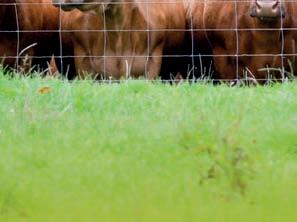


















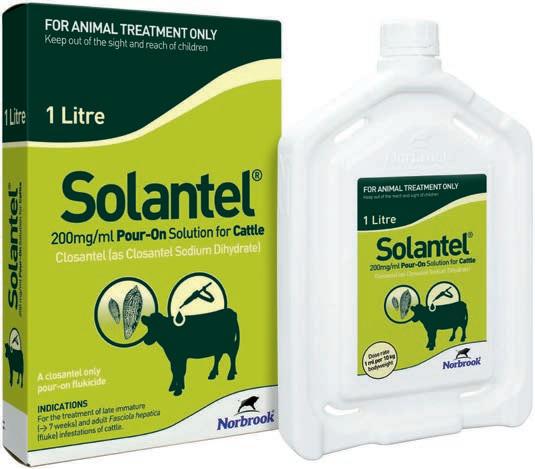






For this month’s Q&A, Zack Such from Rosevean Veterinary Practice in Penzance, part of the VetPartners Group, explains how to manage the transition phase e ectively.

QWhat are some of the most common pitfalls?
A: Insu cient feed and water space for dry cows: Dry matter intake can reduce by up to 30–40% in the nal two weeks pre-calving. Aim for 90cm/cow of feed trough space to maximise intakes. At least 10cm/cow of water trough space is recommended and a minimum of two troughs will reduce the risk of dominant cows preventing access to this resource.

Cows calving down overconditioned: Aim to dry cows o at a body condition score of 2.5–3/5 and maintain this until calving. Condition scoring cattle around 100 days pre-calving allows time for any necessary adjustments to be made before the end of lactation.

Unnecessary group changes: Cows take time to establish their place in the dominance hierarchy after moving groups. During this period of stress, DMI is often reduced at a time when maximisation is key.
QWhat are the most common health risks?
A: Compared to cows calving down at BCS 2.5–3/5, those over 3.5/5 are more likely to have di cult calvings, milk fever, ketosis, retained afterbirths and LDAs. They tend to lose more weight in early lactation and are harder to get back in calf. Those under 2.5/5 have an increased risk of lameness and





retained afterbirths, their production levels are lower and fertility is decreased. All of these factors make a cow more likely to be culled and reduce overall longevity of the herd.



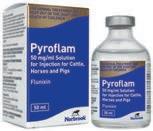
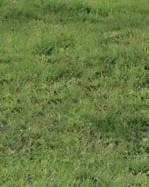




QHow can farms mitigate the impacts of forage shortfalls this year?
A: Lack of stored forage is a real concern with regards to rumen health over the winter. The key is to act early to assess how much silage is available and what level of shortfall is to be expected on farm. Once there is an accurate assessment of forage quantity and quality, a team consisting of farmer, nutritionist and vet is the best way to create a ration that will maximise available resources without compromising cow health. This may involve exploring alternative forage options, silage additives or buying in forage.
Additionally, regular body condition scoring of cattle ensures su cient energy levels are being supplied. Vets can also carry out blood or tissue sampling of selected groups for mineral status.
QWhat are the red ags for subclinical metabolic disease?
A: Many farmers will easily be able to recognise a clinical case of milk fever (hypocalcaemia) or ketosis and are aware of the long-term impacts of these. However, these are iceberg conditions and the cumulative impact that large numbers of sub-clinically a ected animals can have on overall production is vast.
Subclinical ketosis causes on average a 411-litre reduction in lactation yield and increases the calving interval by 22 days. There are also signi cant increases in the incidence of LDAs, mastitis, lameness, milk fever, cystic ovaries, retained afterbirths and metritis. Subclinical hypocalcaemia increases the likelihood of LDAs, ketosis, retained afterbirths and metritis by between 3.4–5.5 times.
Deterioration in any of these areas should give cause for concern, but it is more di cult to identify an issue if subclinical disease has been present for many years. Blood sampling a small number of cows for a metabolic pro le, at various stages of lactation, is the rst step to assessing what level of subclinical disease is present on farm. A herd’s vet is generally best placed to advise on how and when this should be done.
A: The key is to minimise stress. There are several di erent elements that will contribute to this:
• Maximise cow comfort: Loose-housed cattle should be o ered at least 1m2 of lying space per 1,000 litres milk capacity. There should be a loa ng area of at least a third of this again. For a cow yielding 7,500 litres per year this equates to 12.4m2. For cows housed in cubicles, consider the extra width that heavily pregnant animals require to lie comfortably
• Eliminate unnecessary group changes: Moving cows in at least pairs if possible, can reduce ghting. Try to avoid moving individuals more than once a week
• Maximise dry matter intake: At least 90cm/cow of feed trough space. Plus, keep ration fresh, consistent, palatable and continuously available. Thirsty cows do not eat as much so ensure at least 10cm/cow of water trough space
• Monitor then manage: Develop a tailored herd plan with your vet to screen for subclinical metabolic disease. FG

















































Optimising your farm’s performance can feel like walking a tightrope. You need to balance rising costs and navigating an everchanging political and regulatory landscape, with trying to look after the health of your livestock to ensure maximum productivity.
We’re on hand to help you choose the right options to help you stay on target with animal health and nutrition. From forage analysis and advice on balancing livestock rations, through to support on maximising the returns from home-grown forage, our network of qualified livestock and forage experts can provide all of the support you need.
Our integrated whole-farm approach to your livestock enterprise will help to maximise efficiency, allowing you to focus on what matters.
Agrii feed and nutrition specialist David Thornton provides some top tips on balancing your winter rations to save money on feed, whilst optimising livestock health, growth and productivity.

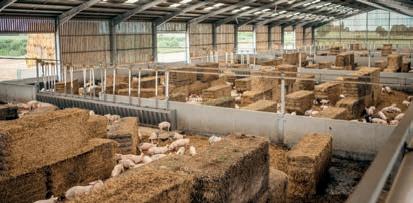

Given the continuing price volatility in the feed sector this season, ordering what you need is best done sooner rather than later, to ensure supply when you need it. If your intention is to homemix or TMR feed your livestock, once you’ve received the results of your forage analysis, work out whether what you have is su cient. Your local Agrii livestock specialist can help with these calculations – if required, please just get in touch.
The higher the quality of forage, the more animals will eat. For example, livestock will eat more silage than hay (in dry matter terms) because it generally has a higher digestibility. Ewes will eat more silage with a 70 D value than a 60 D value. This is important because better quality forages with a good intake factor can o er savings in the amount of feed required. For example, the di erence between an 11 ME silage and a 10 ME silage can save you 10kg/ewe of compound feed or home mix worth around £3.60/ewe this winter.
With good quality forage, either hay or silage, ewes eat approximately 1.4% of their bodyweight per day in dry matter terms. This is the starting
point for calculating a well-balanced pre-lambing ration. Cattle on the other hand can eat 2.5-3.5% of their bodyweight in dry matter terms. So, for example, a 500kg nishing beast requires around 12kg/day of cereal mix, plus a kilo of straw for healthy rumen function.


Energy – the key to e ciency: Forages largely supply energy in the form of bre, plus varying amounts of residual sugar left over after fermentation of silage. The D (digestibility) value will determine how much of this is actually available to the animal. Maize and whole crop silages are excellent forages for cattle and also supply starch energy, which is best for nishing.


Protein – for lean growth, colostrum and immunity: Forages supply some protein, which is mainly rumen degradable, but close to lambing or calving this should be increased by feeding compounds, home-mix or supplements to ensure milk let down is achieved. Good quality protein, called DUP (digestible undegradable protein) or rumen bypass protein is required to maintain high milk production and longevity of supply.
Home grown proteins, such as pulses, or
legume-rich forages generally supply rumen degradable protein and would still bene t from a source of DUP being fed close to lambing or calving.
Vitamins and minerals – the nishing touches: These nutrients are required in relatively small amounts, but nonetheless are critical for good health, breeding and lamb/calf vigour. To nd out which minerals are potentially de cient, test your forages and grazing to highlight what’s missing.
For more information please get in touch with your local Agrii livestock specialist, or call the company directly. FG



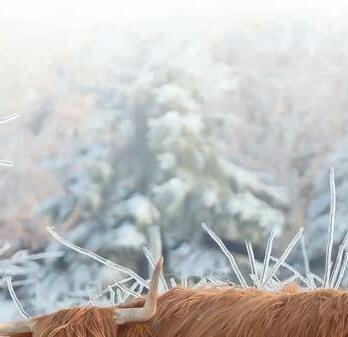





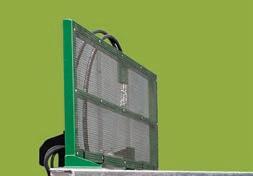









Maintaining a high-performance herd or ock is always a balancing act, with keepers trying to optimise genetics, the environment and nutrition, whilst managing the threat of infectious disease. A veterinary surgeon’s main domain is of course identifying, monitoring and treating disease, but moreover preventing it from having detrimental e ects on animal health
and performance. Every herd/ ock should have regular veterinary input to hold infectious disease at bay –through regular health planning sessions, rather than reacting once a problem has taken hold.


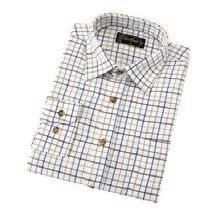
Veterinary care is more than treating a single animal showing clinical signs, it’s about considering that animal as part of a group and





seeking to understand what it is about their environment, diet and conditions that could have led to disease susceptibility. The word ‘holistic’ has been repurposed to suggest a rejection of evidencebased medicine in favour of alternative, or ‘natural’ remedies, but its actual meaning holds true. We should consider all contributing factors to an animal’s health during a consultation, but there may be areas where we might call upon the expertise of others to complete the puzzle. Collaboration with nutritionists or agronomists, for example, is an excellent way to gather a full picture.

All veterinary surgeons graduate as omnicompetent; able to practice across myriad species, but many of us choose to narrow our focus to care for our preferred species in greater depth. Some remain generalists, taking a keen interest in the wide variation of farmed animals from camelids to cattle; others may pursue further study on a certain species, or even focus on speci c body system or disease such as cattle mobility, or mastitis.
Vets with speci c interests may take external quali cations such as a Diploma in Bovine Reproduction (DBR), or a Certi cate in Advanced
Practice (CertAVP) – others may pursue residencies which culminate in diplomas. Extra quali cations may be noted with the Royal College of Veterinary Surgeons – helping clients and colleagues to nd vets who may have more in depth knowledge on a topic. ‘Specialist’ and ‘advanced practitioner’ are protected titles so certain criteria must be ful lled for a vet to call themselves one.
With all these options, it can be di cult to know which source of information is the best for future proo ng your farm. The answer is probably a combination of several. Though vets, specialists or farm generalists hold the key to infectious disease prevention and management, we are happy to spend time with specialists in particular elds to ensure that your business runs e ciently, maximising health and welfare at the same time. Sometimes the most e ective discussion happens when all of these contributors are in the same room – so consider whether it might bene t you to have your vet present when meeting your nutritionist, agronomist or business advisor to discuss the previous year’s data, your aspirations and your targets for next year. FG
as it not only encourages natural foraging behaviour, but also acts as a distraction tactic. The most favoured forms of enrichment by birds are those which provide them with a reward, such as grit, degradable peck blocks or Lucerne grass. These should be added at the correct inclusion rates dependent on stocking density. Enrichment, once provided, should not run out as this will cause undue stress.
Managing light intensity can also help ease birds into the change of routine. Whilst auditing legislation dictates the minimum lux levels allowed, most producers will have intensity set much higher than these minimum levels (often not adjusting light intensity post-peak production or growth). Now is a useful time to check light intensity across the poultry house. Lights can then be gradually adjusted according to bird activity and vocalisation levels.
Housing birds can increase infection pressure, especially for well-ranging ocks. Producers may nd that worming is required more frequently and shouldn’t be tempted to monitor worm levels less frequently simply because birds are not going out. Be aware that without the in uence of winter air through pop-holes, red mite numbers may be higher than in a ‘usual’ winter as house temperatures can run a little higher. Areas of the house most prone to mite infestation should be checked at least weekly to ensure there isn’t an issue.
After housing, some ocks will bene t from the use of nutraceuticals to assist in their transition to life indoors. Electrolytes, organic acid blends and multi-vitamins all have their bene ts when helping birds adjust to a change of routine. Choosing the best product should be done with input from your private vet.
As of 7th November, all ocks of captive birds in England must be housed. Housing birds that are used to going outside is a signi cant change to their routine. Some ocks will appear undisturbed by the change to their routine, others will show more subtle signs of upset and
some will be obviously a ected.
Even subtly a ected ocks may show signs of feather wear or pecking. If these ocks are concurrently su ering with disease they can be even more sensitive to the change in daily routine. Providing enrichment for such ocks is sensible
Demand for avian u cover has soared recently, according to specialist agricultural insurance broker, Dallas Scott Davey, which is part of TL Dallas. Director Ed Davey provides some advice on getting e ective cover.

“Levels of risk for our poultry clients are at a peak amidst this ongoing avian u crisis”, says Mr Davey. “With the worst months to come and so many units already experiencing nearby restriction zone enforcement, everyone is on the edge of their seat.”

He adds: “Despite the government compensation there is so much at risk for commercial producers. Lengthy delays in re-booting the unit following an outbreak can be devastating nancially. Where signi cant debt has to be serviced by the poultry unit, the concept of operating without cover is particularly stark.”


Although the market remains open, Mr Davey warns that it is on a rst-come- rst-served basis and the rm has to manage
expectations for those seeking terms. “It can take weeks, or even months, to reach a point where terms can be nalised, and that depends upon status quo being maintained. An outbreak near to the unit can change everything overnight.”
The most “diligent and bio-secure units” with the highest standards of management will nd it easier to acquire cover, he advises.
“There is a lot to be said for having a specialist company delivering your biosecurity and protection to your livestock. This enables con dence for the underwriter and expert dialogue with APHA and DEFRA at the point of an outbreak, which otherwise might not be open to you as a producer. Having the right policies in place is fundamental when it comes to things
Birds in production tend not to favour signi cant changes to their daily routine, but the Housing Order is an unavoidable change. Where possible, consider postponing any other signi cant changes planned to the birds’ routine e.g. ration changes. Allow the birds a period of a couple of weeks to settle into their new routine before making any further changes.


In the 2-3 weeks post housing, birds should be monitored closely for signs of deterioration in feather cover, gut health including droppings quality, production (egg numbers, size and seconds quality) as well as bodyweight. Early detection of even the most subtle of downturns usually makes intervention more e ective and less costly. FG
like secondary C & D, for example. Having specialist underwriters who understand the impact of the disease is key – and cooperation and co-insurance are also part of the solution, adds Mr Davey. “Growers must take every precaution to manage their risk. By doing so, they continue to help protect the ongoing availability of this specialist cover by mitigating the disease’s opportunity to spread. Whilst some producers have a knee jerk demand for cover,
driven by the ongoing outbreak, others are looking longer term and already thinking about putting their name down for next year.”
Given the cyclical nature of the disease, he recommends having a renewal date in the summer to avoid hitting the renewal date at the same time as having an outbreak. “[...] My experience of the market suggests future longerterm planning is going to be key,” he concludes. FG
As the UK continues to su er extremely high rates of avian in uenza – and following the introduction of a compulsory housing order in England – poultry vet Suzy Brown, of Avivets, o ers guidance on maintaining good bird health and welfare during housing.









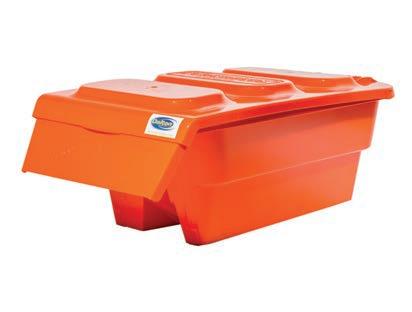

As the UK continues to battle its largest ever avian u outbreak, Dalton Engineering recommends three of its most popular products for poultry farms.


Disinfectant mat: This anti-slip mat, which comes in three sizes, can be lled with a suitable disinfectant, and when it is walked or driven over the liquid rises onto the soles of the shoes or wheels. It has a waterproof and chemically resistant cover to prevent leaks and is suitable for indoors and outdoors, at the entrances and exits of buildings or on









the approach route of vehicles. It can be easily cleaned with a hose pipe or taken out of its cover for cleaning.

FootCheck foot bath: Designed to improve the accuracy of dispensing concentrated disinfectants, achieving correct dilution every time and providing an audit trail for assurance schemes. It’s supplied with easy-touse wallchart instructions, plus a list of suitable disinfectants and nal concentrations. Peelable labels help users record and audit disinfectant use, alongside the footbath record sheet.
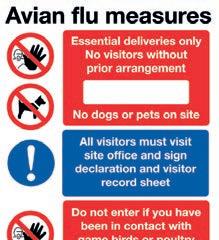
Avian u warning sign: Designed

for indoor and outdoor use to inform and warn people to exercise care.
The Health and Safety (Safety Signs and Signals) Regulations 1996, recommend that where a risk cannot

be completely removed a suitable warning sign should be displayed.

For more information or to order visit: https://www.daltonengineering. co.uk FG
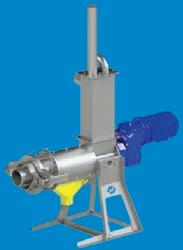
Upgrading your egg production system could be a sensible business decision in the current climate, advises Newquip Limited, the UK’s sole Big Dutchman distributor.
In today’s volatile environment, investing in an egg production system that has been designed with functionality, e ciency and animal welfare in mind is key. With the increased input costs and new legislation requiring farmers to be more energy-e cient, egg producers that made the decision
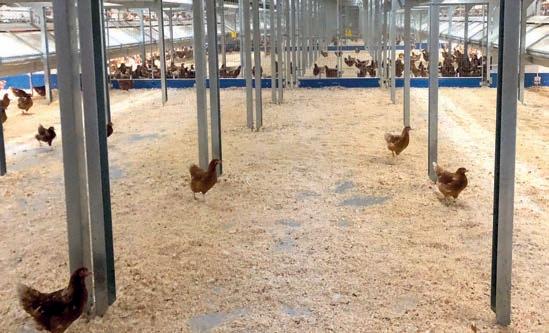
to upgrade their equipment in the last 10 years are now reaping the rewards.

Big Dutchman has over 30 years of experience with aviary systems for barn, free range and organic egg production. The German company’s innovative poultry equipment is supplied exclusively in the UK by
Yorkshire-based Newquip Limited. Newquip says its goal is to deliver e ective egg production systems that are easy to understand for the layers, in which they are free to exhibit their natural behaviours, remain healthy, and lay their eggs under hygienic conditions.
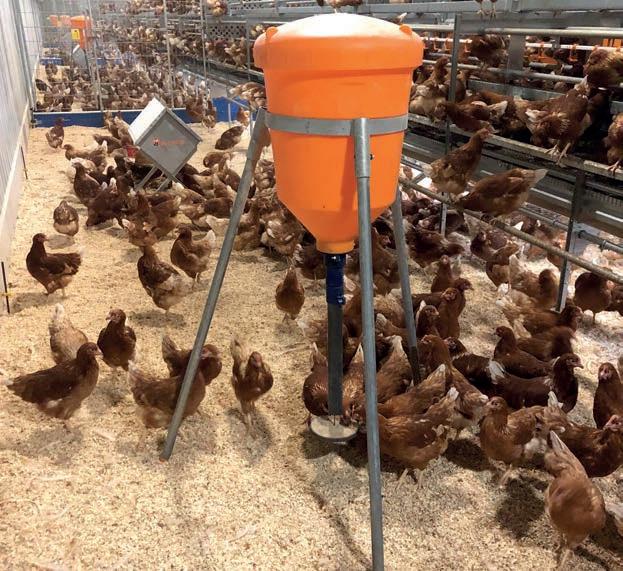
The ever-popular Natura is a management system that is focused on better feed conversion, lower downgrades and lower mortality rates, the company reckons. Tiers of di erent widths create a stepped design in which all levels are easy to access, especially the integrated nest level. You can choose from a range of models and optional add-ons depending on your speci c
requirements, such as an automatic system for egg collection, additional feed lines, and extra top-tier perches.
Adam Dye is managing director at Newquip Limited. He comments: “The Natura is a very versatile system that will stand the test of time. The pay-o will be much quicker given the current challenges facing producers as a result of the war in Ukraine. Big Dutchman equipment is used successfully throughout the world. It is the ideal solution for animal-friendly and successful egg production today.”
For further information, contact Newquip directly or visit www. newquip.co.uk FG







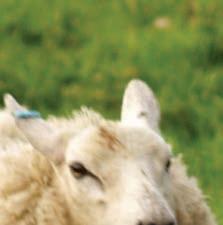



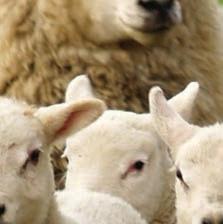
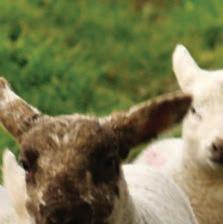


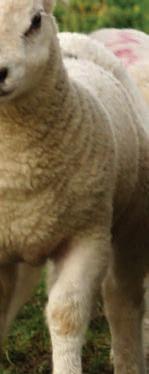




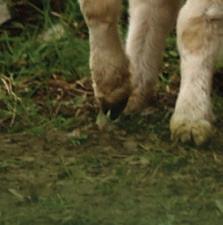

















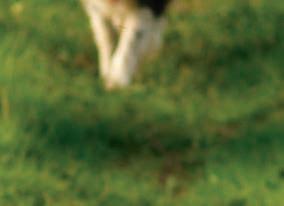

































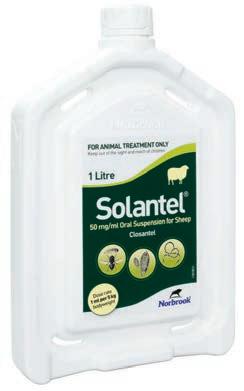
Ewes with poor BCS, low colostrum intake and bacteria in the environment are key causes of lamb losses and low birth weights. And after a particularly dry summer, farms in some areas may need to pay particular attention to ewe nutrition in the lead up to lambing.
Insu cient record keeping is one of the most common pitfalls seen around lambing, explained Sophie O er, of Cross Counties Farm Vets, part of the VetPartners Group. Although challenging during the busy lambing period, keeping good records – e.g., lamb and ewe losses and the causes, abortions and medications given – make it easier to pinpoint where problems occurred and take action to prevent further losses.
Not investigating problems as they happen is another issue – for example, blood testing after lambing due to higher abortion rates can be useful, but it’s more bene cial to send o lamb and placenta samples at the time of the abortion, as more diseases can be tested for. “If you are experiencing problems over lambing time, always ring the vet for advice sooner rather than later,” Ms O er said.
She highlighted the following as key causes of lamb losses and poor birthweights:
• Ewes with poor BCS: Monitoring in the lead up to lambing is key. Low birthweight lambs have less brown fat reserves to help them generate heat in early life, and lower glucose, so they take longer to suckle and are more susceptible to hypothermia, starvation and infection
• Low colostrum intake: This increases the risk of disease and death in the pre-weaning period and is caused by poor supply from the ewe, low birth weights, hypothermia, mis-mothering and multiple births. All lambs require 50ml high-quality colostrum per kg of bodyweight in the rst two hours after birth and a total of 200mls/kg over the rst 24 hours
• Bacteria build up in the environment: Can lead to illnesses such as watery mouth, navel ill, septicaemia, joint ill and mastitis. Hygiene and colostrum management is especially important now Spectam has been taken o the market. Disease challenge can be lowered
in numerous ways, but it is vital to isolate sick animals quickly, dispose of afterbirths (especially aborted ones), regularly cleanout/ disinfect sheds/individual pens, and ensure stomach tubes, water and feed buckets are disinfected between lambs.
Summer 2022 was challenging and the limited grass supply in some areas may have a ected ewe condition. “So now they have moved on to conserved forages, it is important to analyse either the grass or hay, and know what they’re getting,” said Cargill ruminant specialist Donald MacLeod. “This information is critical to rationing heavily pregnant ewes, where the fast-growing lambs limit dry matter intakes. There’s less space available for feed in the rumen, so it’s critical that the correct inputs of energy, protein and all the ewe’s other requirements are met.”
Going to tup with a poorer BCS can lead to problems such as coming into oestrus slowly or unpredictably, foetal reabsorption and having a low lambing %, Ms O er explained. Scoring should be done at scanning so ewes can be separated based on their BCS and number of lambs and supplementary feeding can be targeted to the ewes that need it most. Target BCS at scanning is 2.0 for hill breeds, 2.5 for upland breeds and 3.0 for lowland breeds.
With 70% of foetal growth and most of the mammary gland development occurring in the last six weeks of pregnancy, blood testing 3-4 weeks before lambing is recommended so changes can be made in time if the ration is not meeting their needs, Ms O er said. Ideally, sample at least ve sheep from each management group (e.g. singles, twins, triplets). Samples are usually tested for Beta hydroxybutyrate, UreaN and Albumin. BCS and feed analysis should also be taken into consideration alongside blood results, she advised.
For ewe feeds, Mr MacLeod recommended



a concentrate feed with high quality protein, such as sustainable soya, and high energy from cereals, and maybe a protected fat. “Those carrying multiple lambs will also need extra supplies of a good quality mineral containing selenium and vitamin E to support their antioxidant status and promote quality colostrum.”

With research suggesting that 15-20% of lambs die within the rst 24 hours of birth, predominantly due to hypothermia and starvation, Mr MacLeod stresses the importance of good quality colostrum and su cient milk. “Shepherdess colostrum and milk, for example, have a good track record here,” he says. “These products are easy to mix and use on farm, particularly through the purpose-designed Shepherdess feeder. The lamb milk is very closely formulated to match the nutritional value of maternal milk and it includes the advanced gut health package NuStart that helps lambs through the vital early growth period.”
To prepare for a successful lambing season, Ms O er advises the following:

• Have a lambing box ready to go containing: a selection of needles and syringes, iodine 10%, castration rings and ring applicator, lubricant gel, lambing ropes/snare, thermometer, marksman spray, stomach tubes, disinfectant, prolapse harnesses
• Have the relevant medicines to hand: Antibiotics, anti-in ammatories, calcium and magnesium supplements, twin lamb supplement and powdered colostrum. Draw up protocols with your vet on what drugs to use when
• A booster clostridial vaccination needs to be given to all breeding ewes 4-6 weeks before lambing, to help control clostridial disease in lambs. Any breeding sheep not previously vaccinated with a clostridial vaccine must receive two injections, each of 2ml, separated by an interval of 4-6 weeks, so allow enough time pre-lambing to t this in. Other vaccinations such as Footvax and Scabivax are very farm speci c so best to speak to your vet about the best timings for these
• Many vet practices o er lambing workshops which can help freshen up your knowledge and skills – Farm IQ has a ‘Successful Lambing’ course. FG






James Barnetson, of Lynegar Farm in Watten, Wick, was the rst farmer to purchase a Calf Catcher back in 2017. He has since recommended it to a number of other farmers who have gone on to purchase one. Previously,
catching and tagging calves took two hours every morning and required 2-3 people, but James can now get the job done alone in at least half the time.
The farm, which calves outdoors
as much as possible, has 200 suckler cows, mostly Aberdeen Angus and 1,000 breeding ewes spanning 1,300 acres. James describes the Calf Catcher as a “tremendous bit of kit”. As well as saving time and hassle, another unique bene t is being able to move cows easily to a new eld after calving, as they will follow the calf in the catcher.
The Calf Catcher is a cage that runs on two wheels alongside the ATV or UTV. The operator follows the calf until it is in the cage, then uses a level to release a sprung loaded gate. Tasks such as tagging can then be performed safely, causing less stress to cows as they can see their calf in the cage.




















Although there have been tweaks to the system since its launch – it is now galvanised, for example –James still has the original system he purchased ve years ago and has never needed any adjustments or upgrades.
Rattray Estate near Peterhead, Aberdeenshire, purchased a Calf Catcher in 2018, when they were dealing with “continental cows with an attitude problem”, explains farm manager Calum Clark, who says it was “the best money we’ve ever spent on the farm”.

The farm calves 100 spring calving cows from April to June, mostly native bred beef shorthorns
plus some continentals. Being very much a ‘one-man band’, catching and tagging calves had previously been very cumbersome but the Calf Catcher means he can catch, tag, dehorn and castrate the calves if necessary whilst safely within the cage. Hitching and unhitching takes only a couple of minutes, and the brackets are now uniform so the Calf Catcher can be tted to almost any ATV or UTV.
“It’s a huge time saver. It’s quieter on the bike, better on rough ground and safer, not just for me but for the calves,” Calum says.
After using the machine for two years, Calum sent it back to Gordon for a couple of modi cations, which were completed quickly and the machine has since been “perfect”. He adds: “Being galvanised it can sit outside all year round without any issues with rust. It’s virtually maintenance free”.
The Calf Catcher was originally designed and built by Gordon to handle a calf with a very aggressive mother. There are now about 60 catchers working in Scotland, England, Wales, Ireland, France, Denmark and Romania.
To watch the machine in action, visit: https://www.youtube.com/ watch?v=cBHbYINgCBQ FG

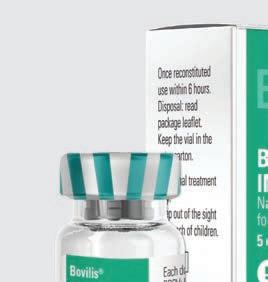
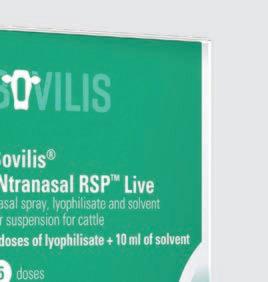



John Dawson, Bleak Bank, Settle, is working with other farmers grazing the 1,416ha (3,500 acre) Ingleborough Common, Craven, which at its peak is home to 1,800 ewes, to manage the costly condition.
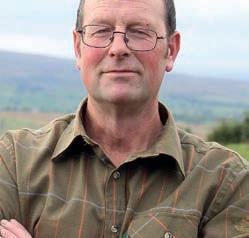
For the past two years, 12 ewes from each ock have been tested using the blood ELISA test, which detects antibodies in sheep exposed to scab in the last six months. Results have found scab exposure in some ocks, leading to a coordinated treatment approach.
Mr Dawson says: "It's important we protect each other’s ock. We all are responsible for ensuring our sheep are free from scab, and we must eliminate the stigma attached to it. How you manage a sheep scab diagnosis is important. Any ock can get it and it's not something to be ashamed of. However, what is important is how you deal with it and to tell your neighbours."
Each year Mr Dawson buys in two to three Dalesbred tups. Ten years ago, one of the tups he purchased was in quarantine when it began rubbing and losing wool. The vet took a sample and found it to have sheep scab.

Mr Dawson says: "We treated the tup with Cydectin 2% LA for ease as it hadn't been in contact with any other stock, allowing us to nip it in the bud and prevent it from spreading to any other stock.”

Farmers bringing any sheep onto their farm are advised to quarantine them for 3-4 weeks and test 12 animals from each group after two weeks using the blood test. The test costs about £84 for 12 animals. The test will indicate whether the group of sheep has been exposed to scab and whether treatment is necessary, says independent sheep consultant Lesley Stubbings. "You cannot tell simply by looking at sheep if they carry scab mites. Clinical sheep scab can take weeks, if not months, to present itself, by which time much of the ock can be infected. The Sheep Scab ELISA test means scab can't hide from us anymore. It makes it much easier for farmers to use the right product at the right time, knocking sheep scab on the head.”
Ms Stubbings says using medicines simply as insurance or 'just in case' leads to problems with resistance, but it is also expensive and often doesn't provide the required control. "By testing, farmers can be sure whether they need to treat or not," she says.
Farmers can treat sheep scab in two ways:
• Using an injectable group 3-ML such as Cydectin 2% LA has been proven to treat scab infestations and prevent re-infestations for 60 days from a single injection
• Plunge dipping using an organophosphate (OP) dip.
Ms Stubbings says the treatment choice comes down to the most practical method for the farmer, ensuring every animal is treated correctly.
“The main thing when treating for scab is that you do it properly, whether using an injectable or a dip. There’s no reason why you shouldn’t use an injectable, providing it is used properly, meaning the correct dose is administered and all the animals are treated. It is a practical option when there’s only a small number of sheep to treat or if there aren’t the facilities for dipping,” she adds.
Scab is such an important condition to control due to the welfare and economic impact it can have, explains Zoetis vet Ally Ward. “Scab is so itchy for sheep, and in the later stages, they will spend all their time rubbing, scratching and biting their wool to alleviate the itching. This is a real welfare concern.”
Figures estimate the cost of sheep scab to the UK sheep industry to be between £78-202 million a year1, with labour being one of the most signi cant contributors to the cost. Nine per cent of ocks are infected annually, with rates a lot higher in some hotspot areas2
The Sustainable Control of Parasites in Sheep (SCOPS) group has worked with Zoetis, the makers of Cydectin 2% LA, to produce a Code of Practice for using injectables, which can be found on the SCOPS website: https://www.scops.org.uk/ workspace/pdfs/best-practice-use-of-injectablescab-treatments.pdf FG
1. Nixon, E, J., Wall, R., Vineer, H, R., Stubbings, L. The high cost of sheep scab. Vet Record, October 2020, Volume 187, issue 8 p325.
2. Nixon, E.J., Brooks-Pollock, E. & Wall, R. Sheep scab spatial distribution: the roles of transmission pathways. Parasites Vectors 14, 344 (2021). https://doi.org/10.1186/s13071-021-04850-y






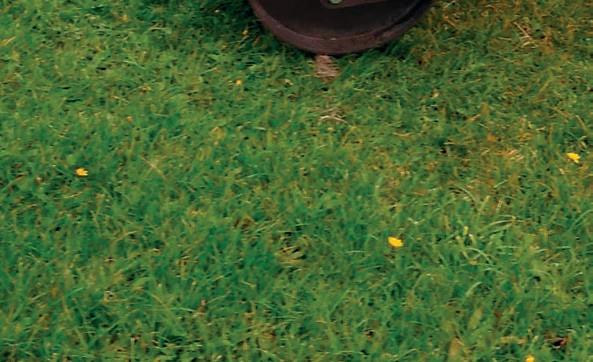























































The Ceres Sub-Line Grassland Subsoiler is a low-cost, but highly e cient way to rejuvenate and sustain healthy grassland, by relieving compression from the year’s livestock, water and general tra c, with minimal disturbance, and helping to prevent water damage and further compression moving into the new season.

The Sub-Line is designed to achieve the maximum efficiency from your soil by lifting and shattering compaction, allowing air, water and nutrients to flow into the substructure, thus enabling the roots and microbacteria to fulfil their potential. The strong environmental credentials of this machine include its contoured, lowdraft legs, which are mounted inline, achieving great lift and shatter with minimal horsepower and fuel consumption.






It also helps water dissipate through the soil structure preventing flash run-off, or worse, standing water that will further compact the soil, deprive the soil of oxygen and emit greenhouse gases. Additionally, like all Ceres machinery, the Sub-Line is designed, built and manufactured in the United Kingdom, reducing its carbon footprint.

The Sub-Line is suitable for all levels of soil management, including contractors and farmers, and as it has been designed for UK soils, it can be more effective than other more expensive machines, Ceres claims. The leading discs have independent suspension to help















prevent damage to the discs and overload and shock of bearings.


All of the discs can be adjusted with one handle, which has six working positions and one outof-work position. The discs can be kept in their optimum working position, cutting through the sward cleanly, allowing the leg to pass through without tearing the surface.





Each of the legs are mounted on the substantial frame, with two M16 shear bolts for protection. The legs, knock on points and all other wearing components are widely available, which reduces cost and downtime.
It is equipped with a 460mm diameter flat rear roller, which has simple dual turn-buckle adjustment to control the working depth of the machine, and leaves a neat, level finish across the width of the work. There is a galvanised, adjustable scraper mounted within the roller arms to prevent congestion and build-up.
The Sub-Line is available from a single leg machine up to a five-leg machine. All sizes are compatible with Category 2 linkage, from 40hp to 190hp. FG
To prevent pneumonia from taking hold, Hydor recommends installing tube ventilation systems where calves are housed. These ensure that stale air which can retain bacteria and viruses is continuously
replenished with fresh air.
Hydor’s Tube Ventilation System can improve the quality of air within farm buildings by providing a continual air ow to allow fresh air to enter the shed, the company says. Causes of respiratory infection, such as condensation and damp, are eliminated quickly and e ectively as foul air is diluted. Meanwhile, the system can be designed so that the fresh air circulates above the animals, so as to not cause a chill, which is particularly important for good calf health.
Easy to t and with low running costs, Hydor says all its products are UK manufactured. For more information visit https://hydor.co.uk/ product/tube-ventilation-system/ FG
Personal advice on equipment and sundries
Essex-based company Di’s Supplies provides personal advice on all types of farm livestock equipment and sundries –including xed and portable handling systems for cattle and sheep, using components from Bateman, IAE, Ritchie and Shearwell to name a few, along with electronic identi cation and weighing systems.
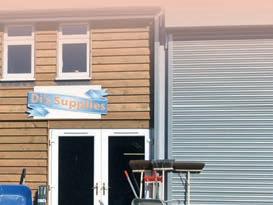

Internal and external parasite


control is also catered for with pour ons, drenches and injections. Dallas Keith and Crystalyx products are represented in the form of mineral and feed buckets as well as liquid supplements.

A huge range of products are supplied, including electric fencing as well as stock fencing, barbed wire, gates wooden and galvanised, posts and rail fencing, water pipe and ttings. As winter sets in, Di’s Supplies also has bird scaring products to keep the vermin away from your crops.
Di’s Supplies is selling Christmas trees again this year and visitors are assured a warm friendly welcome at the shop, located at Whitesbridge Farm, Margaretting. FG
A Tube Ventilation System supplies fresh air to all parts of the building, diluting airborne pathogens and irritants which can help to reduce vet bills. This system is particularly suitable for calf housing, smaller cow sheds and equine facilities.
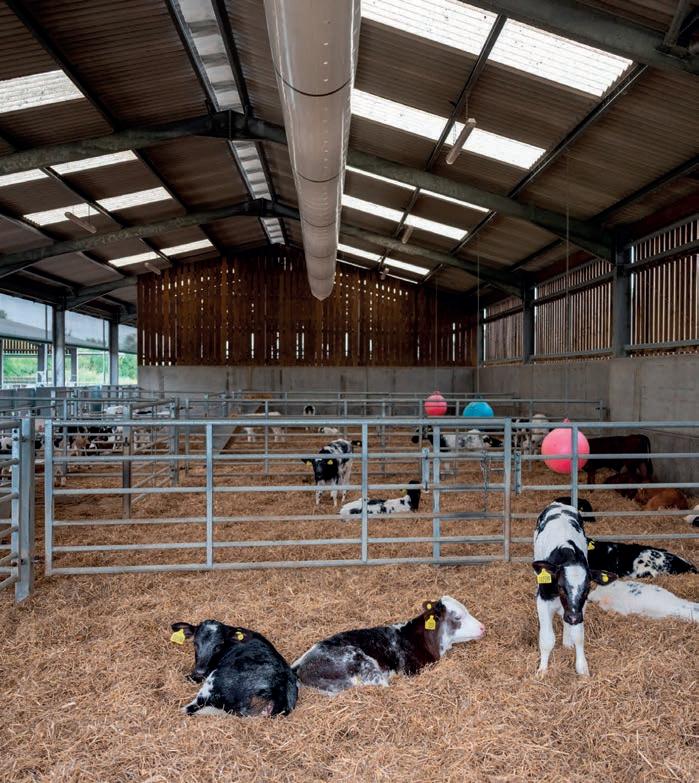





“No matter what the job, the Kioti K9 2400 UTV will help you get the job done. Its large tipping load area and three-seater cabin makes it the ideal utility vehicle to move sta and tools around,” Kioti says.


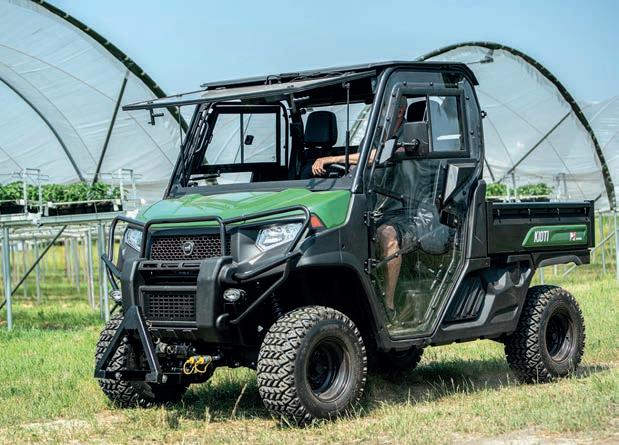


A choice of ROPS, canopy and screen, or full cabin are designed to keep the driver and passengers safe, be it travelling o -road or on the highway. Meanwhile, the K9’s 40kph road travel homologation, selectable 4wd and 31cm ground clearance will get you where you need to be, the company adds.
The generously sized rear load area can carry loads up to 500kg,
from maintenance equipment to soil and stone. Protected with a urethane coating, the bed should stay looking good for many years, Kioti reckons, and the opening rear door and hydraulic makes for rapid unloading of bulk materials.
A 25hp Kioti engine provides the power, whilst a variator transmission, with high/low and reverse ranges, provides the drive through a choice of two- or four-wheel drive.
Supported by a network of independent dealers, the Kioti K9 comes with two years’ unlimited hours warranty for added peace of mind. FG








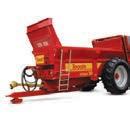
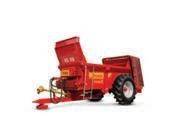


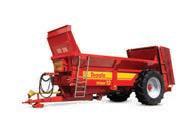






grouped into the following ranges:
1. Compact range – Titan 6, 8 (pictured) and 9 (6.3–11.2m3)
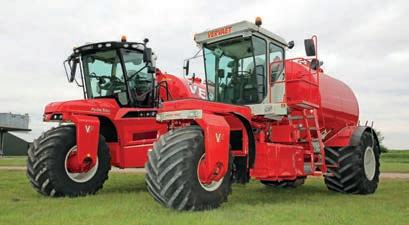





2. Agri range – Titan 10 and 12 (10.2–14.8m3)
3. Pro range – Titan 15 and 17 (15.4–20.1m3)
The Titan muck spreader is designed to allow users to gain the greatest bene t from the nutrients in their manure by e ectively shredding muck and evenly spreading it behind the machine.

against abrasive materials and foreign objects found in the muck.

Calibrated high-strength bed chains, up to 18mm diameter in the Pro range with a combined minimum breaking load of 83 tonnes, are designed for tremendous strength and durability. A hydraulic pressure relief valve provides protection against damage.
Teagle carries a comprehensive stock of spare parts which are available for next day delivery.
Teagle says its rear-discharge muck spreaders are wellproportioned, ensuring excellent stability, manoeuvrability and load visibility, plus superior ground clearance.

Features include:


• Robust and durable boron auger and tips
• Swinging ails for improved drive line protection

• High tip speed to ensure ne shredding action
• Wide angle PTO for non-stop
spreading

• Clean operation with splash boards
• Commercial axle, air brakes and automatic light covers for improved road safety
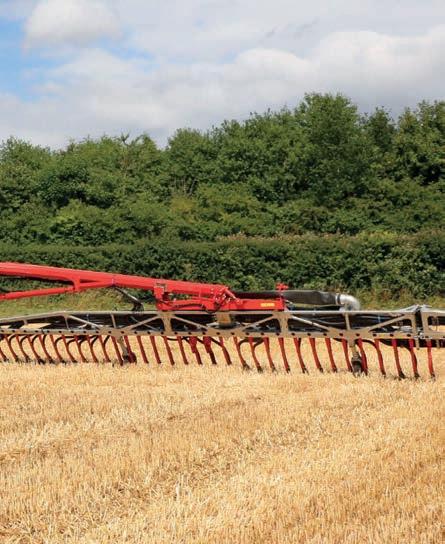

• Isobus variable rate system for precision farming (available on Titan Agri and Pro ranges)
• 18mm oor chain for extra strength and reliability (available on Titan Pro range).

With seven models across three ranges, Teagle reckons there’s a Titan to suit all farming and contractor requirements. The spreaders are
The manufacturer optimises the pitch of the spreading augers, which is critical to ensure that muck is nely shredded; the shallower pitch ensures e ective mixing and shredding prior to discharge, while the smooth and continuous face of the augers ensures a consistent and even spread pattern. Teagle quotes one of its customers as saying: “The Titan copes well with the wide variety of muck producing an excellent, even spread pattern across the eld that is essential for applying nutrients and soil conditioning.”
Heat-treated Boron steel has twice the exural strength of mild steel, ensuring the company’s auger, beater spirals and ight tips provide durability, wear resistance and greater service life, whilst o ering protection
The optional Isobus variable rate weigh cell system, which is available on models across the Agri and Pro ranges, utilises four 20t rated weigh cells on the axle and drawbar. Target application rate is entered into the controller, which then monitors the load and adjusts the bed chain speed accordingly. GPS variable rate control can either be via an existing tractor Isobus terminal or is available as an optional accessory.
Combining GPS and weigh cells enable you to set, monitor and automatically control spread rates on the move. The Isobus Variable Rate Weigh Cell System from TopCon is available with a 7in XD or 12in XD+ monitor for ease of operation and full rate control. FG
The 6,840m2 (73,625 sq. ft) facility has been designed to handle the cutting, folding, manufacturing, and painting processes. This has helped increase construction capacity and smooth work ows, to ensure machines are produced and nished on schedule. The new building will allow Bunning to positively react to increases in demand to build more new machines or quickly produce spare parts to limit down time.
“We are seeing contractors buying additional spreaders to meet demand and farms purchasing spreaders to bring control over application in-house, so the new facility will help us keep pace with the increased production,” says Chris Druce, sales director at G T Bunning and Sons.









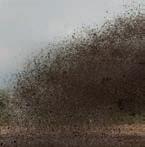


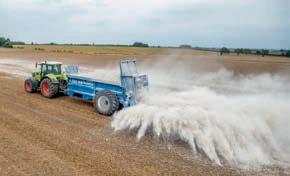
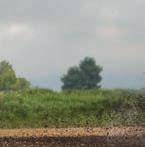

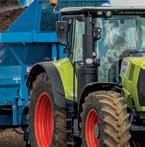


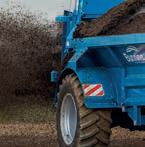

“Organic manures are now seen as valuable inputs and are helping to o set the cost of boughtin fertiliser, so being able to spread accurately to a
desired width whilst using the latest technology, has contributed to a steady increase in demand for our machines.”
A large part of the investment has been the installation of a dedicated £1.3M shotblasting and painting facility, which includes a preparation booth between the shotblasting and painting bays. Lift sections within the paint booths raise the spreaders to allow the painters easy access to the whole machine. Bunning uses a high zinc primer and top coat to ensure the best protection via the latest paint mixing technology.
To help with the fabrication, a 12kW laser cutter has replaced a plasma cutter and improved the accuracy and consistency of production for both new machines and aftermarket parts. It has allowed Bunning to notch and tab more parts to make tting a quicker process. A new LVD Easy-Form 320t press brake can bend 6m wide sheets at once to increase precision and consistency of builds. The laser correction should allow more bending to take place and will increase e ciencies over the outdated machine it has replaced.
“The new facility allows us to keep pace with demand and use the latest technology during machine construction, which has helped make our production process even smoother,” says Mr Druce.
With over 100 full time employees, the new facility has allowed several operations to be moved away from older, smaller buildings on the site into the new purpose-built unit. The additional light and a better working environment have been welcome additions for the sta , along with on-torch extraction for welders, with air recirculation units. FG
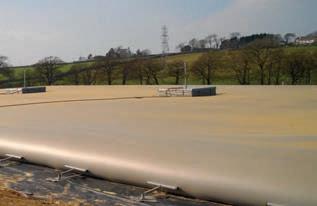
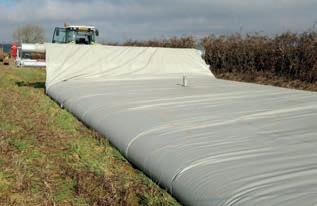

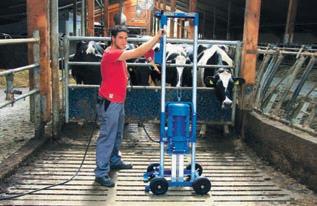
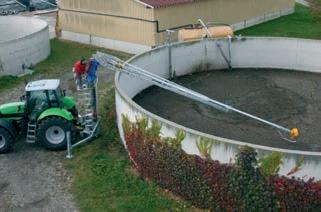









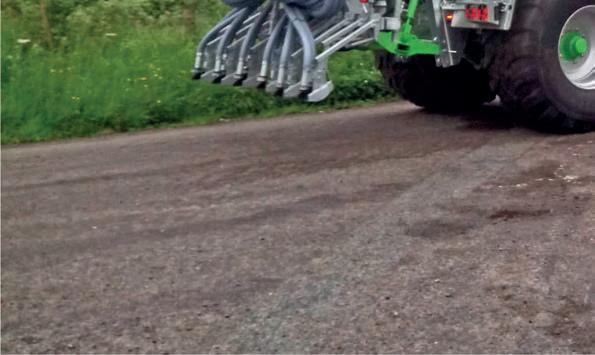
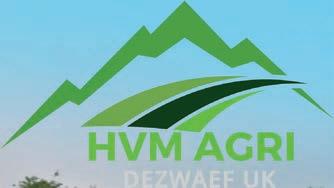





years’ 0% interest finance. With an rrp of £72,261, assuming a balance to finance of £28,800 after




in,
payments totalling £2,400 on signing, followed by 55 additional payments of £480 per

available whilst

last. This promotion is for business purposes only in the UK for new PROXIMA CL110 tractors fitted with a TracLift TL 140 loader, and is subject to credit acceptance and any qualifications in government or company policy. Finance is available of 40% of RRP or the balance to finance, whichever is the lower. VAT - Hire Purchase: Full VAT on signing - Lease: VAT payable on each rental as it falls due. VAT charged at the current UK rate at time of acceptance. Administration fees are payable on all transactions including interest free agreements. Written quotations are available upon request from Rural Finance Limited, 5 Wilkinson Court, Wrexham, LL13 9AE. Rural Finance Limited is authorised and regulated by the Finance Conduct Authority number FRN630701. Rural Finance Limited offers financial facilities to UK businesses only through a number of authorised funders, a list of which is available on request.
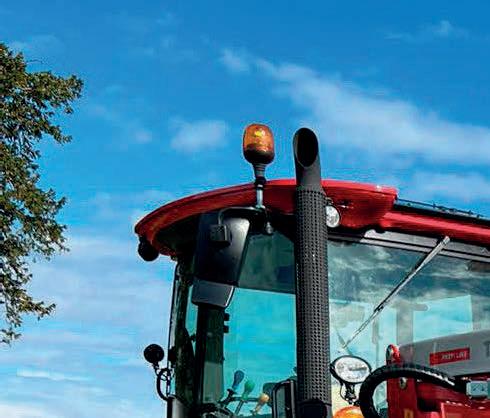
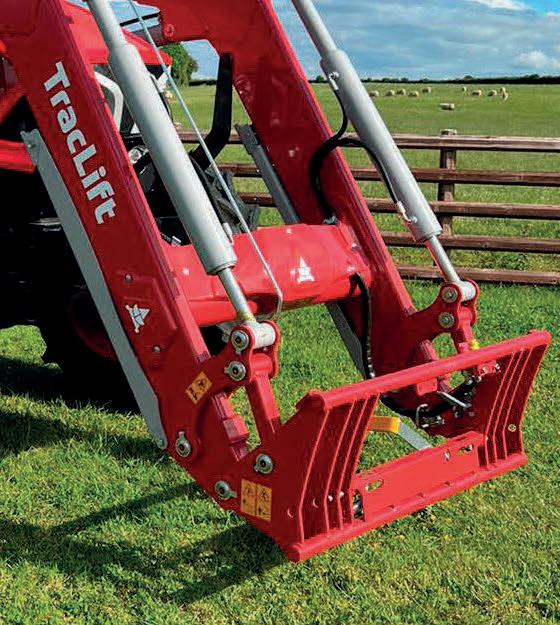
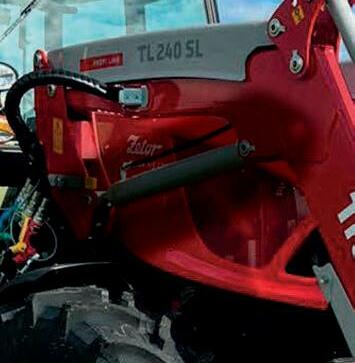

Farmers and contractors wanting to put a front loader on their Zetor tractor can t a TracLift front loader.

Engineered to t a wide selection of Zetor tractors, the TracLift loaders are available to order through the Zetor UK dealer network for new or existing machines. Topping the range is the TL 340 SL, with an impressive 2.2t lift capacity to a height of 4.05m. Completing the range are the TL 240 SL and TL 140 SL, with lift capacities of 2.0t and 1.7t, respectively.
Designed with operator comfort in mind, the HYDRAC hydraulic system provides high speed operation, reaching full height in an impressive 4.5
seconds. Whilst the integrated piston-type gas damper – with a maximum travel of 120mm – can be activated to absorb shocks, reducing bounce and ensuring driver comfort is maintained.
The euro hitch face plate means a wide selection of attachments can be quickly coupled and used. The third and optional fourth auxiliary services are operated from the integrated joystick, ideal when powering attachments.


The quick attach brackets and multi-lock hydraulic connector means the loader can be easily and quickly attached and removed as and when required, further increasing the versatility of the tractor. FG
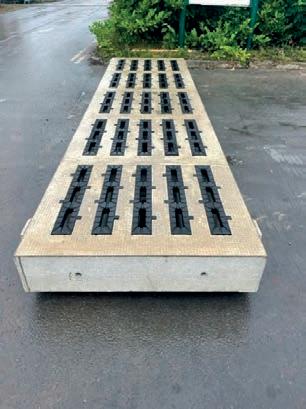

Wolfenden’s Hybrid Supa Slats o er improved performance and better herd welfare for greater productivity on-farm, the company claims. The innovative slat design combines rubber with a non-slip concrete surface, allowing for a high standard of performance for animal welfare and slurry management.
The level of comfort and grip allow for a more natural walking style, while the quick drying grooved rubber inserts help lower ammonia build up and emissions, aiding hoof health and subsequently lowering vet bills.
At 250mm thick and with 10t axle loading at entry level, Hybrid Supa Slats are designed to cope with most farming demands. With a minimum 10-year lifespan for the rubber inserts and with Wolfenden’s high quality reinforced concrete, farmers are assured of an excellent asset cost / lifetime expectancy.






Wolfenden is the only mainland UK manufacturer of hybrid slats, ensuring e cient supply. The new Hybrid Supa Slats are available in two standard lengths – 4.5m and 4.8m –ideal for larger dairy farms with wider
passage requirements and providing improved animal welfare whatever the herd or farm size.
Wolfenden has been working with the UK dairy industry for over 45 years. Hybrid Supa Slats are the latest product in its award-winning SUPA range, which includes:


• SupaStrong diagonal slats for e cient slurry management, combined with a 12t axle load
• SupaDeep channels with 50% extra capacity for superior slurry collection
• SupaWide slurry channels which can save up to 75% labour time. FG
dribble bar. The trailing shoe features a robust chassis mounted mast which ensures the tanker and shoe are perfectly balanced and the shoe is properly supported to the tanker. It is designed so both the ll points and splash plate can be used without any modi cations.
uses a rotary chain and ail system to achieve a good break up of material, which is then spread using a pair of spinning discs.

The range includes a wide range of models with capacities from 800–5,000 gallons (3,600–22,700 litres), all available with numerous lling and other options.
All are manufactured using high quality British steel and incorporate internal implosion rings and a collared dished end as standard to ensure the strongest possible construction. Tanks are fully supported by the complete chassis frame and models are available with both standard or stepped recessed axles. The recessed
axle lowers the centre of gravity, which improves stability both on the road and on undulating ground.
Options include a wide range of lling options, including highcapacity pumps and a cab operated lling arm. The intake system can also incorporate a Vogelsang Rotacut 5000 chopping unit to avoid any potential blockage to the injectors caused by straw or silage in the slurry.
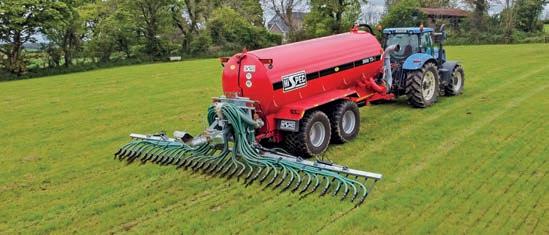
A wide range of spreading attachments are available, including the Hi-Spec trailing shoe (in working widths of 6.0, 7.5, 9.0 and 10.5m) and
New this year, the dribble bar is chassis-mounted with a working width of 7.5m, folding down to 2.55m for transport. It features 30 at hose outlets, fed by a Hi-Spec distributor with an integrated stone trap. It requires only a single double-acting spool valve and design includes a splash plate with two blanked o lling points for optimum functionality.
Alternatively a wide range of disc injectors (Bomech), dribble bars (Vogelsang or AgQuip) and trailing shoes (Bomech or AgQuip) can be used with the tankers.
The range includes both the rear discharge XCEL 1250 spreader and two side discharge machines. Hi-Spec says the XCEL 1250 is unique in that it
The shredding rotor carries 22 heavy duty chains, which carry 12mm Hardox ail heads, mounted under a 4mm Hardox hood, that shred all the material to an even consistency and ensure no lumps are deposited onto the spreading rotors. An adjustment plate on the shredding rotor hood evenly places the manure onto the spreading discs.
The XCEL 1250 has a capacity of 12t and can evenly spread material up to 24m. Options include various tyre sizes, a weigh cell and the Isobus compatible RDS iSOCAN Apollo spreader control system or the straightforward Digi-Star GT400 weighing system.
Two Hi-Spec side discharge spreaders are available – the 8m3 SS800 and the 10m3 SS1000, built using heavy-duty 5mm thick British steel and feature a 3mm lid.
Standard speci cation includes a ring hitch, hydraulic braking and LED road lights, while the SS1000 also incorporates centralised greasing. FG
When it comes to comes to muck and slurry handling, Hi-Spec Engineering says it has the ideal solution in its comprehensive range of machinery.
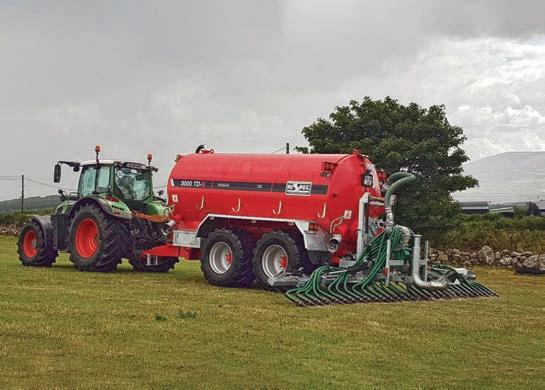





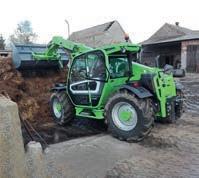
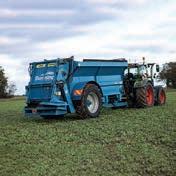
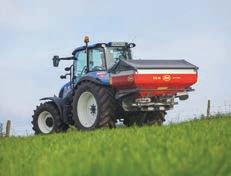













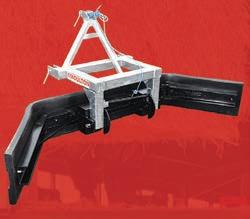
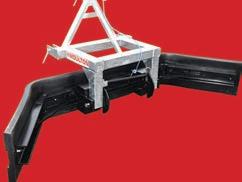
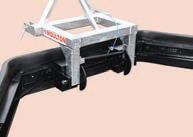












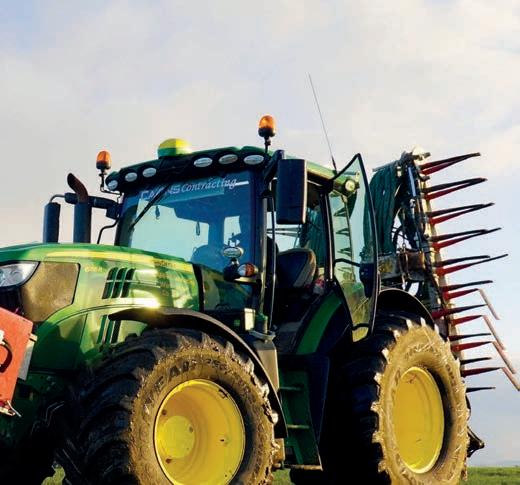















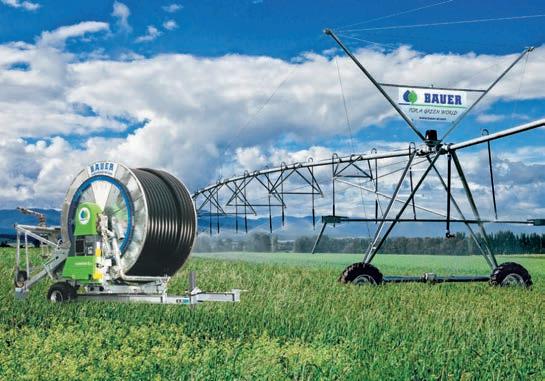










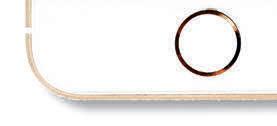







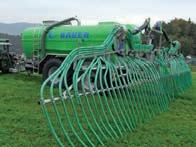

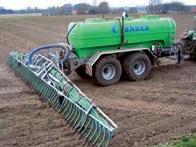
Another focus on e ciencies for the farmer comes from the recently launched innovative press screw separator. Since its launch in November 2021, Vogelsang has presented the XSplit as a complete system solution which consists of the separator, a VX-series rotary lube pump, a RotaCut wet cutter and control technology. All this can also be mounted on a trailer, which comes as an extra option.
farmers and biogas plant operators to optimally separate slurry.

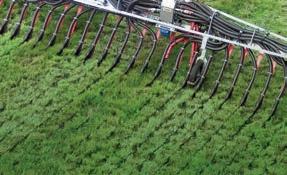



The screw press separator achieves a dry substance content within the solids share of up to 40%, which makes it suitable for many di erent agricultural applications. By repositioning the drive at the solid’s outlet, no extra shaft seal is required to the medium, greatly reducing wear costs and maintenance downtimes.
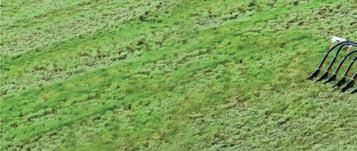



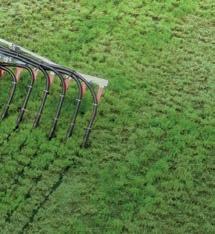
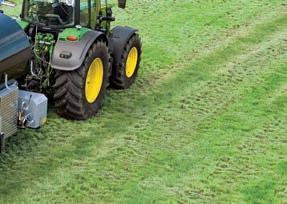

Vogelsang continues to be committed to e cient slurry management with a host of suitable machines being launched, as well as improvements and adaptations of current products to ensure ultimate e ciency.


Spreading technology has seen the popular UniSpread launched for the rst time publicly as an umbilical system. The system has been predominantly marketed as a trailing shoe option, which o ers great precision for slurry placement. This new version can be mounted
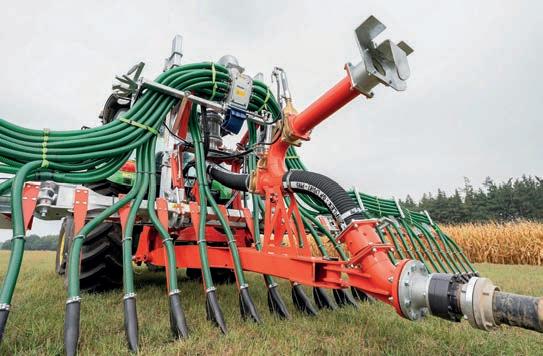
directly to the tractor, while the slurry is pumped through an umbilical system. Vogelsang’s focus on this is to promote an option that can reduce overall weight in the eld by eliminating the need for a slurry tanker. This option will be available in working widths of 7.5–10.5m.
“It’s becoming increasingly important to our customers to fully exploit digestate and slurry in the best and most e cient ways – whether as fertiliser for plant cultivation, or as bedding, for soil improvement or for power generation in biogas plants. The separation technology rounds out our portfolio for even more e cient management of digestate and liquid manure,” says Harald Vogelsang, managing director at Vogelsang GmbH & Co. KG.
The XSplit separation technology will enable
Vogelsang says if you are looking to increase your e ciencies, then speak to the company today. FG
Precision in a new dimension.
Better distribution accuracy, an unbeatable slurry disposal, long service life, simplest Assembly and retrofitting – the innovative new trailing shoe linkage BlackBird from Vogelsang is unique in the market. Because everything depends on placing the manure right there where it can optimally unfold its effect: at the foot of the plants. For better Plant growth, less nutrient loss and lower environmental impact. Characteristic for Vogelsang. Leading in Technology. vogelsang.info – Sion Williams 07817 986561































Getting the most from their home farm acreage is the prime goal for Victor and Rita Jennings, who farm 190 acres of grassland and milk 160 pedigree Holstein Friesians in Cork, Ireland.
“For us, to get the best from our herd on a comparatively small acreage, we chose high-yielding Holstein Friesians and use a zerograzing system to get the best yield performance. Recycling our farm waste products has been the most cost-e ective production method for us. Our focus is on using all of our resources wisely,” said Victor.


Within 4-5 days after the grass has been harvested, Victor uses his Major Alpine Tanker with a Major 7.5m trailing shoe to apply slurry at the rate of 2,500 gallon/acre. Within 25-30


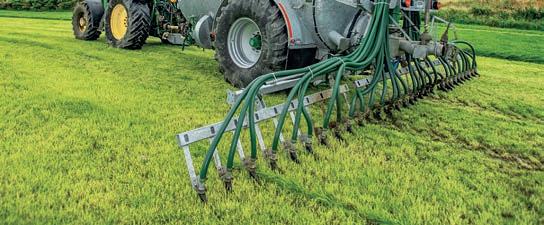
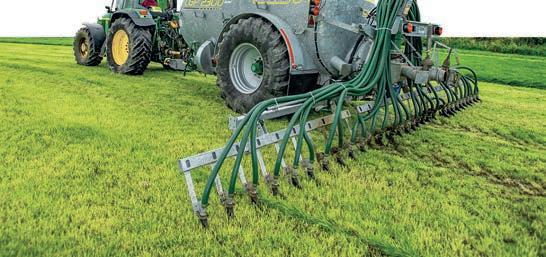
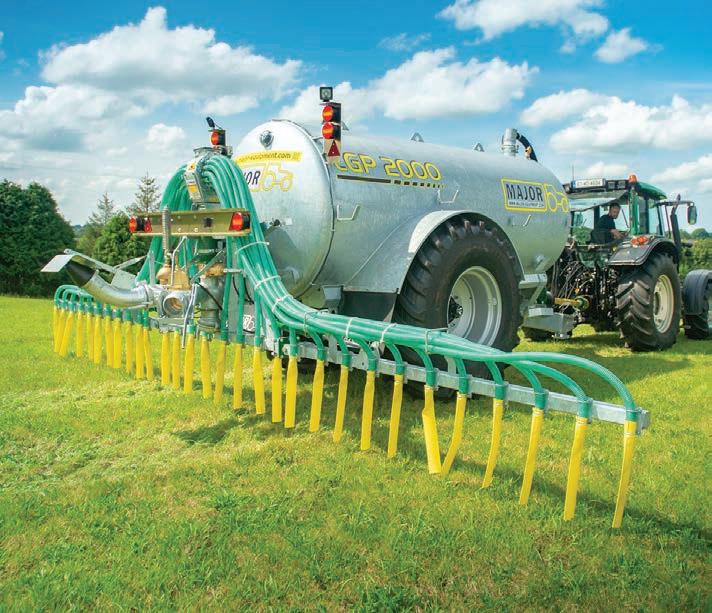
days, the crop is ready for harvesting and feeding to the cows.
“The grass responds well to the slurry applied with the trailing shoe, with minimal grass contamination and we are soon round to harvesting again,” explained Victor. “Because it applies the slurry right where it’s needed, it helps to avoid losses from both evaporation and surface run-o , which is nancially bene cial as well as being environmentally considerate.
“Using a tanker system is the most convenient approach for our operation. We reviewed the market and without doubt the Major Alpine was the most stable and steady tanker available.”
For more information, call Major Equipment or visit www.majorequipment.com. FG


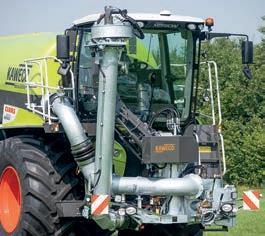
135 degrees and can dock both low and high, and the andock arm of the Front Unit is fully controllable with the Kaweco proportional joystick.
Another element of the front unit is the stone catcher with hydraulically driven cutting mechanism. Stones are caught and any feed or straw residue is cut into pieces. All this is done to preserve both the rotary lobe pump and the distributors. The stone catcher can be opened hydraulically via the Kaweco Terminal.
circulating and spreading. Kaweco says it always places this valve as short as possible on the fertiliser so that at the start of the next pass slurry is immediately available.

The Xerion Saddle Trac is equipped with a strong 462hp Mercedes engine and, because of the hydrostatic-mechanical drive, the machine has serious pulling power. 900/60R42 tyres can be mounted on the Xerion Saddle Trac, which can also be optionally equipped with a tyre in ation system. In addition, there is no track overlap due to the use of the Xerion’s Crab Steering mode, meaning the soil is spared as much as possible.
The build-on tank is made entirely of epoxy resin and has a capacity of 16,000 litres. This construction method reduces the weight, so that the e ective content can be increased. The inside of the tank is tted with four bulkheads; two in the length and two in the width. This to increase the driving comfort and to guarantee a long life span of the tank.
The Kaweco Saddle Trac is equipped as standard with a front unit. The arm has a swivel range of
A 9,000-litre/min Vogelsang rotary lobe pump is tted as standard, with a 12,000-litre/min rotary lobe pump as a option. To guarantee the capacity, the slurry route is made up of 10in suction pipes and a 10in maxi ller. The large maxi ller in the front unit ensures that the slurry is pushed towards the pump. This results in a high capacity and longer life of the rotary lobe pump due to the low underpressure. Because the slurry pump is mounted as close as possible to the fertiliser, as little slurry as possible is pumped around unnecessarily.
At the pressure side of the slurry pump, the 8in three-way valve is placed which switches between
The rotary lobe pump is driven by the power hydraulics of the Xerion. The Kaweco computer communicates directly with the CEBIS computer of the Xerion and therefore ensures an accurate automatic dispensing system. During application, the engine speed can be adjusted to the required power, resulting in lower diesel consumption. Through the Isobus, communication functions can be assigned to the Xerion’s multifunctional gear lever and Kaweco’s proportional joystick. FG





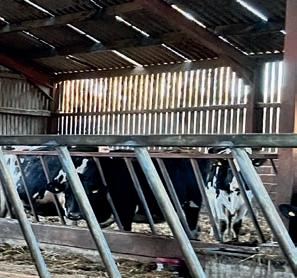
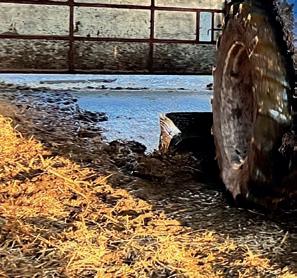
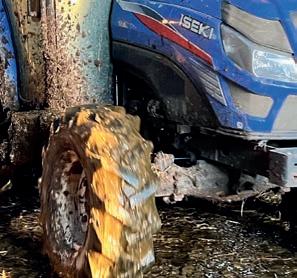














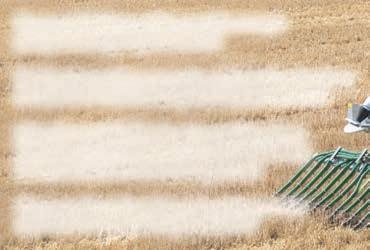
When working in dairy sheds, space can be limited and the task of muck-scraping laborious. Instead of using larger tractors, give yourself more manoeuvrability with a compact one which o ers all the power needed to clear the sheds, with the option of an air con cab for the inclement or hotter weather. With Cat 1 or 2 three-point linkage, Iseki compact tractors o er all you need in a simple easy-to-use package, the company reckons.







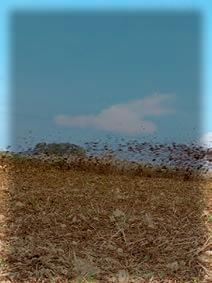



The compact Iseki TG range is ideal for negotiating around barns, and the option of IQ transmission o ers clutchless gear changes for e ortless manoeuvrability whilst muck scraping cow sheds.




HST transmission is also available should more precise control be required with manual


gears, they are quick, nimble and easy to use. Many farmers use the Iseki TG tractors purely as a muck scraper tractor, but road registration is available so a trip up the road to another farm or eld is possible without changing machines, along with a good road speed.
A moveable steering wheel and seat within the cab makes it comfortable for most drivers, with a quick change using a foot pedal keeping hands out the way. Built in Japan, Iseki products are renowned for extremely high-quality design and build, with the reliability to be unrivalled thanks to Japanese manufacturing, Iseki says.
To try an Iseki, book a demonstration with your local dealer. FG


At Joskin, things are moving in the manure spreaders range – after several months of development, the Tornado3 has just received a major upgrade. In addition to a modernised design and a return to its original name (Tornado), the manure spreader has once again retained and improved its fundamentals, the company says.
The new Tornado still has an especially low, narrow body which, combined with large diameter wheels, gives it easier traction and less pressure on the ground. However, the body has been optimised for the new model and now has a wider taper and smoother
sidewalls to make it easier to empty and clean.
A major redesign of the back of the body has also been carried out: it has been widened to increase the spreading regularity. This means that the material is delivered more evenly to the beaters, resulting in an overall improvement in performance, Joskin reckons. Another new feature is the extensive work on the hydraulic lines, which are now integrated into the body strip, away from any contact with the material. Another new feature is the design of the mudguards, which have a 45 degree inclination to prevent material from accumulating on the machine. FG


Mastek is an Ireland-based slurry application manufacturer which has made huge inroads in tanker mounted applicators over the last 12 years, building upon its original foundations in the agricultural equipment sector.

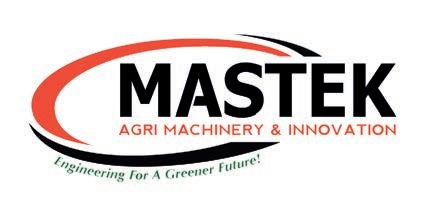
Company director Paul Quinn gave Farmers Guide an insight into an exciting new product which the company is launching at LAMMA 2023 in January.

According to Paul, the company has been working to perfect its ‘eco shoe’ as a 9.2m option. This is something Mastek has been wanting
to o er in order to satisfy customers with larger tankers.
The fold design on the eco shoe di ers from the micro shoe as it has an extra folding mechanism, meaning the 9.2m closes to a very compact unit behind the tanker. The new eco shoe has all of the company’s latest features, including an accumulator suspension system and Mastek’s own sprung arm, rubber boot and coulter set up which is the same system used on the smaller micro shoe.
Both the micro shoe and the eco feature the micro SuperCut macerator which Paul Quinn suggested as being “the most aggressive macerator chopping system on the market” thanks to Mastek’s patented serrated chopping knives.
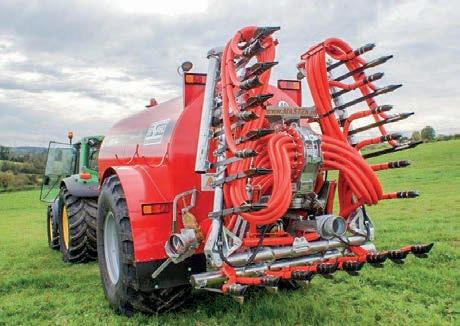



Both models also feature the company’s ‘junction box’ which has a splash plate outlet and two ll points. To see this machine up close visit Mastek at LAMMA 23. FG

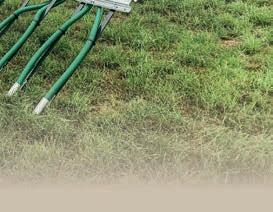





Storth Ltd has announced that it will be working alongside, and will be the sole distributor for, agricultural machinery manufacturer BeTec Engineering. Tanker trailing shoes are BeTec Engineering’s speciality, with its range varying from 9-30m.




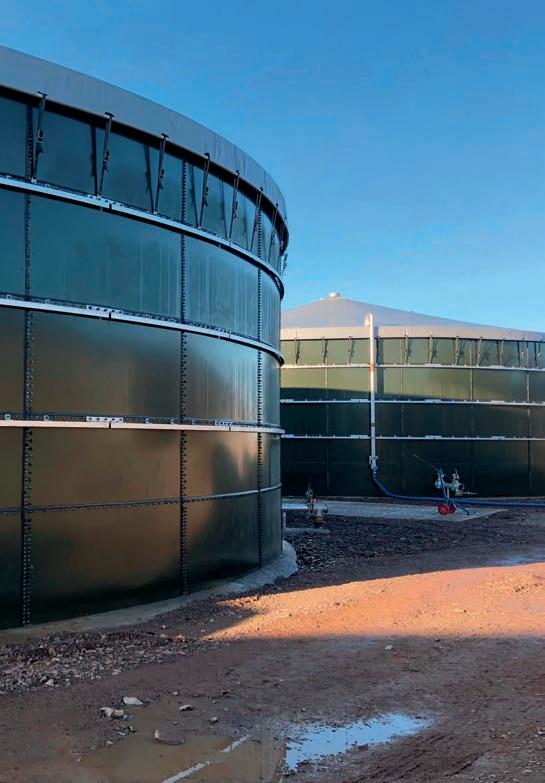

With Storth’s extensive knowledge of slurry management, coupled with BeTec’s product development, the customer will bene t with a machine that has been trialled and tested and is suitable for farmers and contractors alike, the company says.
The trailing shoe is designed for use on grassland and arable land, for applying slurry directly to the soil surface with minimum contamination to the plant leaves. This also provides a quick delivery of nutrients to the root structure of the crop.
Storth will be showcasing its new range of machinery at LAMMA in January 2023. Visitors interested in seeing the range are welcomed to stop by at the Storth stands. The company says it looks forward to seeing customers again in 2023. FG
The grant is available to help replace, build new or expand existing slurry stores to provide 6 months storage. You need to fit all grant funded stores with an impermeable cover, unless you treat your slurry as per the requirement. Extra equipment such as pumps & pipes are also covered in this grant.
You can apply for this grant from Autumn 2022
www.storthmachinery.co.uk Tel: 01524 781900


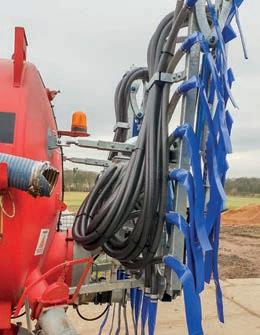

Tramspread has launched a range of tanker applicators that the company says reduce the weight stress on the rear door for safer slurry spreading.















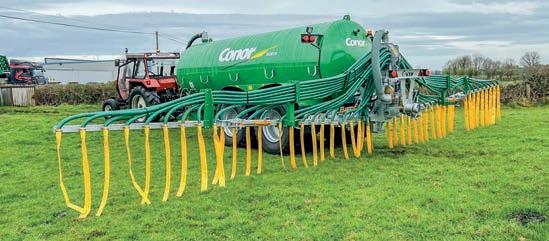
The Su olk Range of dribble bar applicators use similar technology to the company’s umbilical systems but are attached to a tanker with a unique mount method.

Terry Baker, Tramspread managing director, explains: “The clamping on tanker doors can often fail due to the stress of large booms being mounted on xings attached to the doors. To avoid environmentally costly tanker failures, Tramspread welds xing points on the rear of the tanker that the boom framework attaches to using telescopic

arms. This balances the load more safely and also makes the booms more stable.”
Using the Tramspread framework and xing method, larger booms can be tted to smaller tankers, without signi cant modi cations, to speed up application rate and improve accuracy. The design also creates additional space to enable a ow meter to be incorporated into the application system.
“Operators can apply more accurately by testing slurry and using a slurry meter. Tramspread’s Su olk
Range tanker booms can also be used with third party systems such as John Deere’s HarvestLab because the frame provides enough space to integrate the technology into the application system,” Terry says.
Su olk Range tanker booms bene t from Vogelsang ECQ macerators and are available in working widths of 6, 7, 7.5, 8, 9, 10 and 10.5m. All models feature hydraulic vertically folding booms that include auto transport latches with safety pins. FG




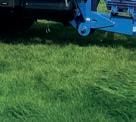
Conor Engineering manufactures high-quality slurry tanks, specialising in bespoke tanks, as well as a wide range of dribble bars and trailing shoes, and the Conor muck spreader.
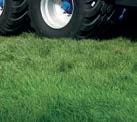
Tanks are available in sizes ranging from 1,100–5,500 gallons –and with over 200 optional extras, 32 models and 44 wheel options, Conor says it can make anything the customer requires.

Widely praised for its tandem tank design, Conor’s recessed tandem axle tank has a much lower centre of gravity than the majority of competitors, Conor claims. It’s built on a tandem suspension with parabolic springs and is extremely stable and safer at high speed and on hilly ground.
Conor o ers a wide range of
dribble bars and trailing shoes, from 6.4–18m. Its Farmpro dribble bar can be retro tted to a farmer’s existing tank, with no need for welding to the tank. Cost savings on fertiliser and the environmental bene ts of using a trailing shoe or dribble bar are well documented.
Additionally, the Conor muck spreader is “extremely durable and heavy-duty, designed with the contractor in mind”. It’s well kitted out – equipment includes a wide angle PTO and torque clutch as standard – and designed with strength and durability in mind. As standard it’s tted with 15mm Hardox tips and the base of the beater is made from 15mm plate.
For more details contact Conor Engineering directly. FG











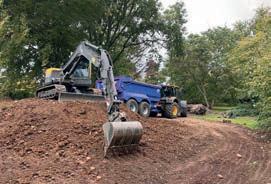

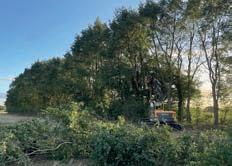
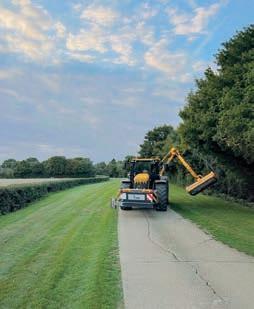

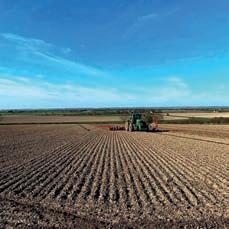
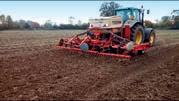


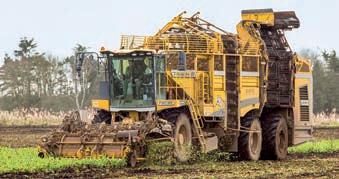



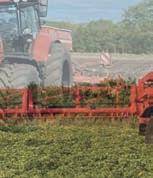




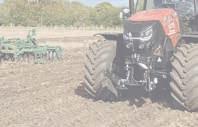




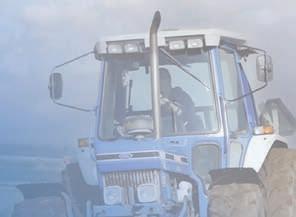

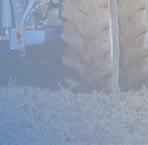





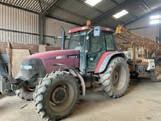

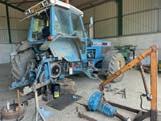

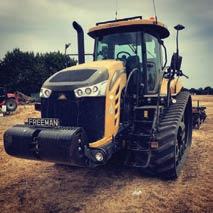



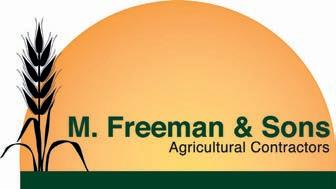











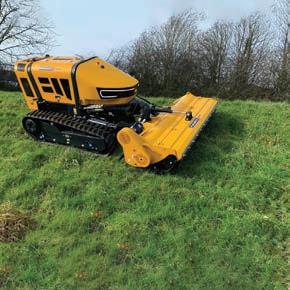


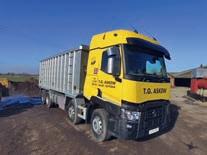















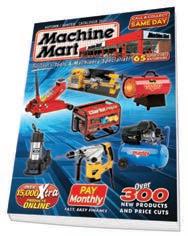



















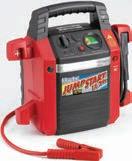
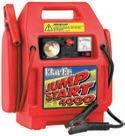












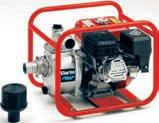




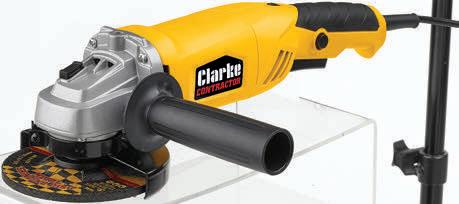




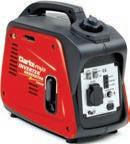











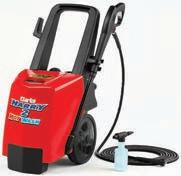





































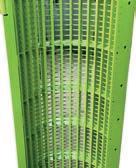





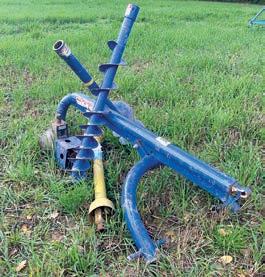



Strong demand for well-known machinery brands in good order resulted in a large attendance and some high prices at a farm machinery dispersal sale in Cranbrook, Kent in late October. David Williams reports.
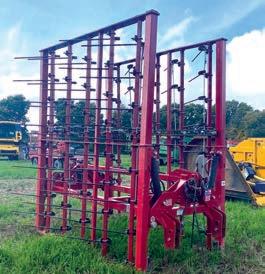
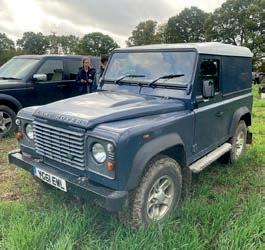


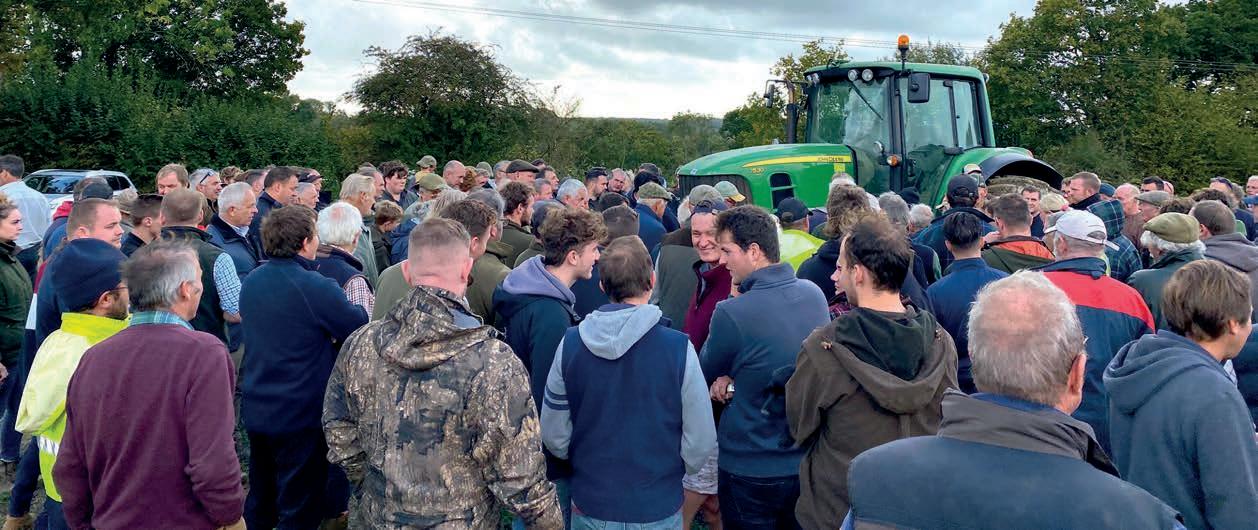
The sale at Angley Farm was arranged by land and property agents, BTF Partnership on behalf of farmers David and Sue Woodhouse – following their retirement from farming.
The family had farmed Angley Farm and rented and share-farmed additional land locally for many years, and the sale was very well supported by farmers and agricultural dealers
from the area who know the family well.

“It was a genuine dispersal sale, and those who were familiar with the farming operation knew that the machinery was well looked after and in very good condition,” explained BTF director and auctioneer Richard Thomas.
“We were delighted with the sale attendance of approximately 500
people made up of a mix of end users and trade buyers. It’s always sad when people retire from farming, but the Woodhouse family enjoyed an excellent harvest this year, and we know that they were very happy with the support at the sale.”
Weather on the sale day was dry, but heavy rain during the preceding week had created eld conditions too wet for drilling. “That worked in our favour,” continued Richard, “as farmers who would otherwise have been busy doing their own eld work were able to attend.”
The auctioneers included Richard, with Stuart Sillars and Michael Bax. Sophie Evans and Alex Cornwallis were responsible for arranging the sale. FG
This
This
This
A



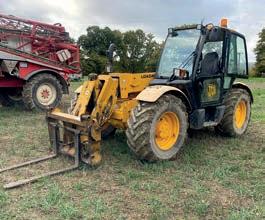






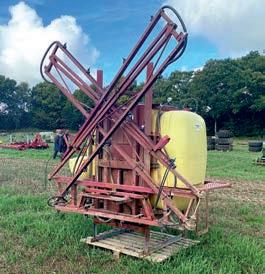

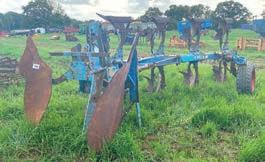



Anvils








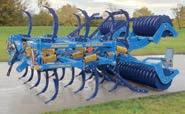

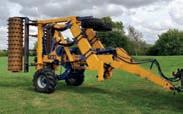


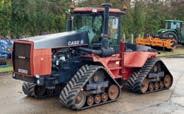

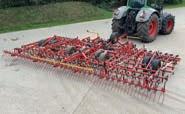
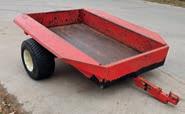
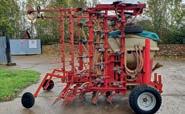



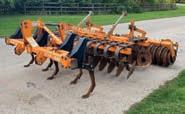

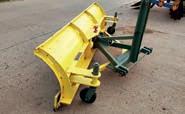

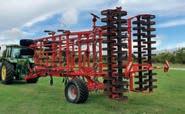


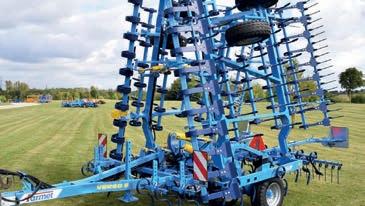
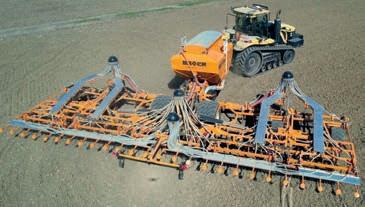







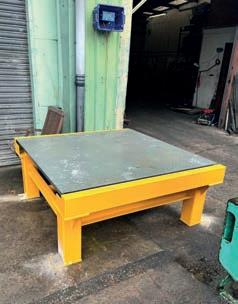


























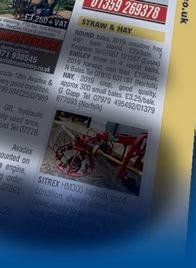

















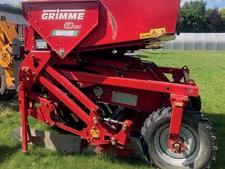



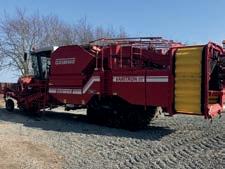





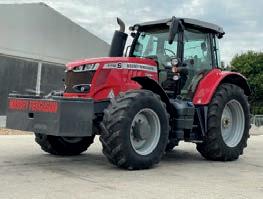


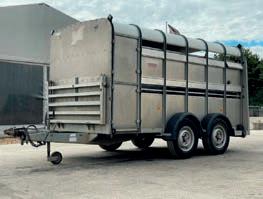

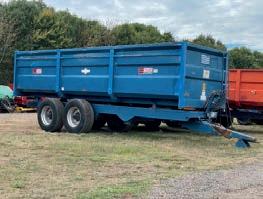
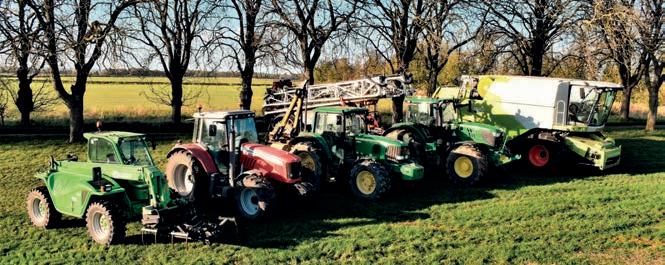

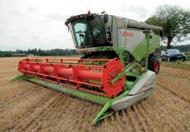


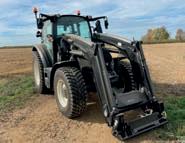
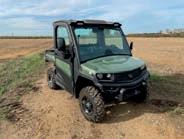
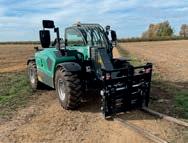






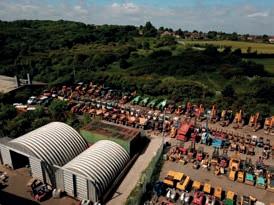


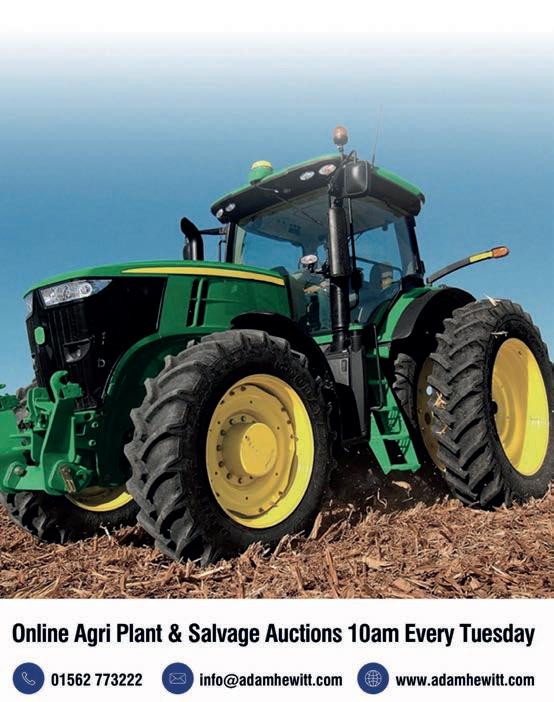



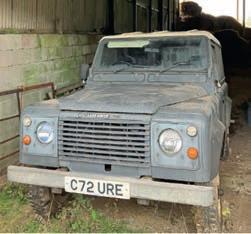
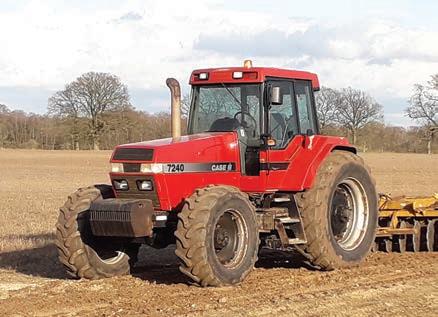



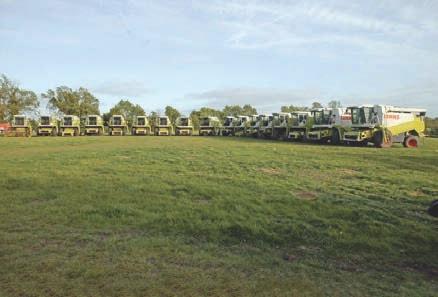
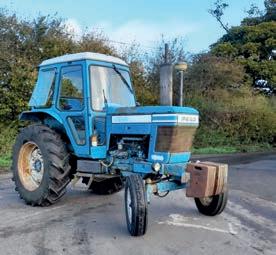










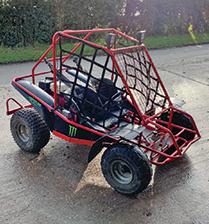


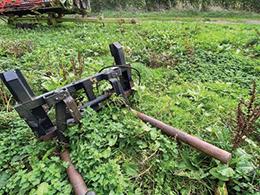

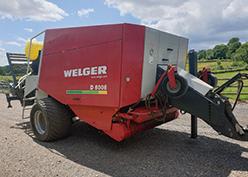



































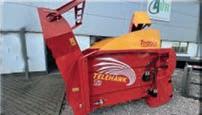



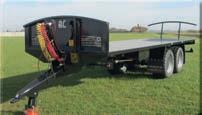
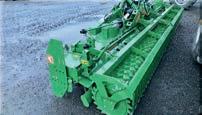



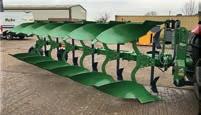


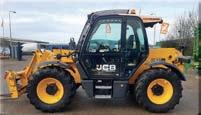




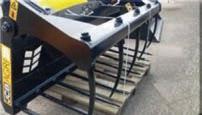








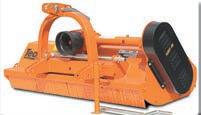







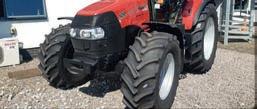

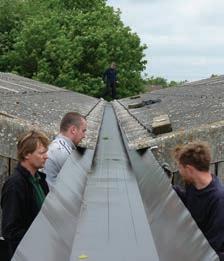















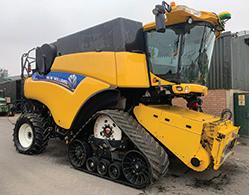








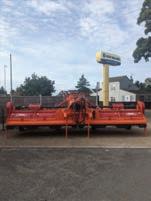





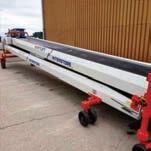




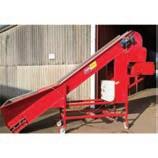
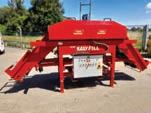

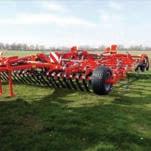

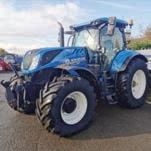



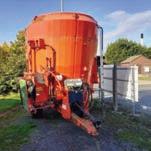
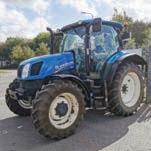
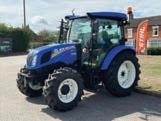
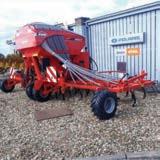






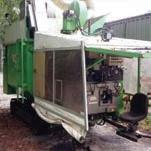

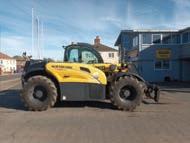




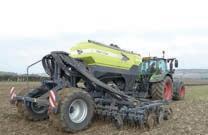









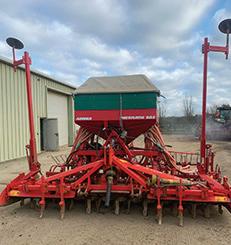




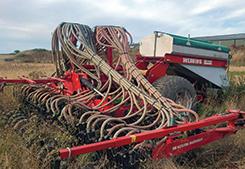










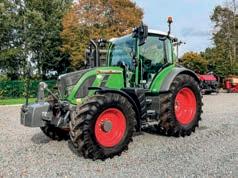

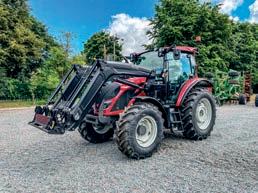




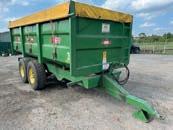
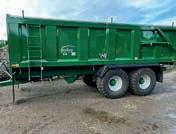














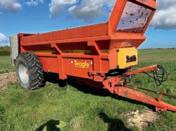
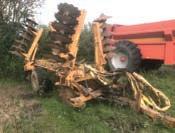


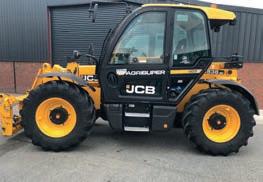

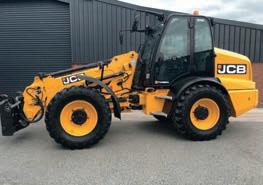
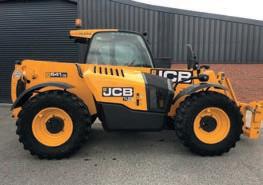





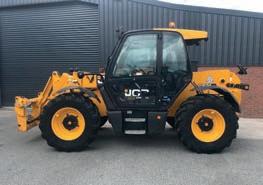


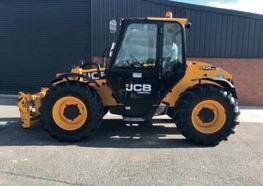



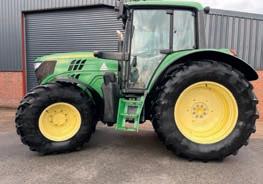






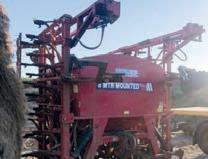
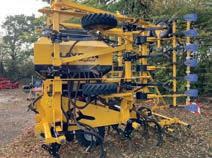


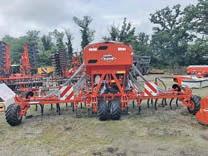








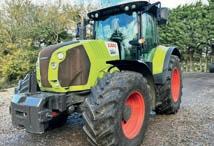

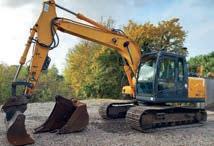





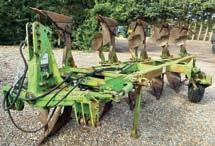


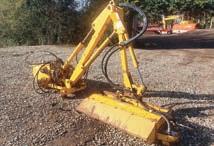


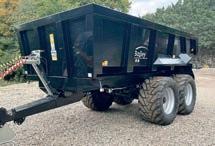


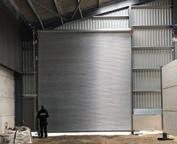







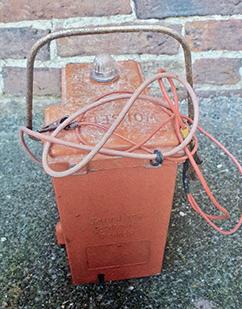
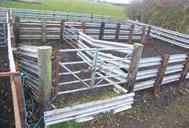
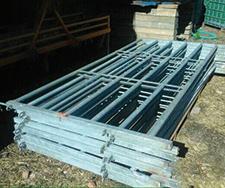
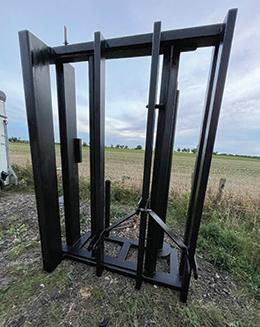


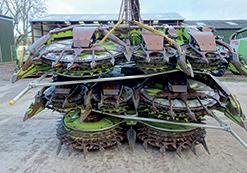

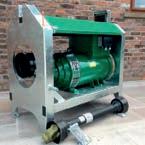
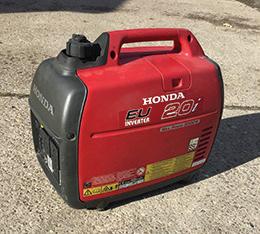



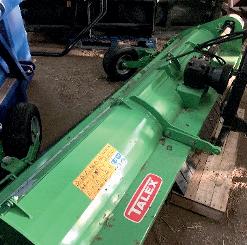
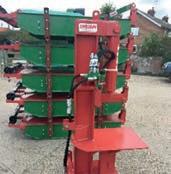







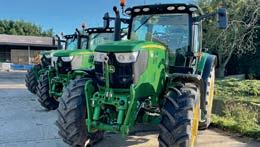
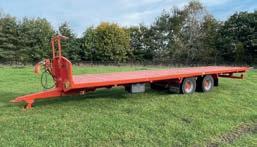
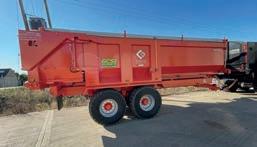
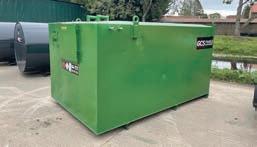
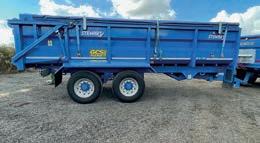





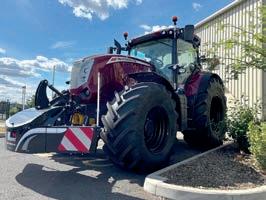
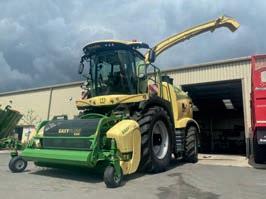
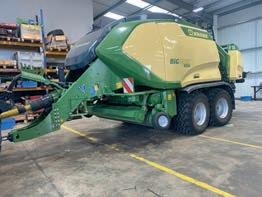
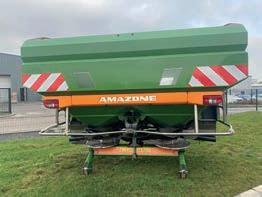





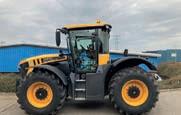
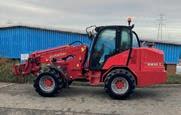
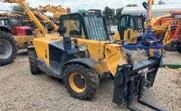
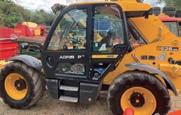

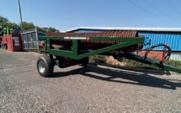
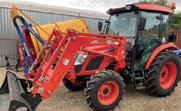

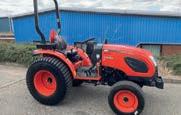





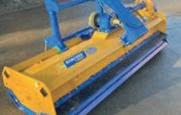


EFCO/OLEO Mac Touareg 4x4 rough cut mower, 23hp Vanguard engine, just over 18 months old, as new, will cut v thick high vegetation & has very good grip, 4wd with diff lock, hydrostatic drive, 120hrs, great saving & in excellent condition. £6,250+VAT. D Newman Tel 07973 450117 (Wiltshire)
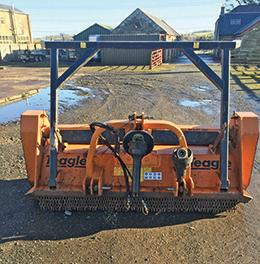







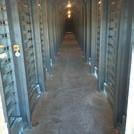







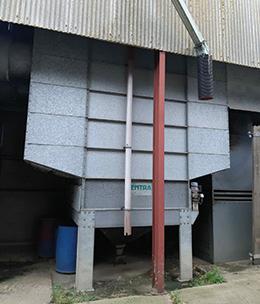

FLEMING paddock topper, good working order. £475. B Colson Tel 07789
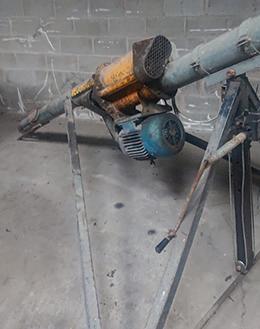
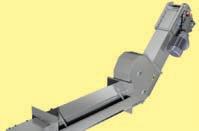
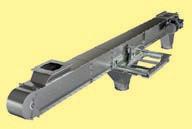
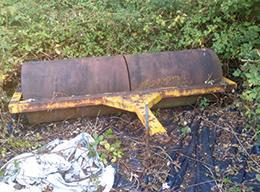

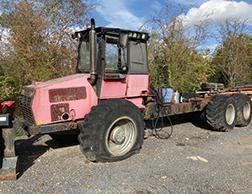


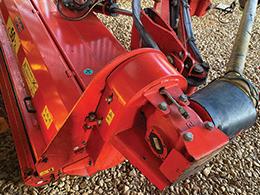
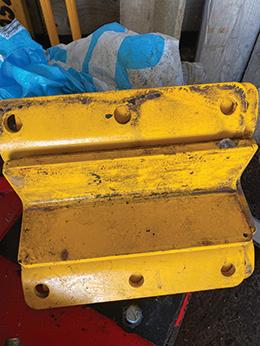
MASCHIO Girafona 230 offset flail, h/d, 2.3m, owned from new, very good condition, full float facility on head, wide angled PTO, external gearbox so will go outside tractor width, small weld repair on pivot A frame, but in v good order. £6,250+VAT. D Newman Tel 07973 450117 (Wiltshire)
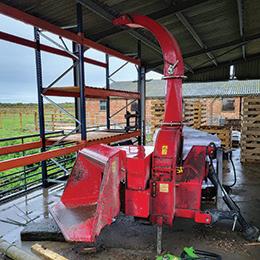
TWOSE 8' ballast roller. £700 no VAT. D Fawcett Tel 07855 126141 (Carmarthenshire)

JOHN Deere L107 auto ride on lawnmower, vgc, recent replacement Edge 42 deck (no rust), 736hrs, runs & drives like new, serviced & ready to go, one small crack repaired lower front bonnet. £1,000. J Jordan Tel 07535 990066/01986 782544 (Suffolk)

2020 Talex Eco Cut 185 twin drum mower, quick fit blades, very good condition, barn stored, selling due to upgrade. £1,600 ono. W Goodings Tel 07938 556919/07561 806818 (Norfolk)
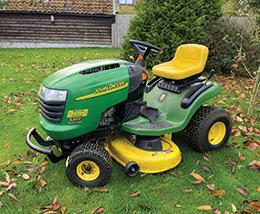
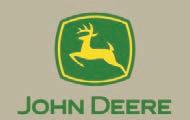




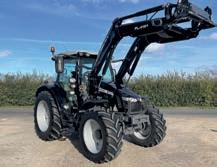



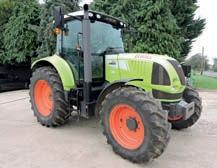


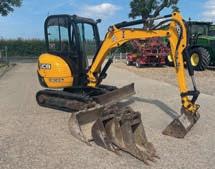



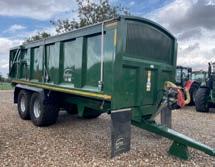



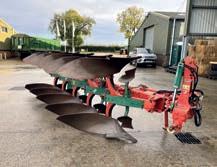




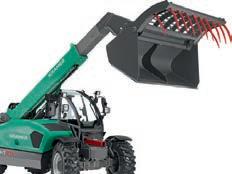




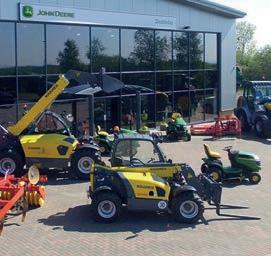



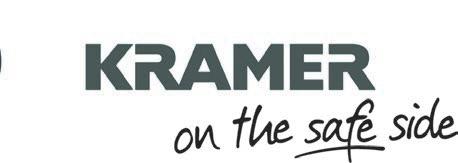




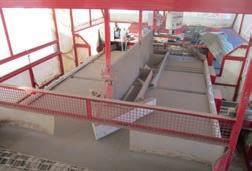



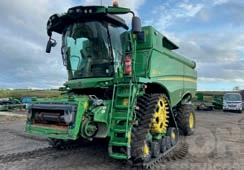
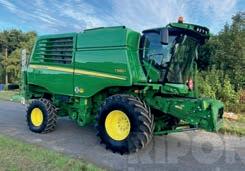
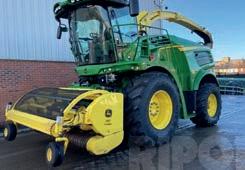

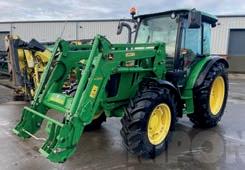



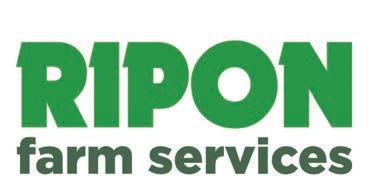
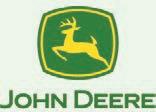


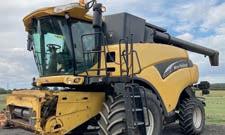

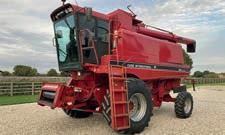
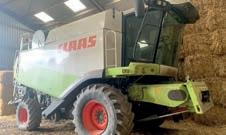


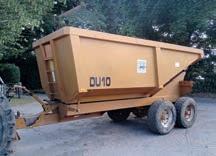









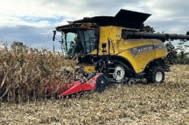


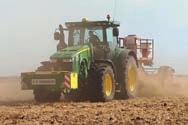

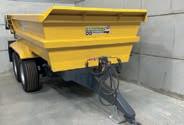
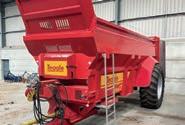



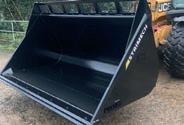




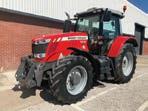

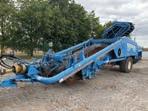


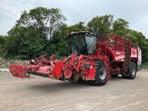

BROWNS mounted single leg mole plough, good metal, suit 40+hp tractor. £625+VAT. H Edwards Tel 01580 761009 (Kent)

HOMBURG Delta Jetter, 400m of hose, HDD wireless remote, brilliant condition. £12,500 no VAT. A Kirman Tel 07837 658152 (Lincolnshire)
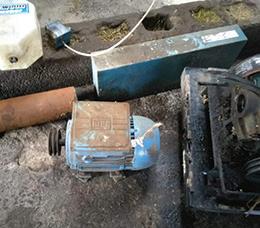
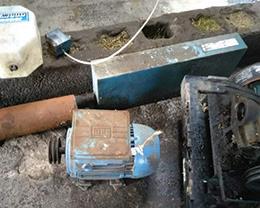


RLM Agricultural complete sprinkler irrigation system, 40kva diesel generator, floating pump, main pump, self-cleaning filter & fertigation system, 314 header pipes, 700 sprinklers large number of joiners & adapters. Offers. M Fuller Tel 07826 537652/07460 466313 (Lincolnshire)
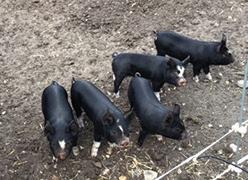

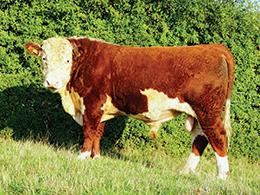
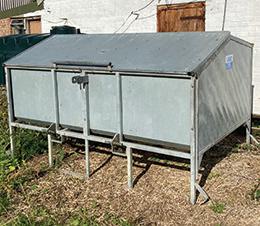
CREAM Legbar pullets, POL. £12. K Smith Tel 07940 049960/01335 330346 (Derbyshire)

EXCHEQUER
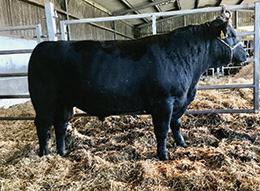



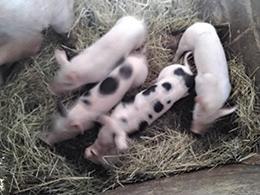

WILTSHIRE Horn 3yr old pedigree tup, Staddlebridge Norman, out of Manor Harbury from GGS Boxes Joe & Lawford Zula, proven sire, lambing percentage 195% last year with no triplets & no lamb mortality after first day, produces good strong lambs. £180. M Martin Tel 01434 230982 (Northumberland)




HEXHAMSHIRE Horn tup lambs/starter group, new breed developed for low input management smallholder & rewildling, shed – no shearing, lamb reliably, excellent mothers & produce high quality meat, 3 ewes & unrelated tup £450. Coloured tup lambs £150. M Martin Tel 01434 230982 (Northumberland)
PYGMY goat, handsome pedigree proven billy, just got our nannies in kid, vaccinated in spring, feet trimmed in June, negative
FIVE
PEDIGREE
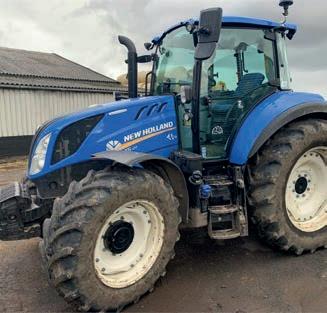



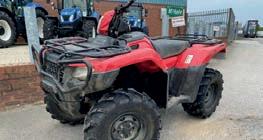


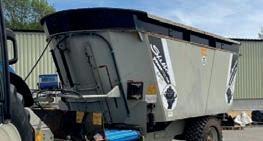



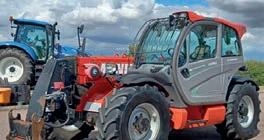
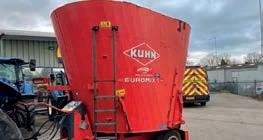
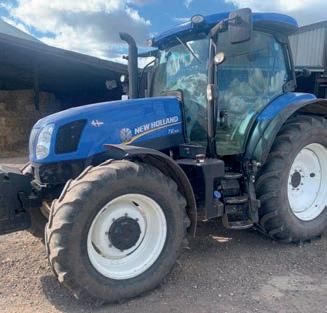
MASSEY Ferguson 40










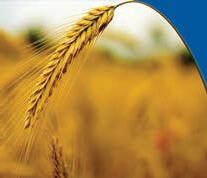






















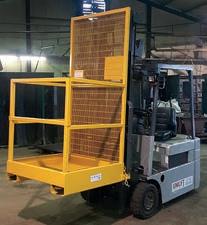

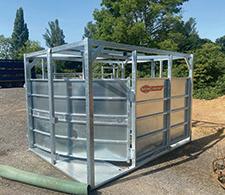
for MF165/185, c/w brackets & bucket. £270. R Parker Tel 07973 297404 (Derbyshire)



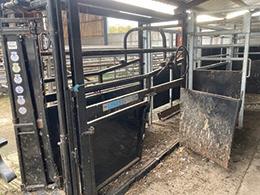

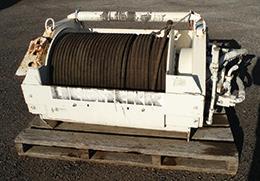

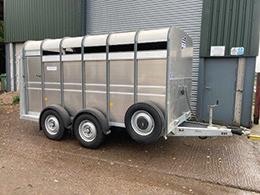


MASSEY Ferguson 35 Trip loader for MF135/35, bucket & fork. £250. R Parker Tel 07973 297404 (Derbyshire)
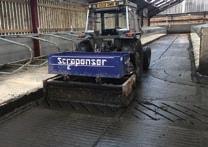



CHERRY 10' push-off buckrake, Hardox tines, as new condition, Volvo fittings. £4,250. R Parker Tel 07973 297404 (Derbyshire)
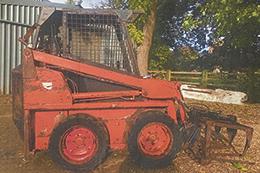
MANITOU 737-130PS+, 129hp, 2020, 2650hrs, on warranty until May or 3000hrs, full service history, excellent condition. £64,500+VAT. J Rogers Tel 07717 408818 (Buckinghamshire)









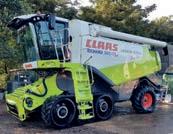


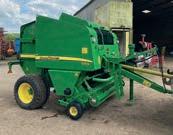
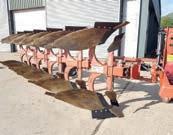
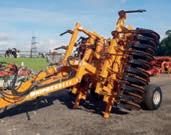
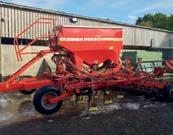

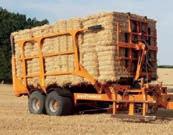




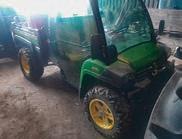

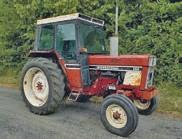
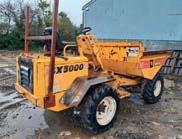



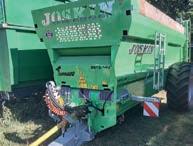

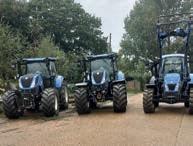


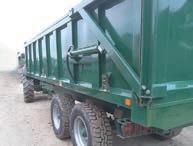
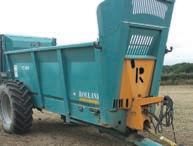

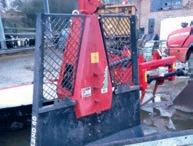

CLIMAX ToughTerrain forklift truck, OPU 113V, 1980, 5200hrs, c/w driver's handbook & V5, used for regular light work for over 20yrs by current owner, average condition. £4,750 ono. C Richmond Tel 01223 263052 (Cambridgeshire)

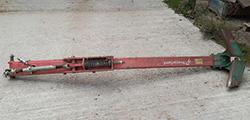

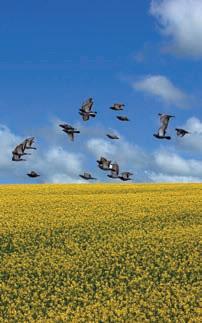


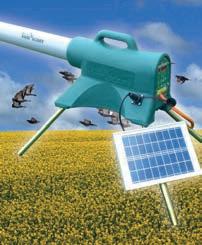







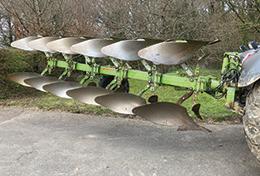
SANDERSON 3rd service switchgear from joystick on 623 teleporter, used but serviceable. £50+P&P. P Rivett Tel 07785 767953 (Norfolk)

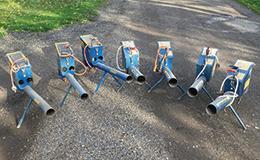
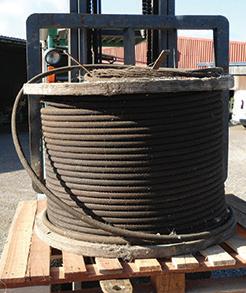



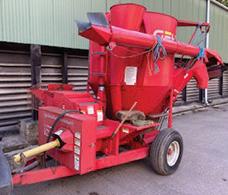
CONVERTED to PTO driven roller & grind mill, new brass shells fitted, very sturdy, on under frame with 4 cast iron wheels, c/w 3 sets of grist discs. Offers. H Edwards Tel 01580 761009 (Kent)



MURSKA 700 roller mill, c/w 3 phase electric drive, as well as PTO drive, new fluted rollers & bearings 2yrs ago, in very good condition. £11,000+VAT ono. J Cantrill Tel 07779 577027 (Shropshire)
FRASER M9 roller/bruiser mill & mix, free standing, 9" high output rollers, with Fraser M100 1t mixer, c/w bulk hopper on top & molasses additive unit, excellent working order; also available (but not included) fill augers & 40t bin. £1,950+VAT ono. J Massie Tel 07973 482993 (Derbyshire)
JOHN DEERE 8400R 400 2019 2950
71083182

E23, 50K, ILS, HCS, fr link/PTO, air/hyd brakes, 5ESCV, air con, air seat, 4600 screen, AutoTrac Ready, £189,950 51063462
JOHN DEERE 8R370 370 2021 1670 Signature, AutoPowr, 50K, CommandPro, ILS, HCS, A/C, 4600 screen, air seat, air/hyd brakes, 5ESCV, CAT 4 £255,000 31068790
JOHN DEERE 7310R 310 2019 2460
Ultimate edition, AutoPowr, 50K, TLS, HCS, AutoTrac ready, activations, A/C, air seat, 5ESCV, front linkage + £148,950 71081939
JOHN DEERE 7310R 310 2016 5125
AutoPowr, 50K, TLS, HCS, AutoTrac ready, activation, 4ESCV, front linkage w/SCV, 85cc hyd pump, fridge, £102,950 41083326
JOHN DEERE 7310R 310 2018 2332 AutoPowr, 50K, TLS, HCS, Auto Trac ready, A/C, air seat, 5ESVC, front links + PTO W/2ESCV, hyd top link, £149,950 11083704
JOHN DEERE 7310R 310 2019 1270 E23 50K, TLS, HCS, 5ESCV, hyd/air brakes, PUH, A/C, air seat, fr link/PTO, 710/75R42, 620/75R30, AutoTrac £164,950 71076215
JOHN DEERE 7290R 290 2015 6976
AutoPowr, 50K, AutoTrac ready (no activations), 4ESCV, 3sp PTO, TLS, HCS, A/C, air seat, front linkage £72,950 11080747
JOHN DEERE 7290R 290 2014 7164 AutoPowr, 50K, TLS, 600/70R30.710/70R42, PUH, active seat, premium radio, 4100 processor, 7inch £69,950 11075676
JOHN DEERE 7290R 290 2016 4954 AutoPowr, 50K, TLS, HCS, 3sp PTO, 4600 screen, AutoTrac ready, activation, 710/70R42, 600/70R30, LED £94,950 11072332
JOHN DEERE 6250R 250 2020 2490 Ultimate Edition, AutoPowr CommandPro, 50K, TLS, HCS, A/C, ultimate seat, AutoTrac ready, activations, £134,750 31076389
JOHN DEERE 6250R 250 2018 3670
AutoPowr CommandPro, 50K, TLS, HCS, Ultimate Edition, AutoTrac ready, activations, 160L/min pump, £114,950 11075405 JOHN DEERE 6250R 250 2019 4675 Ultimate Edition, AutoPowr CommandPro, 50K, TLS, HCS, AutoTrac ready, activations, A/C, air seat, £112,750 11075406 JOHN DEERE 6250R 250 2019 5410 AutoPowr CommandPro, 50K, TLS, HCS, AutoTrac ready, Activations, Ultimate Edition, 160L/min pump, £107,500 51081275 JOHN DEERE 6250R 250 2020 2012 AutoPowr CommandPro, 50K, TLS, HCS, AutoTrac ready, A/C, air seat, 160L/min pump, 4ESCV, Front linkage £134,750 41079385 JOHN DEERE 6250R 250 2018 5108 Ultimate, AutoPowr, 50K, TLS, HCS, fr link/PTO, 650/85R38 600/70R30, A/C, air seat, AutoTrac Ready, £99,950 11082874 JOHN DEERE 6250R 250 2021 1083 Ultimate, AutoPowr, 50K, CommandPro, TLS, HCS, 4600 screen, 600/65R28 650/65R42, AutoTrac Ready, £149,950 51083457 JOHN DEERE 6215R 215 2021 594 Ultimate Edition, AutoPowr CommandPro, 50K, TLS, HCS, AutoTrac ready, air seat, A/C, 155L/min hydraulic £147,950 11065818
JOHN DEERE 6215R 215 2021 1375 AutoPowr, 50K, TLS, HCS, AutoTrac Complete, SF6000 receiver, A/C, air seat, 4ESCV, PUH, aur/hyd brakes, £129,950 31081139 JOHN DEERE 6215R 215 2021 960 AutoPowr, 50K, TLS, HCS, 4600 screen, activation (no dome), 4ESCV, air/hyd brakes, AutoTrac ready, PUH, £136,750 11076708 JOHN DEERE 6215R 215 2020 1245 AutoPowr, 50K, TLS, HCS, air seat, A/C, AutoTrac ready with activations, PUH, air/hyd brakes, front linkage, £119,950 41072657
JOHN DEERE 6215R 215 2019 4890 AutoPowr, 50K, Premium Edition, AutoTrac ready, Activation, 155L/min pump, 4ESCV, TLS, HCS, premium £89,950 11075671 JOHN DEERE 6215R 215 2019 4670 AutoPowr, 50K, TLS, HCS, AutoTrac ready, activations, front linkage + PTO W/SCV, 4ESCV, PUH, air/hyd £94,950 71073737 JOHN DEERE 6215R 215 2018 2730 AutoPowr, 50K, Ultimate edition, TLS, HCS, A/C, air seat, AutoTrac ready, Activations, 4ESCV, PUH, air/hyd £101,950 11076567 JOHN DEERE 6215R 215 2019 2588 AutoPowr, 50K, TLS, HCS, 710/70R42 600/65R28, AutoTrac Ready, activation (no dome) A/C, 4ESCV, 155ltr £109,950 31073728
JOHN DEERE 6215R 215 2017 6117 AutoPowr, 50K, TLS, HCS, AutoTrac ready, activations, 155L/min pump, 4ESCV, PUH, air/hyd brakes, air £76,950 51083783 JOHN DEERE 6215R 215 2017 5305 AutoPowr, 50K, TLS, HCS, AutoTrac Ready, air seat, A/C, PUH, 4ESCV, 155L/min pump, front links + PTO £84,750 11070688
JOHN DEERE 6215R 215 2016 6510 DirectDrive, 50K, TLS, HCS, AutoTrac ready, basic activation, A/C, air seat, front linkage+PTO w/SCV, 4ESCV, £72,950 41080168
JOHN DEERE 6215R 215 2018 6831 AutoPowr, 50K, CommandPro, TLS, HCS, 710/70R42 600/70R28, AutoTrac Read, Activation, fr link/PTO, £82,750 11083165
JOHN DEERE 6215R 215 2018 5830 AutoPowr, 50K, Ultimate edition, AutoTrac ready, activations, TLS, HCS, A/C, air seat, front linkage+PTO £76,950 41081220 JOHN DEERE 6215R 215 2018 4872 AutoPowr,50K, Ultimate edition, AutoTrac ready, activations, TLS, HCS, air seat, A/C, PUH, 4ESCV, 155L/min £89,950 41078599
JOHN DEERE 6210R 210 2014 6430 AutoPowr, 50K, TLS, HCS, AutoTrac complete, SF3000 receiver, front linkage+PTO W/SCV, PUH, air/hyd £61,750 11080307 JOHN DEERE 6210R 210 2014 5125 DirectDrive, 50K, TLS, HCS, AutoTrac ready, 4ESCV, PUH, air/hyd brakes, front linkage, pass seat, turnable £69,950 71078432 JOHN DEERE 6195R 195 2015 4680 AutoPowr, 50K, TLS, HCS, AutoTrac ready, activations, 4ESCV, PUH, air/hyd brakes, 650/75R38 600/65R28, £79,950 71073250 JOHN DEERE 6195R 195 2016 7310 AutoPowr, 50K, TLS, HCS, Premium edition, ISOBUS/Greenstar ready, air seat, A/C, 3ESCV, PUH, air/hyd £66,950 11082007 JOHN DEERE 6195R 195 2019 4991 AutoPowr, 50K, AutoTrac ready, activations, TLS, HCS, air seat, A/C, 155L/min pump, 4ESCV, front linkage £87,950 11081897
JOHN DEERE 6195R 195 2015 6758 DirectDrive, 50K, TLS, HCS, 4ESCV, air/hyd brakes, A/C, air seat, AutoTrac ready, Activation (no dome) £64,950 31065929 JOHN DEERE 6195R 195 2021 1359 AutoPowr, 50K, TLS, HCS, AutoTrac Ready, Activation, (no dome) air/hyd brakes, front linkage, 3ESCV, ABS, £127,950 11083164
JOHN DEERE 6190R 190 2014 8208 AutoPowr, 50K, TLS, HCS, A/C, air seat, AutoTrac ready, 155L/min pump, 4ESCV, front linkage+PTO, PUH, £49,950 71065927
JOHN DEERE 6175R 175 2021 1295 AutoPowr, 50K, Premium edition, AutoTrac Complete, SF6000 receiver, TLS, HCS, A/C, air seat, 3ESCV, PUH, £114,950 41081784
JOHN DEERE 6175R 175 2016 3493 DirectDrive, 50K, TLS, HCS, Auto Trac ready, A/C, air seat, 3ESCV, air/hyd brakes, 600/65R28 650/75R38 £75,750 41083441 JOHN DEERE 6170R 170 2012 6615 AutoQuad Plus, 50K, TLS, HCS, air seat, A/C, 3SCV, AutoTrac ready, PUH, air/hyd brakes, 540/65R30 £54,950 51082324
JOHN DEERE 6930 160 2010 9007 Premium, PowrQuad, 40K, TLS, 600/65R38 480/65R28, A/C, air seat, hyd brakes, 3SCV £38,750 51071287 JOHN DEERE 6930 160 2012 8156 Premium, AutoQuad, 40K, TLS, A/C, air seat, 3SCV, 650/65R38 540/65R28, hyd brakes, Quicke Q78 loader, £46,950 51076897 JOHN DEERE 6930 160 2011 8157 Premium, AutoQuad, 50K, air seat, A/C, MFWD axle, TLS, HCS, 4ESVC, AutoTrac ready, air/hyd brakes, PUH, £46,950 41079417 JOHN DEERE 6930 160 2011 8310 Premium, AutoPowr, 50K, TLS, HCS, 3ESCV, air seat, A/C, air/hyd brakes, PUH, fr linkage + PTO w/SCV, £44,950 31065836 JOHN DEERE 6155R 155 2021 2287
AutoPowr, Premium Edition, 50K, TLS, HCS, air seat, A/C, 155L/min hyd pump, AutoTrac ready, 3ESCV, PUH, £99,950 41065837 JOHN DEERE 6155R 155 2021 2573
AutoPowr CommandPro, Premium Edition, 50K, TLS, HCS, air seat, A/C, 155L/min hyd pump, AutoTrac £99,950 31079191 JOHN DEERE 6155R 155 2018 3738 AutoQuad Plus, 50K, TLS, HCS, 3ESCV, A/C, air seat, front linkage+PTO W/SCV, PUH, air/hyd brakes, 643R £93,750 11079208 JOHN DEERE 6155R 155 2016 7670 AutoPowr, 50K, TLS, HCS, 4ESCV, air/hyd brakes, 114ltr pump, 650/65R42 540/65R30, 4600 screen, £61,750 11079834 JOHN DEERE 6155R 155 2020 3157 AutoPowr CommandPro, Ultimate edition, 50K, TLS, HCS, A/C, air seat, AutoTrac ready, activations, 3ESCV, £93,950 51078447 JOHN DEERE 6155R 155 2017 4660 AutoQuad, 50K, TLS, HCS, fr linkage, 650/65R38 540/65R28, air/hyd brakes, AutoTrac Ready, 3SCV, A/C, air £72,950 31064742 JOHN DEERE 6155R 155 2019 2100 AutoQuad, 50K, TLS, HCS, 650/65R38, 540/65R28, GreenStar/ISOBUS Ready, 3ESCV, fr link/PTO, A/C, air £79,950 11064638
JOHN DEERE 6155R 155 2016 3526 DirectDrive, 50K, TLS, HCS, 3ESCV, air/hyd brakes, 540/65R28, 650/65R38, 4600 screen, PUH, A/C, air seat, £59,950 31070444 JOHN DEERE 6155R 155 2018 4483 Premium, AutoPowr, 50K, TLS, HCS, 114ltr pump, 3ESCV, air/hyd pump, 650/65R42, 540/65R30, A/C, air £86,750 41076661
JOHN DEERE 6155R 155 2018 2454 AutoPowr, 50K, TLS, HCS, air/hyd brakes, 650/65R42 540/65R30, AutoTrac complete, 6000 dome, £93,500 51073244
JOHN DEERE 6155R 155 2019 3260 DirectDrive, 50K, Premium edition, TLS, HCS, A/C, air seat, 155l/min pump, 3ESCV, PUH, air/hyd brakes, mid £74,950 51073246
JOHN DEERE 6155R 155 2019 4535 DirectDrive, 50K, Premium Edition, HCS, TLS, air seat, A/C, front linkage+PTO w/SCV, 3ESCV, PUH, air/hyd £76,950 51075180
JOHN DEERE 6155R 155 2019 3063 AutoQuad, 50K, TLS, HCS, air/hyd brakes, 650/65R38 540/65R30, 3ESCV, ISOBUS/GreenStar Ready, 4200 £79,950 51075173
JOHN DEERE 6155R 155 2019 3494 DirectDrive, 50K, TLS, HCS, air/hyd brakes, 520/85R38 420/85R30, 4200 screen, fr linkage, 3ESCV, AutoTrac £79,950 11075669 JOHN DEERE 6155R 155 2018 5920 AutoQuad Plus, 50K, TLS, HCS, AutoTrac ready (no activations), A/C, air seat, 4100 screen, 3SCV, PUH, £62,950 41080363 JOHN DEERE 6155R 155 2018 5808 AutoQuad, 50K, TLS, HCS, air/hyd brakes, 540/65R30 650/65R42, AutoTrac Ready, 3SCV, pass seat, A/C, air £63,950 11080179
JOHN DEERE 6155R 155 2016 5680 AutoPowr, 50K, TLS, HCS, 114ltr pump, 4ESCV, 4600 screen, AutoTrac Ready, (no dome/activation) air/hyd £69,950 11079208
JOHN DEERE 6155R 155 2016 7670 AutoPowr, 50K, TLS, HCS, 4ESCV, air/hyd brakes, 114ltr pump, 650/65R42 540/65R30, 4600 screen, £61,750 11079552
AutoPowr, 50K, TLS, HCS, AutoTrac ready, activations, A/C, air seat, fridge, 4ESCV, PUH, air/hyd brakes, £109,950 71073249
JOHN DEERE 6155R 155 2021 673
JOHN DEERE 6155R 155 2016 6850 AutoPowr, 50K, TLS, HCS, A/C, air seat, 3ESCV, PUH, air/hyd brakes, front linkage + PTO w/SCV, 663R £72,950

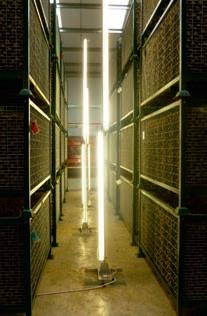









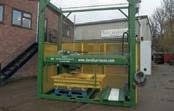

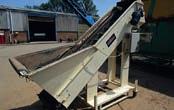
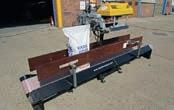


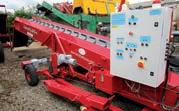
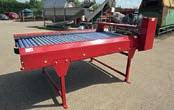








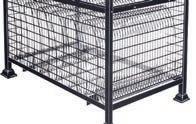

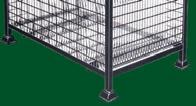






























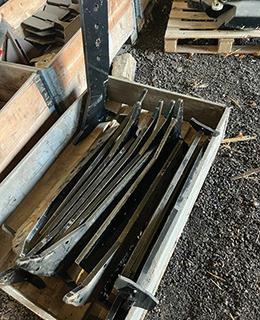
Introducing the next Generation of BIGAB we do so proud and humble of our fantastic history with more than 8 000 hook lift trailers at market worldwide. At the same time, we are now turning a leaf when we introduce the rst model in a new Generation of many to come. With re ned functions, ingenious solutions and user-friendly details we present the future of hook lifts.
Longer loading area – For excellent use of containers up to 6.5 meters.
15 % faster than its predecessor 20–24. Add a “regenerative system” and you will increase the speed with an additional 30%, during hook exchange of empty containers.
Tipping angle of up to 58 degrees – The trailer has a tipping angle of up to 55-58 degrees, depending on whether it’s equipped with a hydraulic suspended drawbar or not.

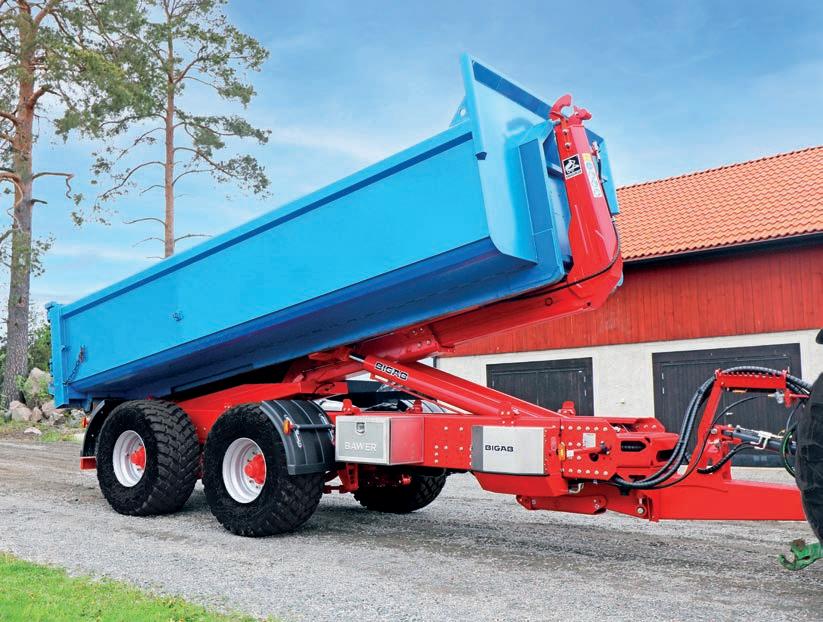
Easier to manoeuvre – Even though a longer loading area, the chassis is in fact shorter.


Bolted frame – Makes the exchange of parts or the adding on of new accessories simpler and less expensive throughout the life cycle of your trailer
Great price - All of this and more, basically for the same price as its predecessor BIGAB 20–24. That´s what we here at Fors MW call development.
Read more about some of them at our webpage: forsmw.com
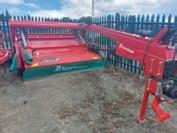

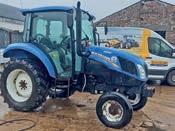
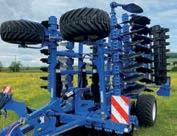





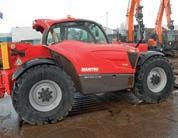



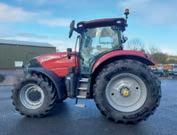
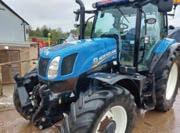

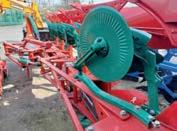







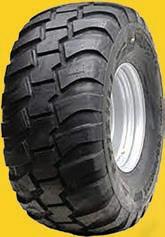


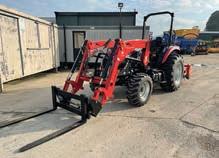
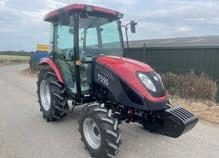

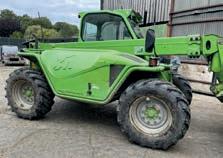


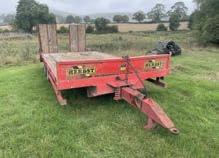


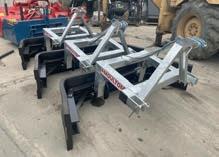
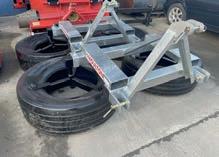



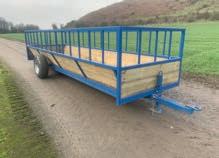

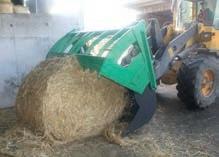
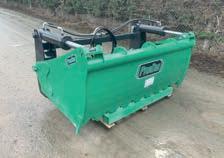

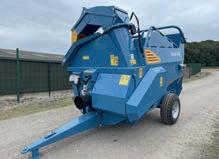
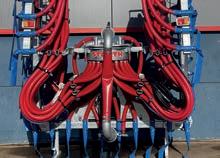
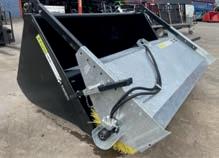
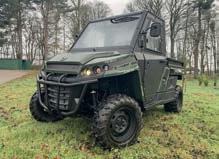
15 section boom control, excellent cond. £100,000+VAT ono. T Ireland Tel 07976 890191 (Lincolnshire)
















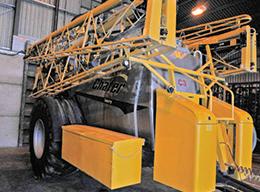


2011 Sands Vision 4.0E, 4000L, 30m, Agleader GPS auto shut off, Michelin 600/60R28, BKT 380/85R30, 400L/ min pump. J Williams Tel 07729 826451 (East Yorkshire)
2018 McConnel A280 Agribuggy 24m variable geometry,
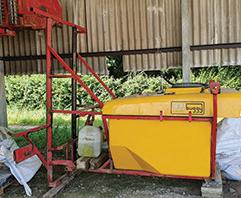
BATEMAN RB16, 2001, 3000L tank, 24m contour boom, rowcrops & low ground pressure tyres, high hrs, but all good, only ever been used on cereals & arable crops (no veg or potatoes), owner driven, a very reliable machine. £21,000. J Johnson Tel 07840 215098/01767 654137 (Cambridgeshire)


HARDI Commander 3200i, 24m, 9 GPS controlled sections, auto fill, auto wash, MOT till 11/5/23, ready to go straight to work. £12,500+VAT. D Treharne Tel 07719 697466 (Northants)




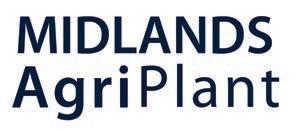

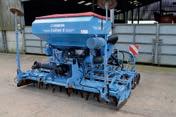



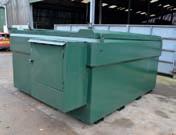

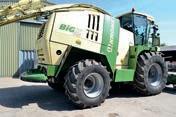

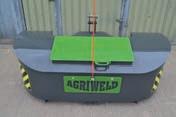


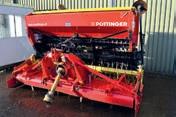
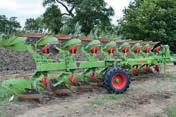



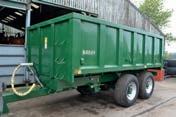

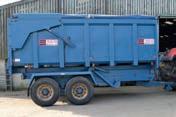



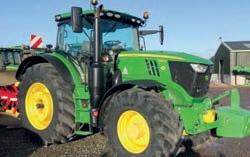


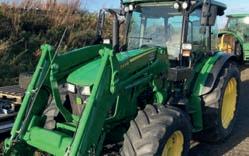











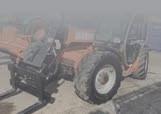






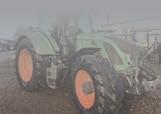

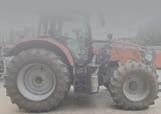




















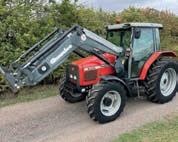


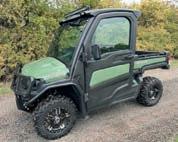

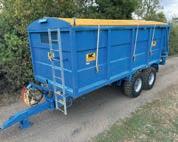
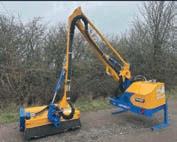

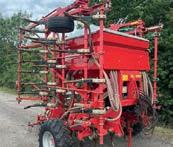


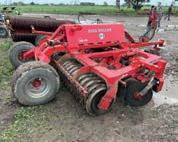

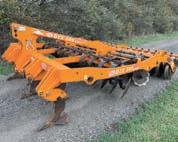
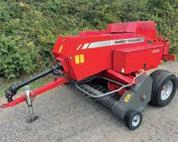

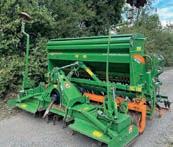

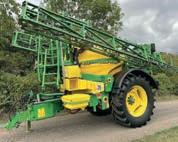
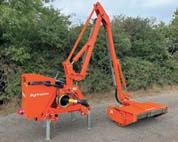




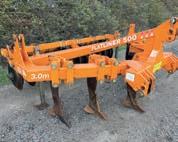






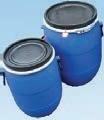
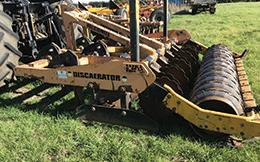




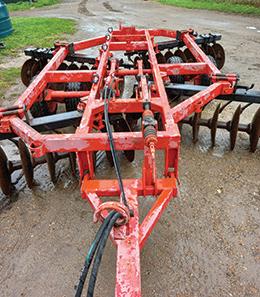
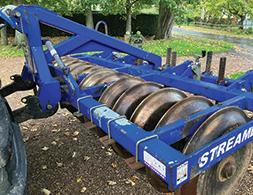






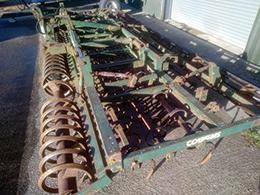





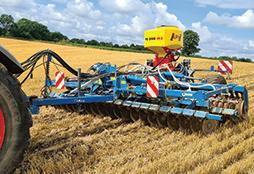


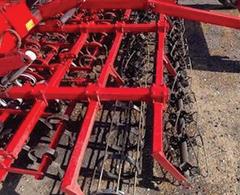


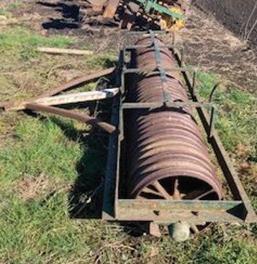






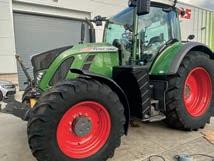

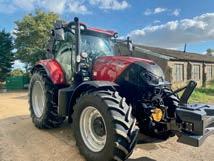




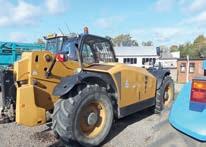

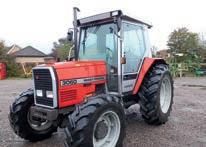










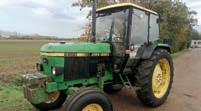
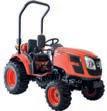
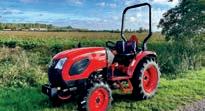
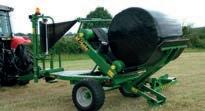

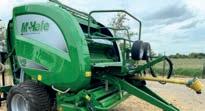



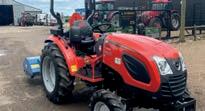
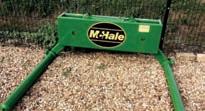




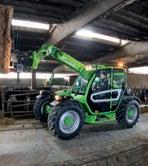




Väderstad


He-Va Stealth 3m low Disturbance Subsoiler
Köckerling All Rounder 6m



Köckerling Allrounder Cultivator 7.5m Köckerling Vario 4.8m Cultivator






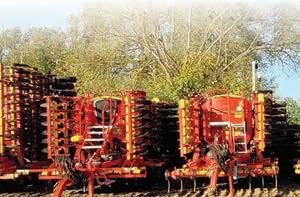

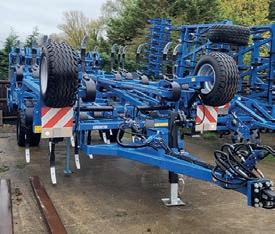
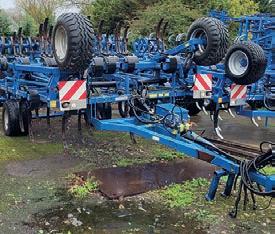
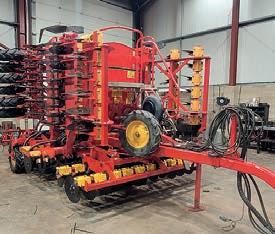
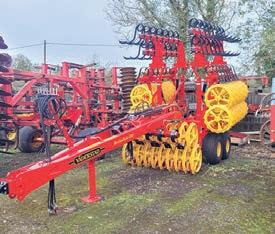




Köckerling Vario 4.8m Cultivator
Köckerling Vario 5.7m Cultivator

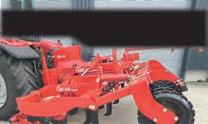

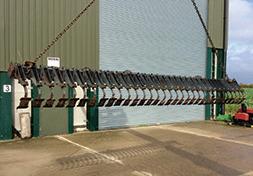



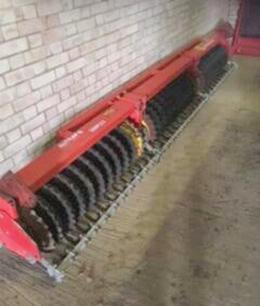
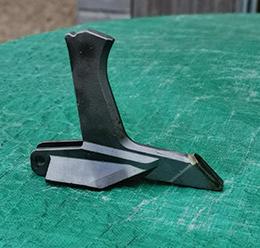






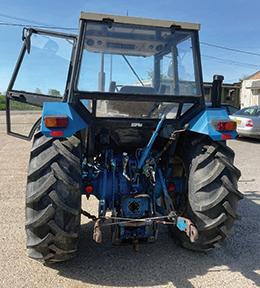
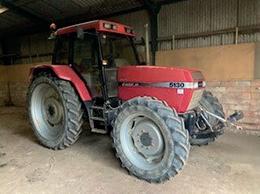
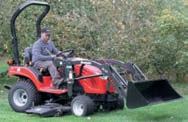
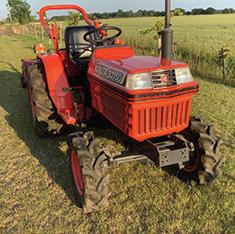




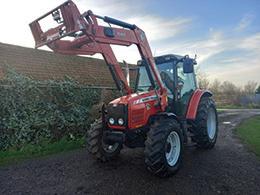

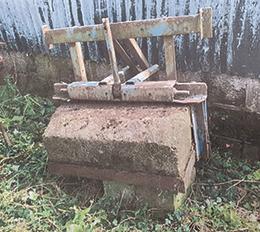
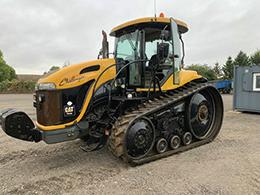


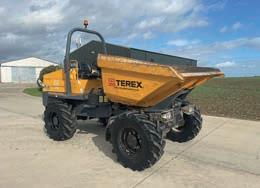


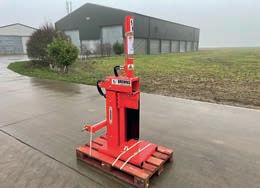
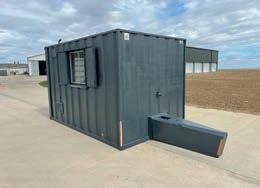











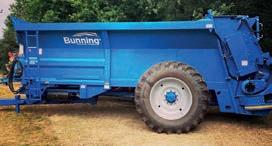


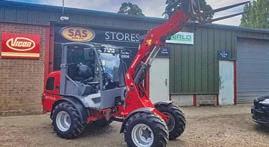



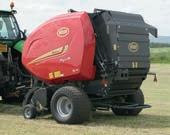

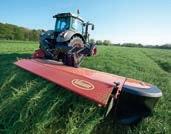









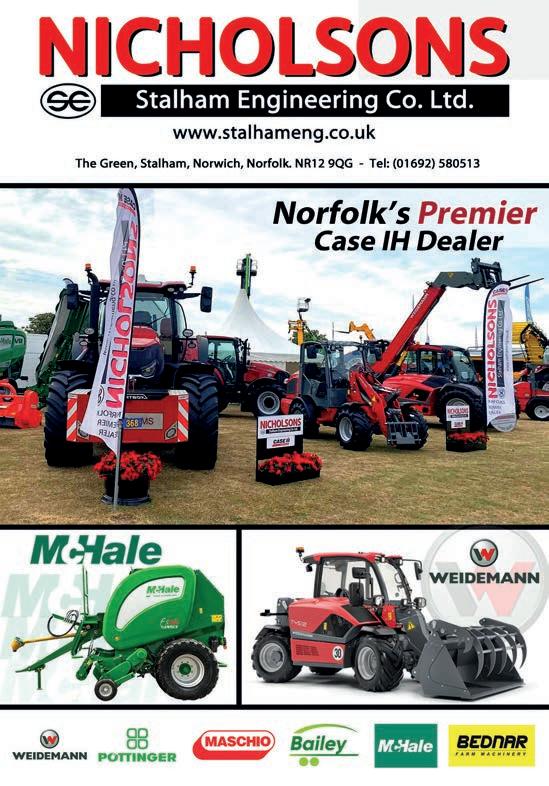

























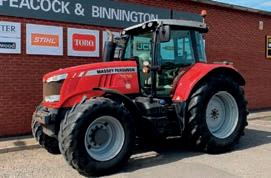
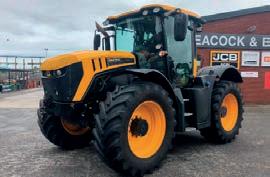
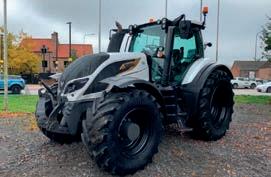

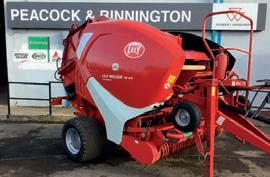




















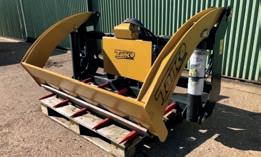

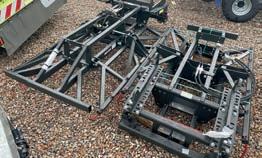
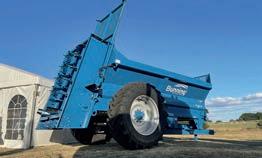
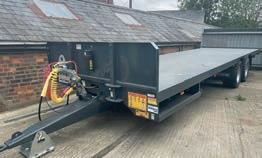




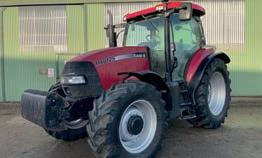


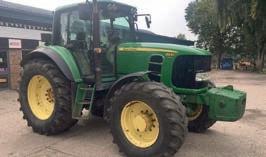
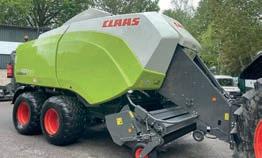



JOHN
DEUTZ-FAHR 7250TTV, 263hp, 2015, 5050hrs, TopCon RTK with variable rate & section control, new tyres all round end of August, good condition. £50,000+VAT ono. B Brown Tel 07734 603064 (Cambridgeshire)
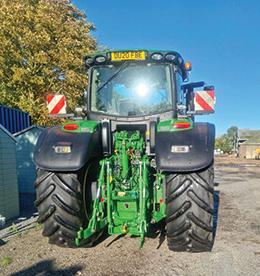
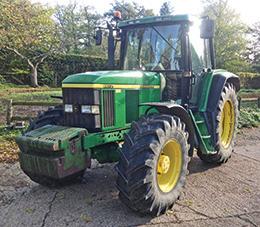












JOHN Deere 6610, 2000, Powerquad 40k, tyres 80%, non TLS, 3600hrs, exceptional condition, genuine original tractor. £32,000+VAT ono. N Ridley Tel 07802 695311/01233 770435 (Kent)


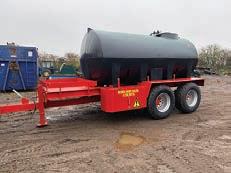




2015 Fendt 724 Profi Plus, 240hp, 7500hrs, owned by us from new, one driver, full Fendt dealer service history, GPS receiver with 10.4” screen, front linkage, good condition. £69,995+VAT ono. M Naylor Tel 07970 576362 (Lincolnshire)
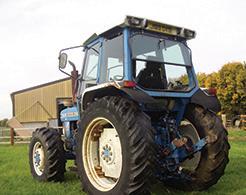
JOHN Deere front weight, 1150kg good condition. £1,000 ono. M Balls Tel 07771 975952 (Norfolk)
JOHN Deere 7250R, 250hp, 4700hrs, 2015, E23 gearbox 50K, 4 spools, autotrac with Starfire 3000 dome, 4700hrs, very clean & tidy, full w/o, Active seat, 710/75/42 r/tyres 75%, 620/75/30 f/tyres 50% Michelins, can arrange delivery. £78,000+VAT ono. L Arnold Tel 07771 888624 (West Midlands)
JOHN Deere 6820, 2003, 8859hrs, 1 owner from new, A/Q 40kph, f/w John Deere Autotrac Universal steering kit 200 (can supply with or without), c/w brackets, mounting, etc for GreenStar & Starfire 3000, gwo, but some bodywork damage. £25,999+VAT ono. C Bruce-White Tel 07810620741 (Wiltshire)
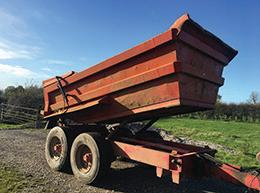

FORD 7610 Series 3 Super Q, J reg 1992, 1 owner, 4wd, gwo, 2 spools, new seat & battery, f/ tyres as new, rears sound but treadless, any trial welcome, good example of one of last Ford Pocket Rockets, for sale due to ill health.
£14,500 ono no VAT. B Gould Tel 01638 663310/07407 084017 (Cambridgeshire)
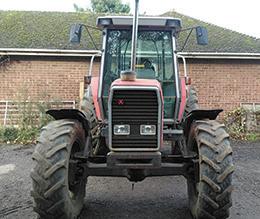
ZETOR Forterra 140, 2013, only 2500hrs, 40kph, very good spec, tidy. £32,500. L Rich Tel 07774 112211 (Gloucestershire)


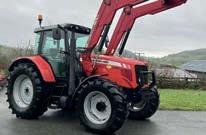
1990 Case 885XL 4wd, Quicke 2300 power loader with bale spike & bucket, pick up hitch, new tyres all round, 40kph gearbox. £12,500+VAT. K Ollett Tel 01359 270047/07753 859881 (Suffolk)
INDESPENSION Challenger 3KG, 6’6” x 14’, beaver tail, triple lock head,
JOHN Deere 6250R Ultimate edition, 250hp, 20 plate, 3732hrs, Command Pro, front linkage, hydraulic top link, Michelin tyres 600/70R30 & 710/70R42, excellent condition. £120,000+VAT ono. D Furnival Tel 07900 556496 (Kent)


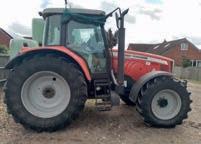
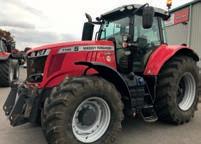


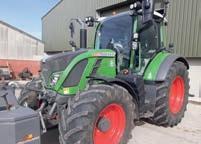




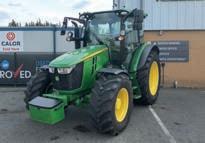
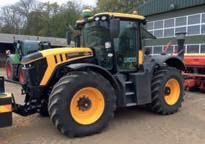


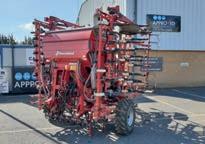


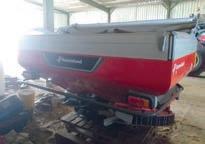




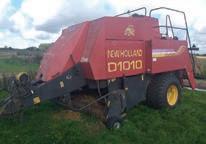
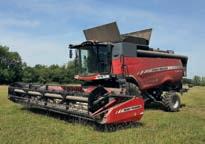
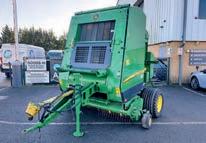

2020 Case Puma 165 CVX, with Case LRZ150 loader, 165hp, 2370hrs, CVX gearbox, front & cab suspension, air brakes & exhaust brake, 4 electric spools, 3 speed PTO, high visibility sunroof, LED light kit, air conditioning, electric mirrors, front tyres 540/65x28 at 70%, rear tyres 650/65x38 at 80% ................................................£72,500
2019 New Holland T7.225 Auto Command, 7996hrs, 175hp, 50kph, air brakes, front axle suspension, cab suspension, air seat, front linkage, continuously variable, mid mount valves, part leather seat, guidance ready, Power Beyond, spool valve buttons on fender, front tyres 540/65x28, rear tyres 650/65x38.......................................£47,500
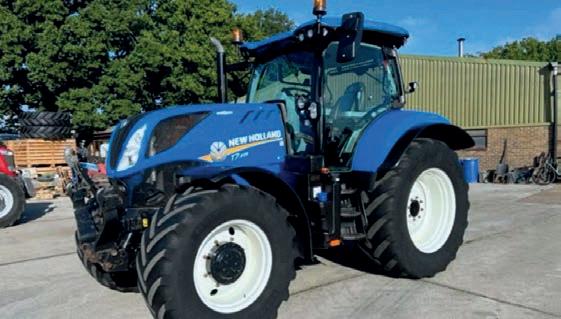

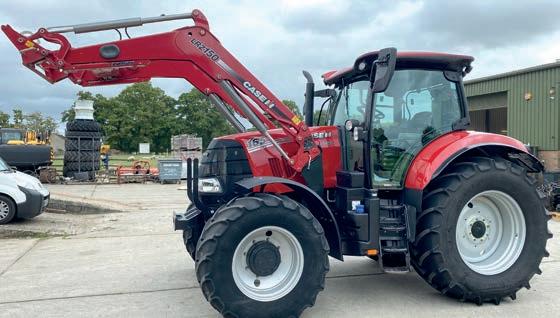
2015 Massey Ferguson 7718 Dyna 6, 6939hrs, 180hp, front axle suspension, cab suspension, front linkage, 1 front service, 4 spool valves, front tyres 14.9x28 30%, rear tyres 18.4x38 50% Firestone, very tidy a credit to the driver ............................£39,000
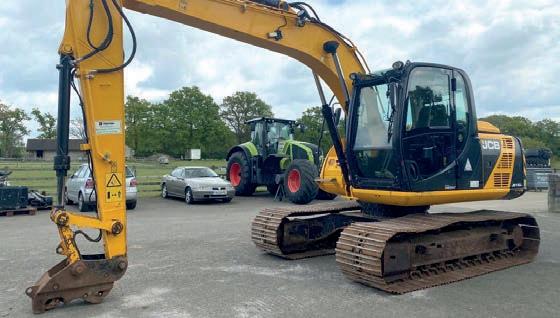

2013 JCB JS130, 9171hrs, Serial Number JCBJS13EP02133667 with Quicke hitch, check valves, 30% undercarriage .....£23,000
WANTED: Kuhn Mergers
Kuhn FC283 mower/con 2004 £4,200
Dowdeswell DP100S 3+1+1 plough £1,850
McHale 998 bale wrapper 2007 65k bales ready to work £12,995
Claas Liner 3000 4 rotor rake elec controls tidy machine £9,450
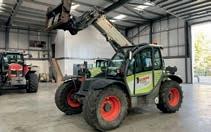
Galucho RDA 660 trailed press c/w Vaderstad 2 row tine kit £4,950
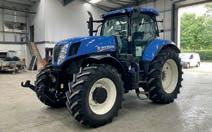

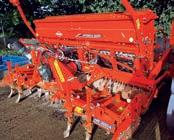
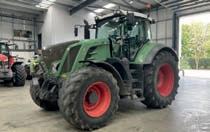
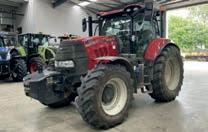

SAM 24m self propelled sprayer 1995 L reg 5 cyl Deutz engine £4,250
Kuhn FC303 YGL trailed mo/co tidy heavy duty mower £5,750

Various trailers in stock................................................................................................................ POA
He-Va folding 5 leg subsoiler very HD hyd breakback £8,250
Malone 6’ pasture toppers new in stock & ready to go £1,175 each
New pallet carriages from £450
New Malone post bangers, side & t/l tilt...............................................................................£2,995
Kongskilde Delta cultivator, 2008 £4,250
Choice of Gard 6m folding disc harrows £3,995 each
Amazone Centaur 3001 3m cultivator £4,995
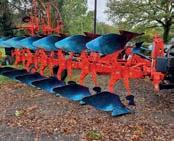
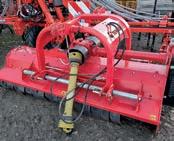




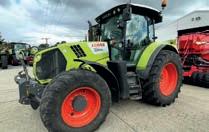

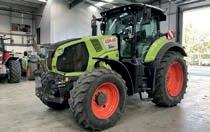


Maschio Aquilo 5m power harrows 2013/2015 from £10,950
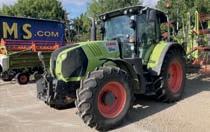
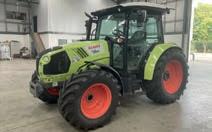


Kubota GR1600 ride on mowers, choice £3,650

Perkins 6.354 powered irrigation pumps, choice of 8 POA
Claas Volto 770 6 rotor tedder £4,450

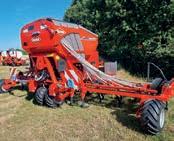
Claas Liner 350S single rotor rake £2,250
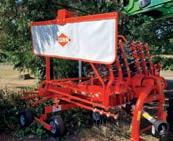
Kongskilde Delta 4m cultivator £3,750
Zetor 7340 c/w quicke loader 2700hrs air con £12,950
Browns 3 leg sub soiler vgc £2,650
Knoche ring rollers 6.1m, vgc breakers £5,750
Merlo P35.12k 12m handler front legs sway etc, in test ready to go £13,450
Conquip tipping skips many available from £200
Honda Foreman 450 Quad 2014 ‘64 plate £3,995
2x Amazone Z-AM2200 SBS spreaders 2008 3700kg from £1,995
Walter Watson subsoiler



















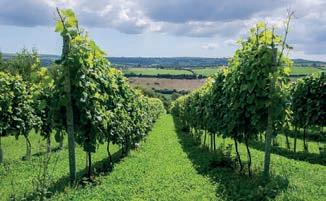



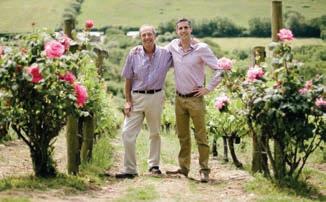









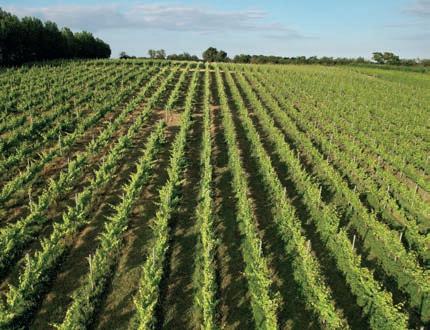



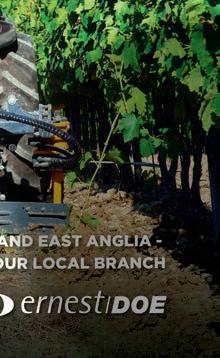



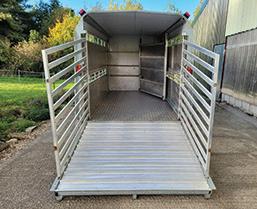



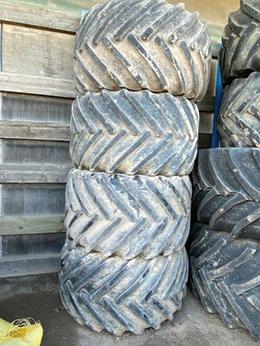











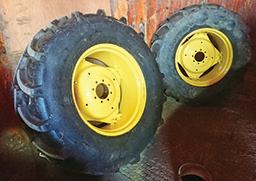
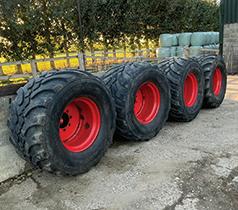
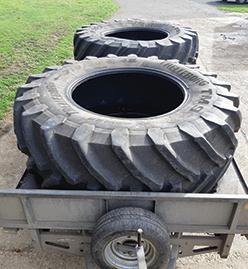

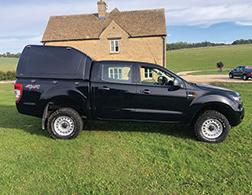







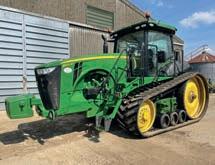
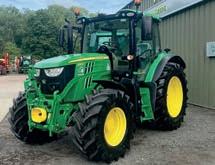
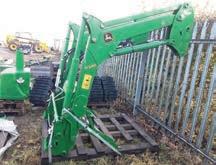

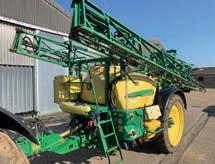


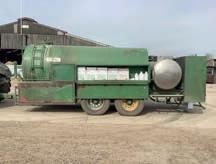
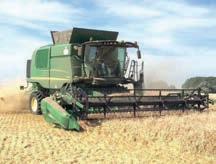
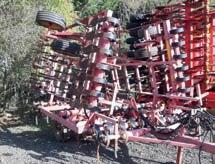




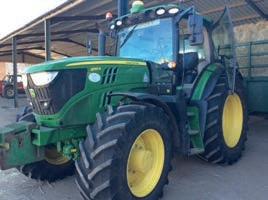

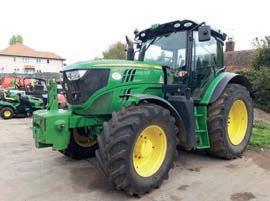

IFOR Williams pickup canopy, fits Ford Ranger 2006–2011. £150. P Astill Tel 07751 500081 (Leicestershire)
VW Golf 1.6 Match TDi, 2019(68), 62,000mls, 5 door hatchback, manual, full service history, touch screen sat nav, alloys, cruise, sensors, excellent condition. £11,500+VAT. N Cowell Tel 07887 480579 (Essex)

HANDMADE by local carpenter, dog box fits a Discovery 4 & possibly other 4x4s, 106cm wide, 88cm high & 100cm deep, excellent condition, 2 front drawers for cartridges, dog equipment, etc & a bottom compartment for wellies. £250 ono. A Robinson Tel 07876 711477 (Bedfordshire)

2004 Isuzu Trooper Commercial, SORN off road 1st Oct no MOT, runs fine, still in use on farm, new vehicle purchased hence sale. £1,000+VAT ono. K Terry Tel 07785 916061 (North Yorks)





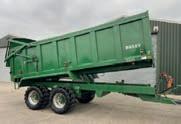
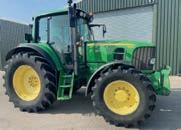






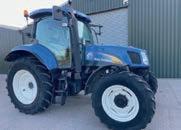
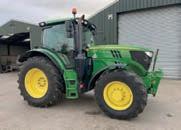
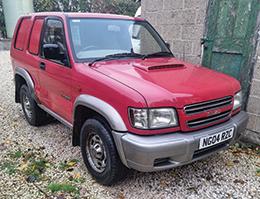
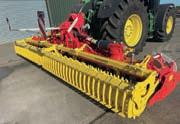


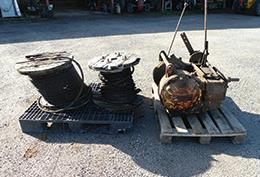
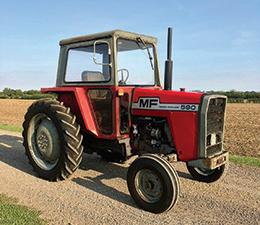



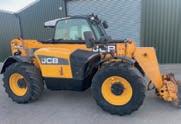



LAND Rover Discovery HSE Sport TD4 auto, 66 reg Dec 2016, black, 2L diesel, emissions 139g/ km, 45500mls, 7 seats, leather seats, sat nav, park sensors, camera, full MOT & service, plates changed to original, excellent condition. £20,200 ono. G Adams Tel 07885 964461 (Cambridgeshire)
FREELANDER 2 Diesel HSE 2008, MOT til mid March, 167k, 2 former keepers, leather, climate & cruise
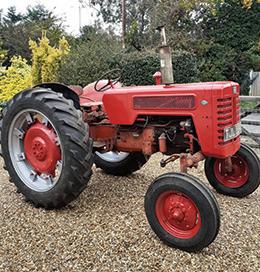
£3,250 no VAT. R Diss Tel 07788 928065 (Essex)
BROUGHTON
MASSEY Ferguson front weights to fit MF 2640, 2680 or 2720 range. £22. D Leigh Tel 07876 770545 (Northants) FERGUSON cultivator & earth scoop. £375 for the pair. D Leigh Tel 07876 770545 (Northants) TASKER Till Train, disc-tines-disc, 3m wide. £2,850. D Leigh Tel 07876 770545 (Northants) 1983-84 David Brown 1490 2wd tractor, pick up hitch & drawbar, 3-point linkage, just needs some TLC. £3,845. D Leigh Tel 07876 770545 (Northants)



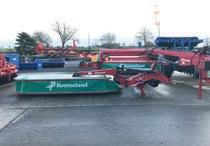





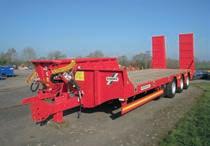














FRONT weights (6) for a Renault tractor. £55 each, no VAT. C Flatters Tel 01775 640112 (Lincolnshire) 1988 Kramer 312 small loading shovel, c/w fork, bucket & single bale spike. £4,780. D Leigh Tel 07876 770545 (Northants)
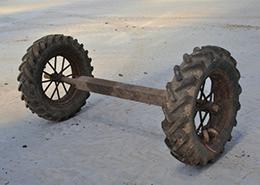


INTERNATIONAL
DAVID
BAMFORDS
NEW

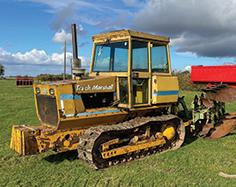
CAT D4C c/w blade, brand new tracks, rollers, idlers, sprockets. Ring for details. H Ashton Tel 07831 588318 (Lincolnshire)


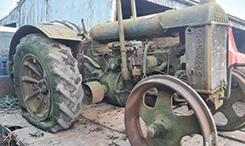
FERGUSON
PZ
INTERNATIONAL

FORDSON
(Worcestershire)
THRESHING machine - WM Foster & Co Ltd, Lincoln, 4.25t, 160rpm. £1,250. M Osgerby Tel 07740 779130/07506 855295 (East Yorkshire)
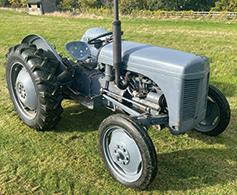
VINTAGE hand-operated mangold grinder. Stallard Farms Ltd Tel 01531 890350 (Gloucestershire)
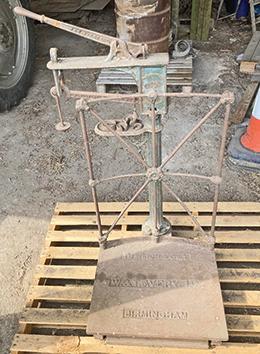
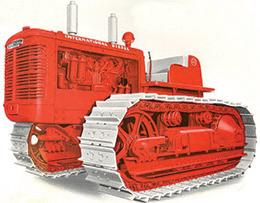
DIESEL fuel pumps, two Minimec, one Simms, will fit some Fordson Majors, Masseys, etc, Simms possible recon, sold as seen. £30 the lot. RL & LH Baker Tel 07879 885505/01406 330782 (Lincolnshire)

FERGUSON single furrow butterfly plough. £200. R Parker Tel 07973 297404 (Derbyshire)




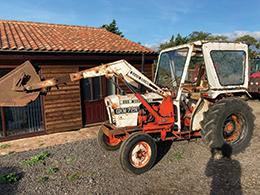
MASSEY Ferguson 41 3 furrow plough, discs & skimmers complete. £400. R Parker Tel 07973 297404 (Derbyshire)
BRISTOL

BARN scales with weights, good condition. £80. S Jones Tel 07796 001370 (Norfolk)
HONDA
INTERNATIONAL TD18 crawler, South Cambridgeshire area. Photo for guidance. E Baron Tel 07989 343493 (Hertfordshire)
JONES Panascopic telehandler for spares, or sell mine needing some work. £3,100. J Weston Tel 07803 270448 (Lincolnshire)
FORD Mk2 Consul, or Mk1 Capri, or Consul Capri. J Weston Tel 07803 270448 (Lincolnshire)
KRM spreader vanes required, in good condition, L1 & L2, for spreading at 18m. N Howe Tel 07867 787785 (Norfolk)
STEERING ram for Gem SelfTrak trailed sprayer. Hallam Tel 07704 797734/01509 881191 (Leicestershire)
DE-AWNING plates to fit New Holland 8080 old type. S Cooper Tel 07955 530673/07977 015345 (Lincolnshire)





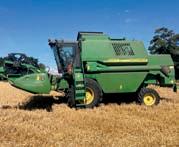
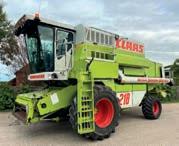


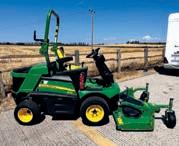
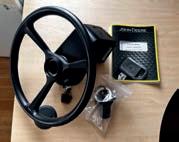






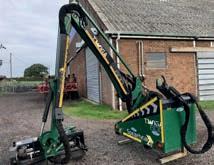
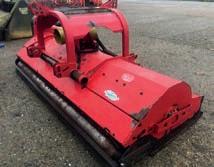
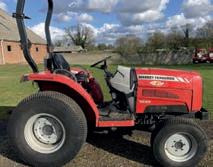
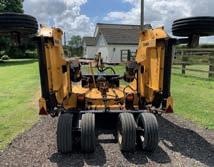
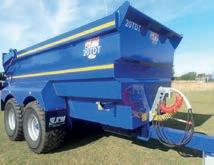






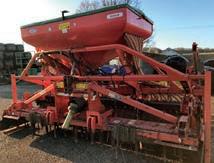
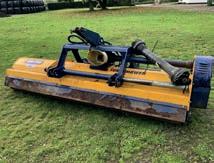



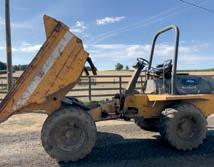




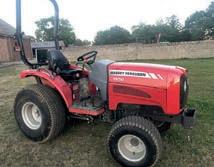
NEW Holland TX62, 64 or 65 Series combine with low hours, must be a tidy, clean machine. F Holohan Tel 07496 734212 (Cambridgeshire)
THE 2 thick V belts that drive the drum on an old Ransomes 801 combine, both belts are the same, part NU TBA3135. C Flatters Tel 01775 640112 (Lincolnshire)
REAR linkage for McConnel Shakaerator. W Brown Tel 07812 018467 (Shropshire)
CONCRETE mixer, 5/3.5cu/ft, older type on 4 wheels, diesel engine, must be a good starter please. R James Tel 01263 837569 (Norfolk)
POTATO box tippler, static or loader mounted, anything considered; also potato bulker trailers. B White Tel 07802 450947/01473 312234 (Suffolk)
LOADER
WOODEN grain walling, T shape or right angled. S Cooper Tel 07955 530673/07977 015345 (Lincolnshire)
DISUSED 30' x 9' fertiliser tank required for water storage, Norfolk area preferred. J Wilson Tel 01263 822241 (Norfolk)

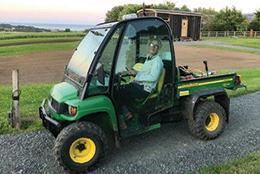



DAVID Brown 1210 or 1212 tractor, older type preferred. J Scott Tel 07745 558768 (Stirlingshire)



LARGE sliding top circular saw or Stenner/Forestor bandsaw for ripping down tree trunks to boards/rails, with or without engine or electric motor. R James Tel 01263 837569 (Norfolk)
FISHER Humphries Hedgehopper Procut
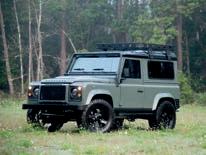

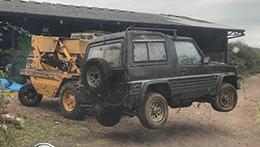

P Akers Tel 01666 860470/07818 047329 (Wiltshire)

FOUR-POST car ramp jacking beam, 2–3t. P Broome Tel 07967 136138 (Northants)

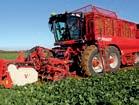
DOES any one have or no of an abandoned Ransomes 801 combine harvester within a 70 mile radius of south Lincs? i could do with some spares to keep mine running, before they all go to the scrap yard. C Flatters Tel 01775 640112 (Lincolnshire)


POTATO boxes for seed required, 120 x 1.25t, nearer to Spalding the better. C Sly Tel 07973 188977 (Lincolnshire)
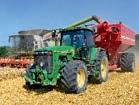
KAWASAKI working or not working. J Cunningham Tel 07860 145580 (Essex) 12.5/80-15 Maddever Tel 07778 156663 (Suffolk)
LOADER tractor. H Taylor Tel 07763 125574 (Buckinghamshire)
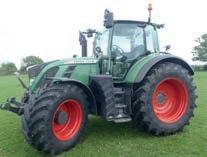

TYRES & wheels, 11x28 closed centre. F Jennings Tel 07964 630697/01535 633695 (North Yorks)
WHEEL & arm required for Howard 80" rotovator; also lids & blades. F Jennings Tel 07964 630697/01535 633695 (North Yorks)
SINGLE phase 1hp electric motor, with or without electric stop/start board, working order. R James Tel 01263 837569 (Norfolk)
PAIR of hydraulic side markers for combination drill 3m/4m. S Croft Tel 07890 722347 (East Yorkshire)
DE-AWNING plates to fit New Holland 8080 combine. S Cooper Tel 07955 530673 (Lincolnshire)
KVERNELAND Mini Air for drilling onions. D Brown Tel 07710 316205 (Cambridgeshire)
DAVID Brown/Case 1594 cab or complete tractor, condition not important, 2 or 4wd. H Ashton Tel 07831 588318 (Lincolnshire)
QUINOA GROWERS WANTED to produce organic & conventional quinoa grain under a buy back agreement. We would like to hear from growers with quality fertile soils,
Adama Agricultural Solutions UK Ltd. has appointed Henry Passmore as a new account manager within its commercial team.
As the nal member to join Adama’s extended commercial team, Henry, who is based in Norfolk, joined the company on 1st October and is responsible for developing and delivering its commercial strategy – working closely with key buyers and commercial managers in the UK, notably with ProCam and
Hutchinsons.
Henry’s agricultural career began eight years ago when he joined British Sugar via the company’s graduate programme. During his tenure there he held various roles including contracts manager, where he was responsible for working with growers to develop the sugar beet production area. More recently, he was the agricultural operations and logistics manager for the company’s Cantley factory in Norfolk.
Henry is BASIS and FACTS quali ed and holds a BSc Hons degree (2:1) in Agronomy from Newcastle University.
Omex Agriculture has appointed Neil Hayne as district sales manager for South Wales and the South West of England, including Devon and Cornwall, Gloucestershire and Wiltshire.

Neil comes from an agricultural background, has a degree from Seale Hayne and over 20 years’ experience in fertiliser sales with companies such as Timac Ltd and ACT, as well as a national role with Alltech’s crop science division. Omex says he is perfectly placed to maintain and build the Omex brand
in an area of the country that has seen signi cant growth in arable and grassland sectors recently.
A key task for Neil is to facilitate the huge interest from the livestock sector, in particular for liquid fertiliser, and support the transition from traditional farm applied granular fertiliser systems to one that increasingly relies on contractor services. Ease of use, ability to forward book product, and an increase in arable yields as well as grass and maize production and milk yield, are the main reasons why farmers are switching to Omex liquid fertiliser, the company says.
Agricultural sciences company FMC has appointed three new team members – Michael Farr, Alex Borthwick and Mat Hutchings Michael Farr, who holds both BASIS and FACTS quali cations as well as a strong background in new product development, joins the team as key account manager. In his new
role, he will be managing commercial distribution accounts and working alongside FMC’s technical team.
Meanwhile,




Mr Borthwick has joined FMC as commercial technical manager for the Lincolnshire and North Yorkshire region. He holds the BASIS Diploma in Agronomy and FACTS, has a background in

Dr Grace O’Gorman has joined CIEL (Centre for Innovation Excellence in Livestock) in the new role of animal health specialist.
A former senior technical policy manager with the National O ce of Animal Health (NOAH), Dr O’Gorman will work closely with CIEL’s network to identify animal health priorities and develop new research opportunities across the livestock sector.
Her appointment comes following a period of growth at CIEL, leading to the creation of a new role
Northern Irish Simmental breeder Norman Robson of, Ballyclare, Co Antrim, has been announced as the society’s new president. He was elected after the society’s recent AGM in Stirling and takes over from Stewart Stronach, who has completed his two-year term of o ce.

Mr Robson is the third member of the Robson family to serve as BSCS president, with his father Billy holding the position in 1985-1986, and 19992000; and his brother Michael being
independent agronomy and farm management, and brings a wealth of both practical on-farm and scienti c knowledge.
He will be working in the technical team to support distribution customers to provide solutions to suit their farmers’ needs.
Mr Hutchings also joins as a
to further enhance the research and innovation part of the organisation.
Dr O’Gorman says she is excited to join CIEL during an interesting time for the agrifood sector as it faces the challenges of climate change, rising costs, new regulations and trade negotiations.
She says her experience at NOAH, where she provided technical and public a airs expertise to the organisation’s executive and membership, will aid her in her new role.
For more about CIEL and its animal health activity, contact Dr O’Gorman at grace.ogorman@ CIELivestock.co.uk
president between 2011-2012.
Operating as a family partnership, Kilbride Farm is a traditional mixed farm with a 300-sow birth-to-bacon single site pig unit being a backbone, alongside the pedigree Simmentals.
The Kilbride Farm Simmental herd, now consisting of 90–100 Simmental cows, is one of the most recognisable names in the pedigree beef sector, with a highlight reel track record of selling bulls and Simmental genetics through home and society sales to pedigree breeders and commercial producers in the UK and to international markets.
commercial technical manager, based in the South of England. After working in an agronomy business for the last six years, he has an extensive understanding of the arable sector, and good experience of a customerfacing role. Working with the team he will deliver technical brie ngs and provide e ective solutions for growers in the South.
Contact the FMC technical team on 01423 205011 or fmc-agro.co.uk
Oliver Landpower are a long standing family business with nearly 200 years of experience. Olivers have been JCB Agriculture dealers for over 30 years and has gone from strength to strength since that time. The last year has seen significant growth resulting in an expanded sales territory and the addition of two new branches at Stratford-upon-Avon and Colchester. This growth has resulted in exciting new opportunities within Oliver Landpower and we are looking to appoint a number of new dedicated staff in the following roles:
An opportunity for an experienced Sales professional to join our established team in the Essex area.
This is an exciting role for the suitable candidate who should possess good communication skills
An opportunity for skilled and highly motivated Service Engineers to join our service department.
Key responsibilities include:
• Service and maintain JCB and other agricultural machinery to the manufactures specifications and to ensure machine reliability and safety.
• Have a keen eye for detail, reporting machine defects and upselling the services provided by the company wherever possible.
• Successfully diagnose and rectify electrical,
You will play a vital part in supporting the full range of JCB machinery and other key franchise equipment. The ideal candidate will have excellent communication skills and be well organised. The role will involve ordering and despatching parts to support both the customer base and engineers in our Service department.
and have practical experience with modern farm machinery with an understanding of current and future farming needs.
Full product and skills training will be provided. A comprehensive package with company vehicle, laptop, iPad and mobile phone provided.
hydraulic, powertrain and various other faults prior to initiating and completing a repair.
• Operate diagnostic software via a laptop computer when required (training will be given).
• Complete a detailed report of work completed along with supporting photographs and documenting of all worked times.
A background in agricultural, construction or commercial vehicles and the willingness to work the hours required to get jobs completed will be an advantage. Full product training will be provided for the right candidate.
A Service Van, Mobile Phone and Laptop with the latest diagnostic software are provided.
You will regularly liaise with and speak to other departments as well as our franchise partners, playing a vital role in the company’s success by ensuring our customers receive the very best care and service.
You should be well organised, preferably have some agricultural machinery experience ideally in a parts environment, but not essential, and be able to work both on your own initiative and as part of a team.
If you would like to move forward with a highly successful dealer allied to market leading global brands, we would like to talk to you.
If you feel that you have what it takes to join our team in any of these exciting new roles, please apply with a full CV to: jobs@oliverlandpower.co.uk stating the role you would be interested in.
Kings Langley Tel: 01923 265211
All enquiries are treated in the strictest confidence. Oliver Landpower Ltd are an equal opportunities employer.
Luton Tel: 01582 727111
www.oliverlandpower.co.uk
Tingewick Tel: 01280 848494 Stratford Tel: 01789 720265
@OliverLandpower

Altek International is a member of the Bertolini group, responsible for the sales of Altek, Bertolini and Lechler agricultural sprayer components throughout the UK.
We have new opportunity for a SALES MANAGER to join the Altek team. The successful candidate will possess excellent communications and IT skills, have a good understanding of agricultural sprayers, be self-motivated with a hands-on mentality.
Working closely with our sales & marketing managers in the UK, Germany and Italy, you will build strong relationships with sprayer manufacturers to identify Altek products that will match their requirements. In addition, you will grow the sales of Lechler agricultural products throughout the UK.
We o er an excellent remuneration package including a competitive salary, incentives, pension plan, company car and attractive holiday entitlement.
If you would like to join the Altek team please submit your CV with covering letter to:

Dawn Boulton, Marketing Manager
The O ce, Timaru Farm Barton Road, Elsham DN20 0LS
Email: info@altekinternational.com Web: www.altekinternational.com
E ective from 1st November 2022, Agrifac UK Ltd welcomed Rob Thurkettle as the new managing director for the group. Rob’s role will complement the senior management team, taking ownership of business operations for the company, which currently represents crop spraying manufacturing brands Agrifac and Hardi.
Previously advancing his career within a number of high-pro le agricultural machinery dealerships, Rob takes the reins of Agrifac UK Ltd with extensive industry knowledge, experience and a keen passion for



agriculture, with the intention to further shape the business’s next chapter.
Rob began his career as a trainee farm manager, where he developed his initial passion for arable farming. Widening his knowledge and propelling his career forward in his chosen specialism, Rob later shifted his focus into a more commercial line of work, as he was appointed sales manager for a John Deere dealer, before moving into similar roles within AGCO and TopCon dealers, respectively. Most recently, Rob has built up his leadership portfolio within Sulky UK as managing director, putting him in good stead to guide the team at Agrifac UK into the future.

November 2020 as parts manager, having previously worked as parts supervisor at the Burdens Group North Kyme depot for 14 years. He began his new role on 1st October 2022, taking over from Keith Jones who now works with Sweden as a global aftermarket manager.
Agricultural Industries Confederation (AIC) has elected Chris Guest as its chair. As managing director of LS Plant Breeding Ltd and an active member of the AIC Board, Cambridgeshirebased Mr Guest brings a wealth of industry knowledge and experience to the role.
“Given the current economic and political turmoil, it is paramount that our industry’s voice is heard by Government and other relevant bodies with strength and conviction,” Chris commented.
“As the industry continues to
experience exceptional change and disruption, I know the AIC is working extremely hard to ensure members’ interests are represented and I am committed to doing all that I can in this regard.”
Chris takes over from Angela Booth, director of responsibility at AB Agri, who has completed her two-year term as AIC Board chair. As the immediate past chair, she will continue to serve as a Board member for a further year.
Robert Sheasby, chief executive of AIC, said: “Chris has been a prominent member of the AIC Board for four years, and I have no doubt that he will work tirelessly to promote members’ interests across UK agriculture and beyond.”
Sean Copeland is joining BDC Systems Ltd as regional sales manager covering the North of England.

“We always have a keen eye on ensuring that we are able to deliver industry leading levels of service and support to our existing customers at the same time as having the capacity to meet the grain handling requirements of new customers,” said Andrew Head, BDC Systems’ sales director.
Mr Copeland, who served his time as an apprentice engineer and

now with 18 years’ engineering experience across the agriculture and food processing industry, will be responsible for looking after BDC Systems’ existing customers and driving new business in the region –running roughly from Newcastle to South of the Humber.
“I want to reassure our customers who have a working relationship with our well established and successful regional sales manager for Scotland and Northern England, John Wilson, that there will be no change to his existing customer base. John will continue to service northern farming businesses down as far as Newcastle,” concluded Mr Head.
Agronomy rm ProCam has appointed Simon Montgomery as technical team lead for its Field Options division. Simon will be responsible for helping to bring the two operations of the business, Field Options and ProCam, closer together under one umbrella to deliver an improved service for customers and personnel.
Set up in 2004, Field Options markets a comprehensive range of forage seeds and associated products. The company also provides forage planning advice and supplies specialist fertilisers, silage inoculants and crop
protection agrochemicals to livestock farmers throughout the UK.
Simon worked as a seed specialist in the South West for Nickerson Seeds for the past 14 years. Prior to this he farmed in Zimbabwe, working in the dairy and beef sectors and growing a wide variety of crops including forage maize, soyabeans, groundnuts, eld beans, sun owers, tobacco, wheat, grass and seed maize.
He also spent three years growing cotton and maize in Tanzania, and graduated from the Royal Agricultural University with a diploma in Farm Management and a Master of Business Administration in Agriculture and Food Industries.
Adam, who is from a farming family, rst joined Vaderstad in
To get in touch with Adam, contact adam.bannister@ vaderstad.com or 07917 491700.
www.












